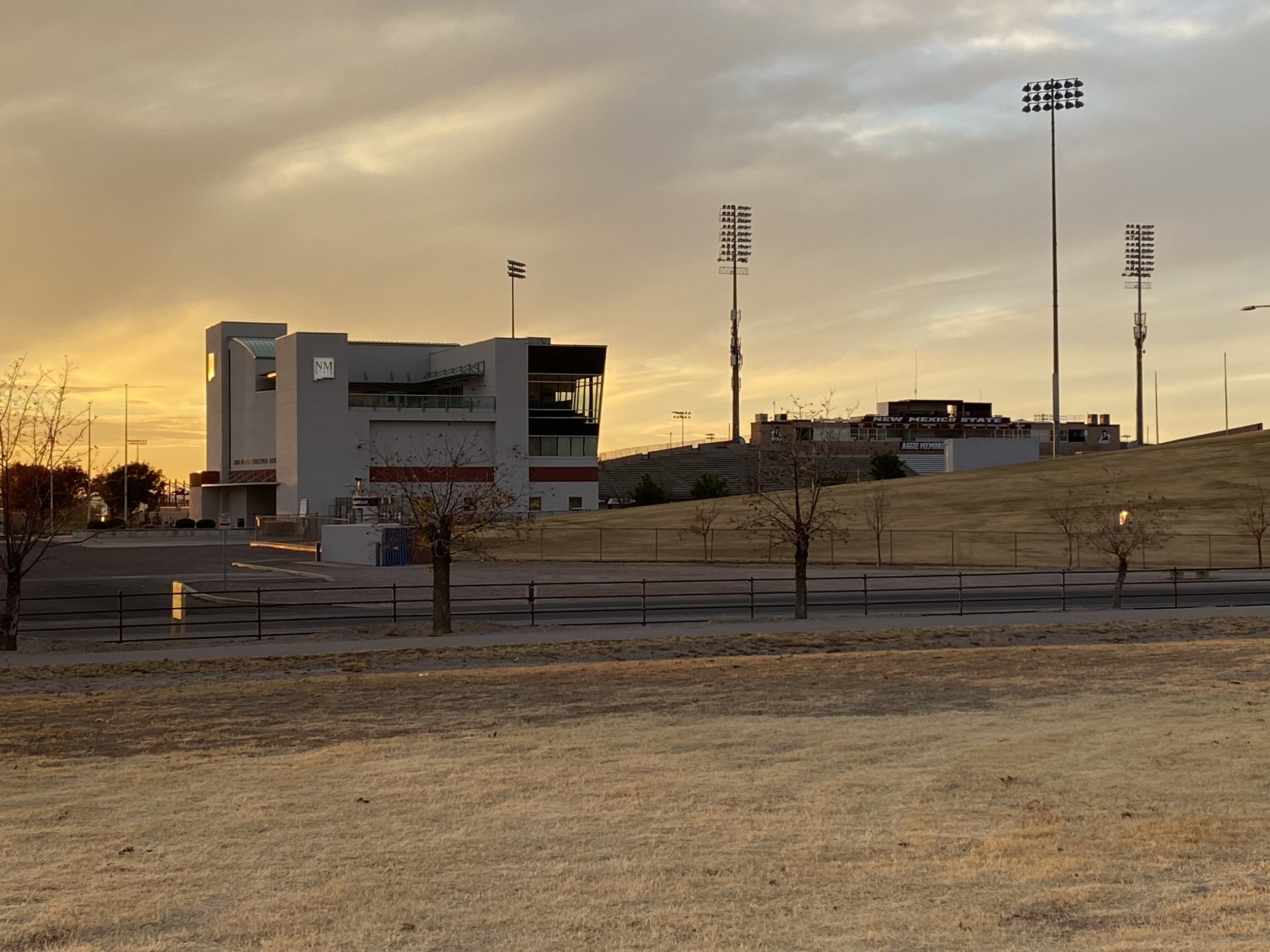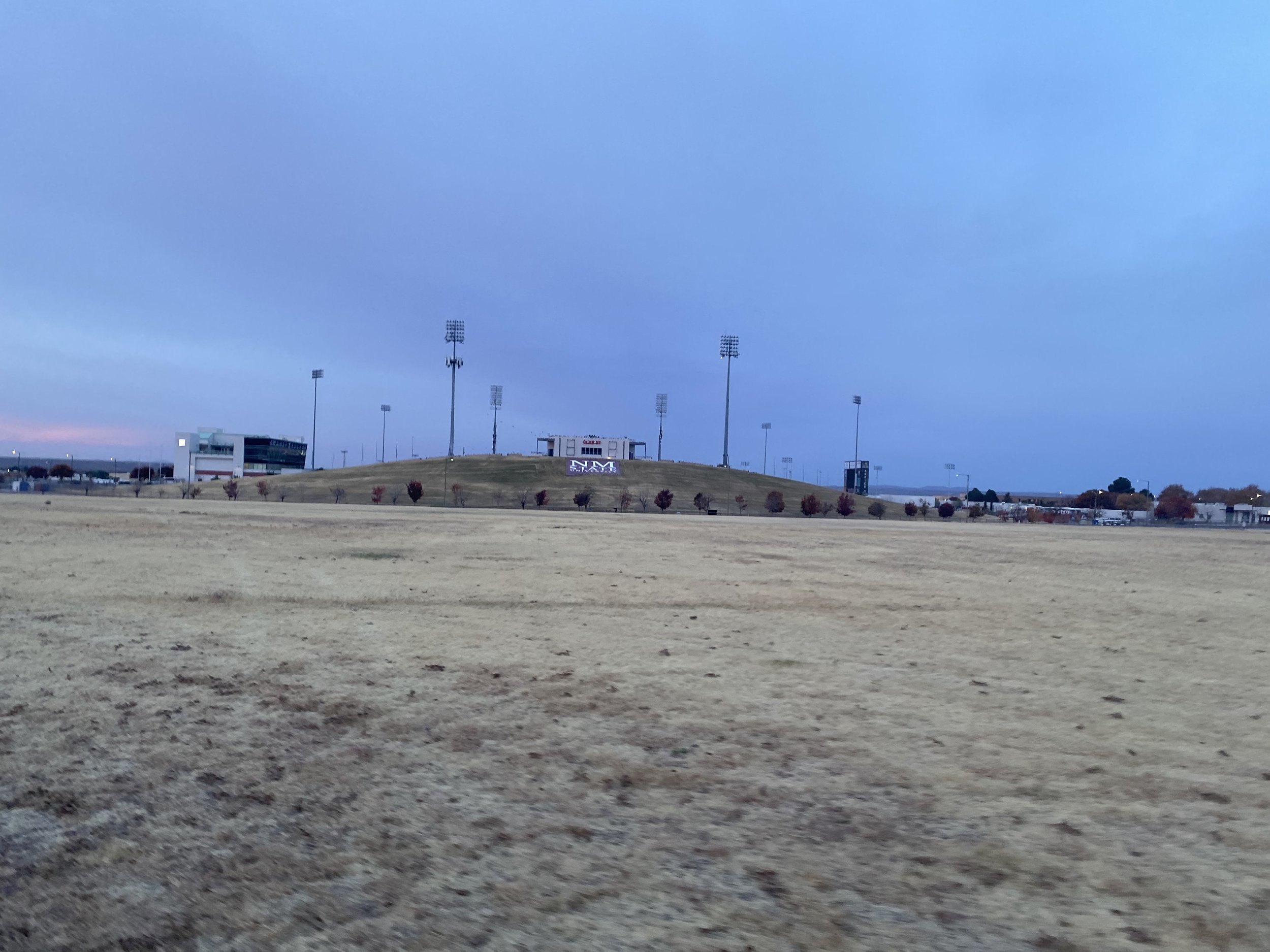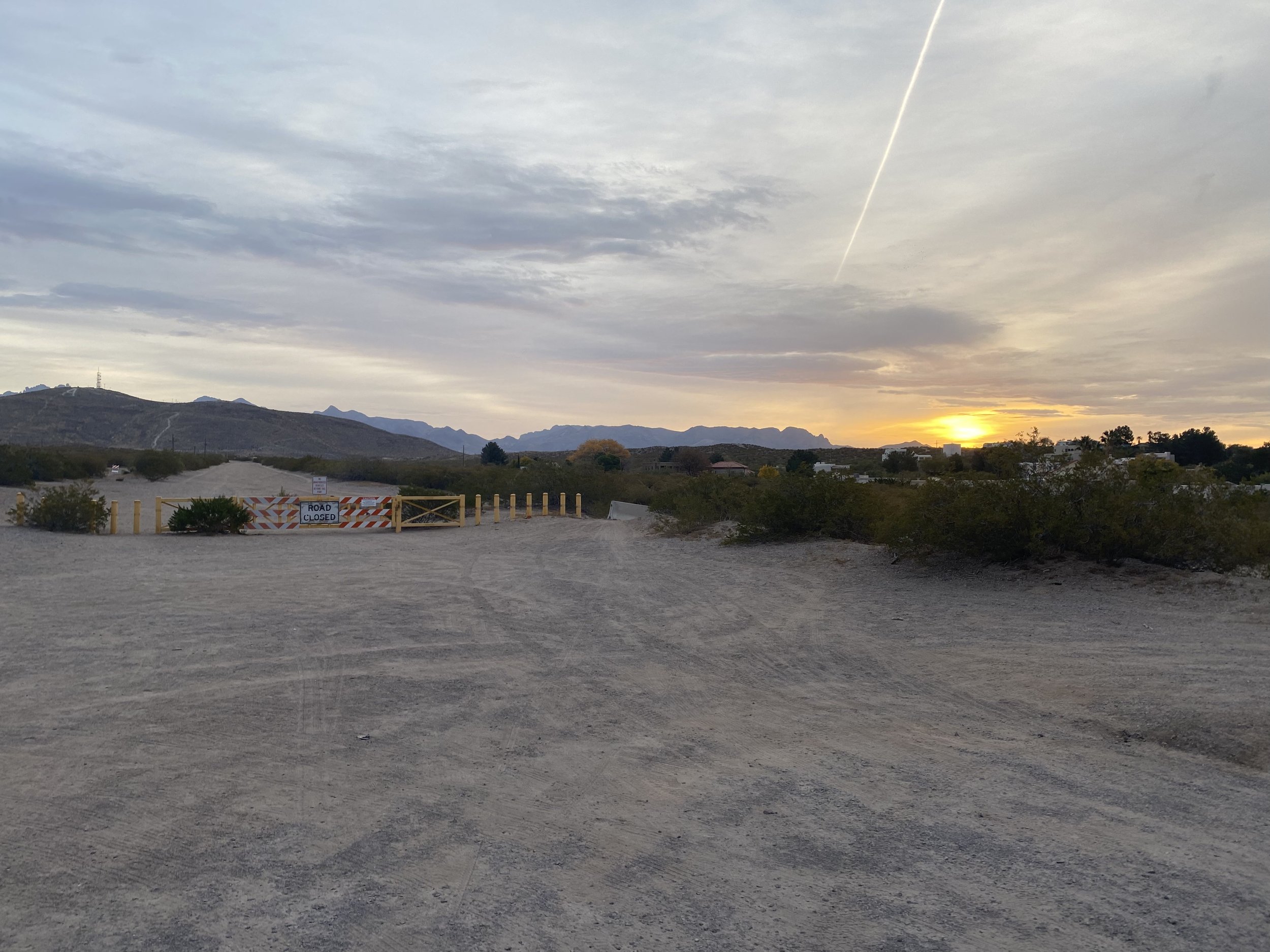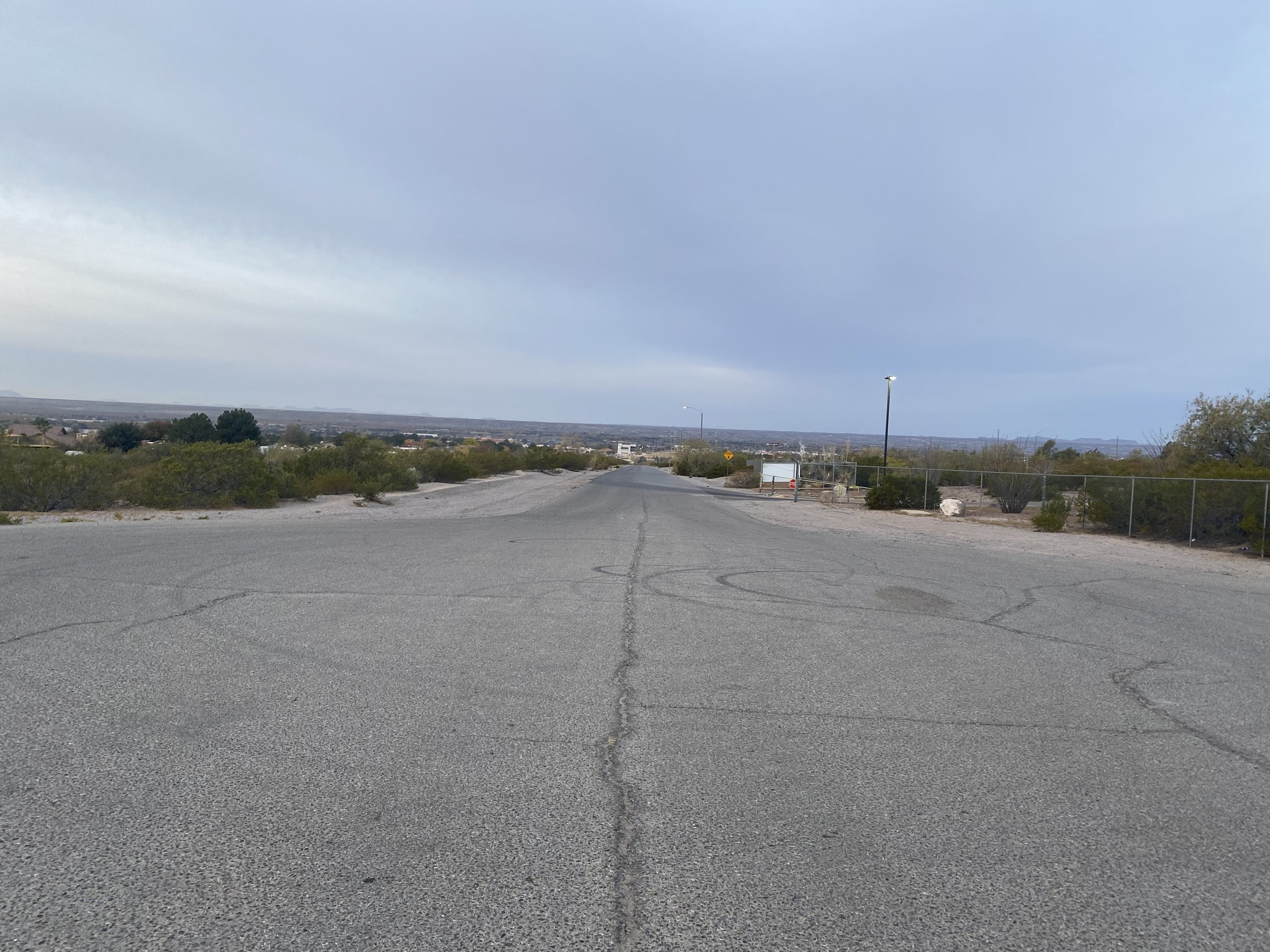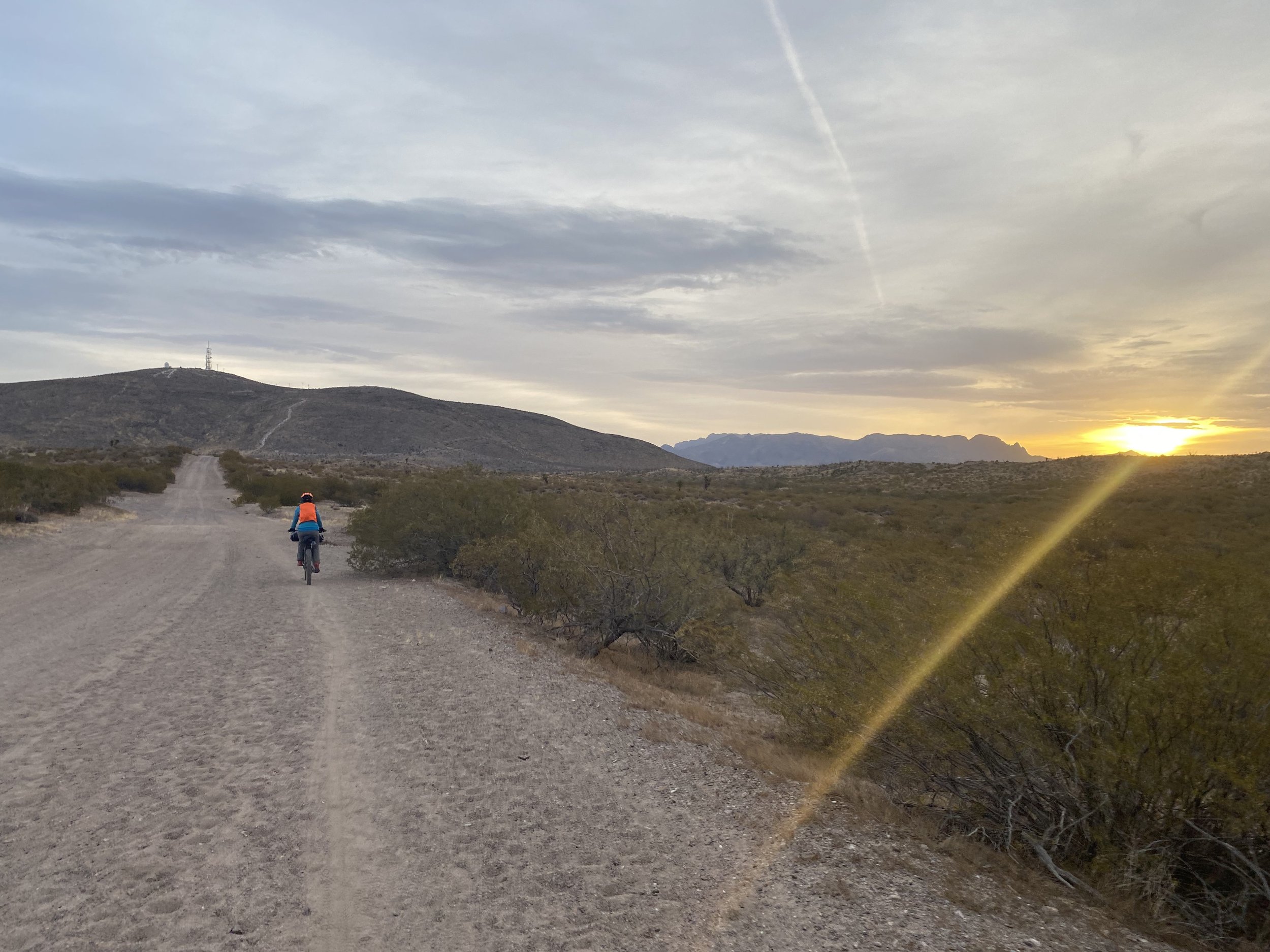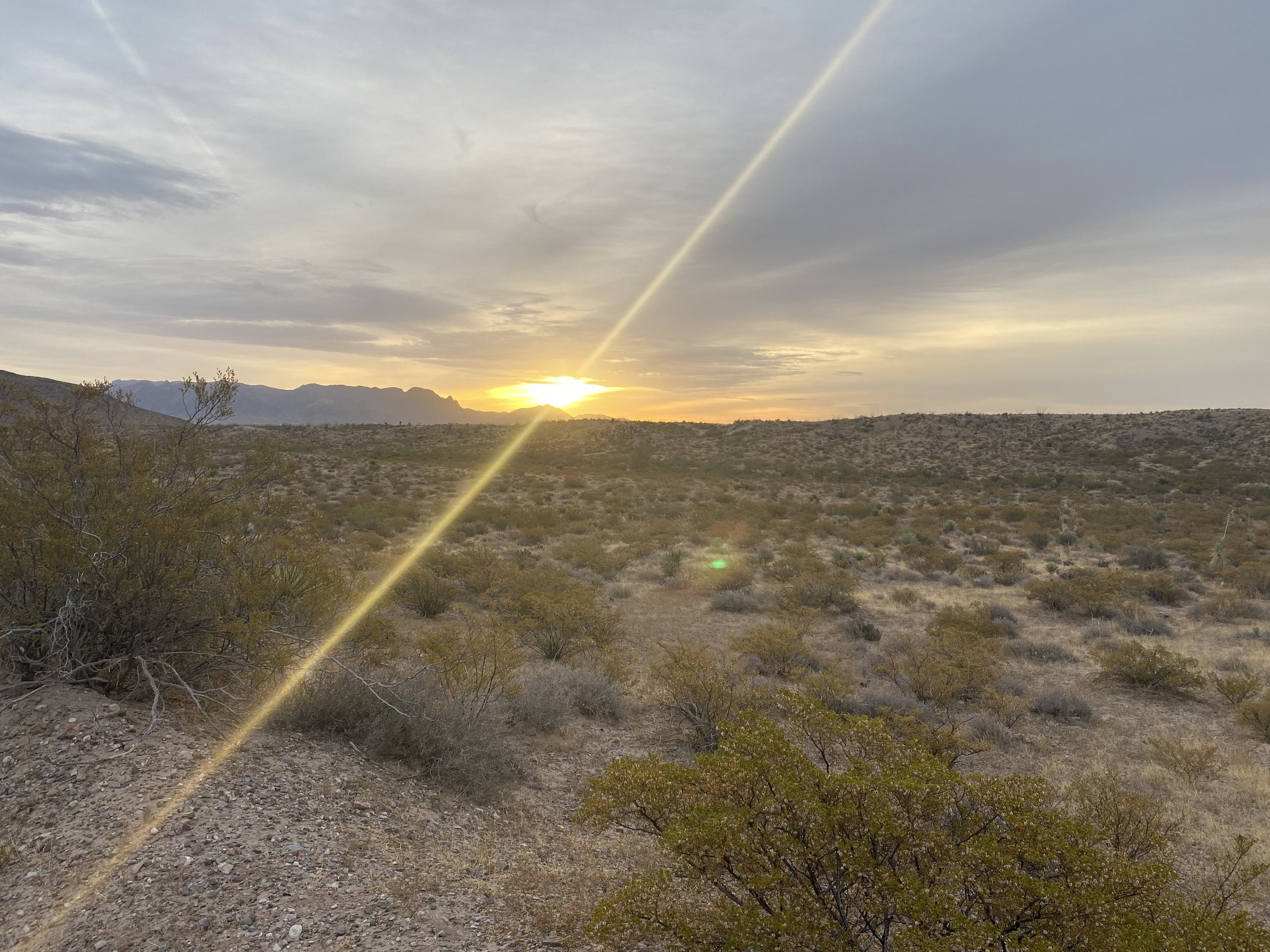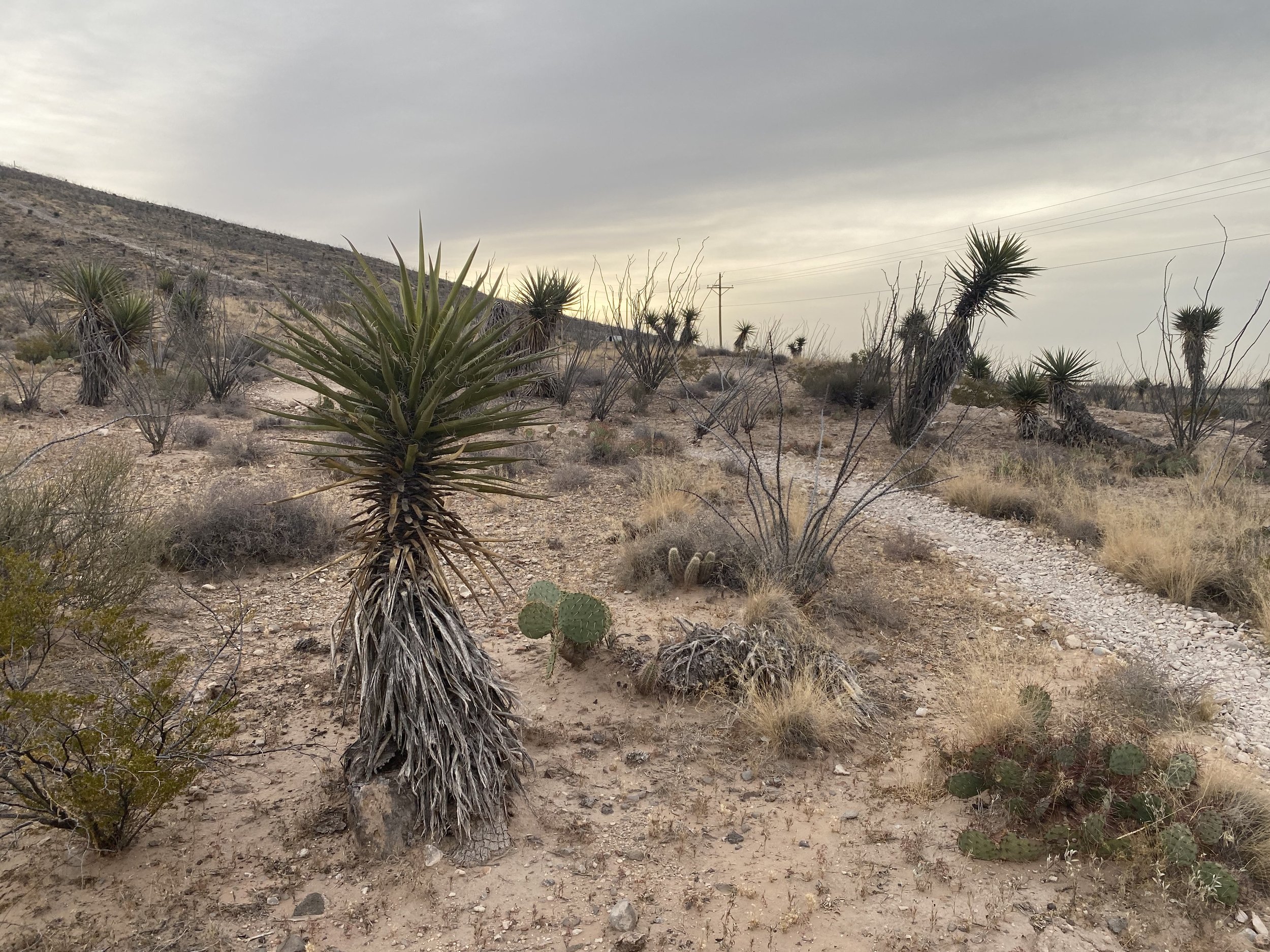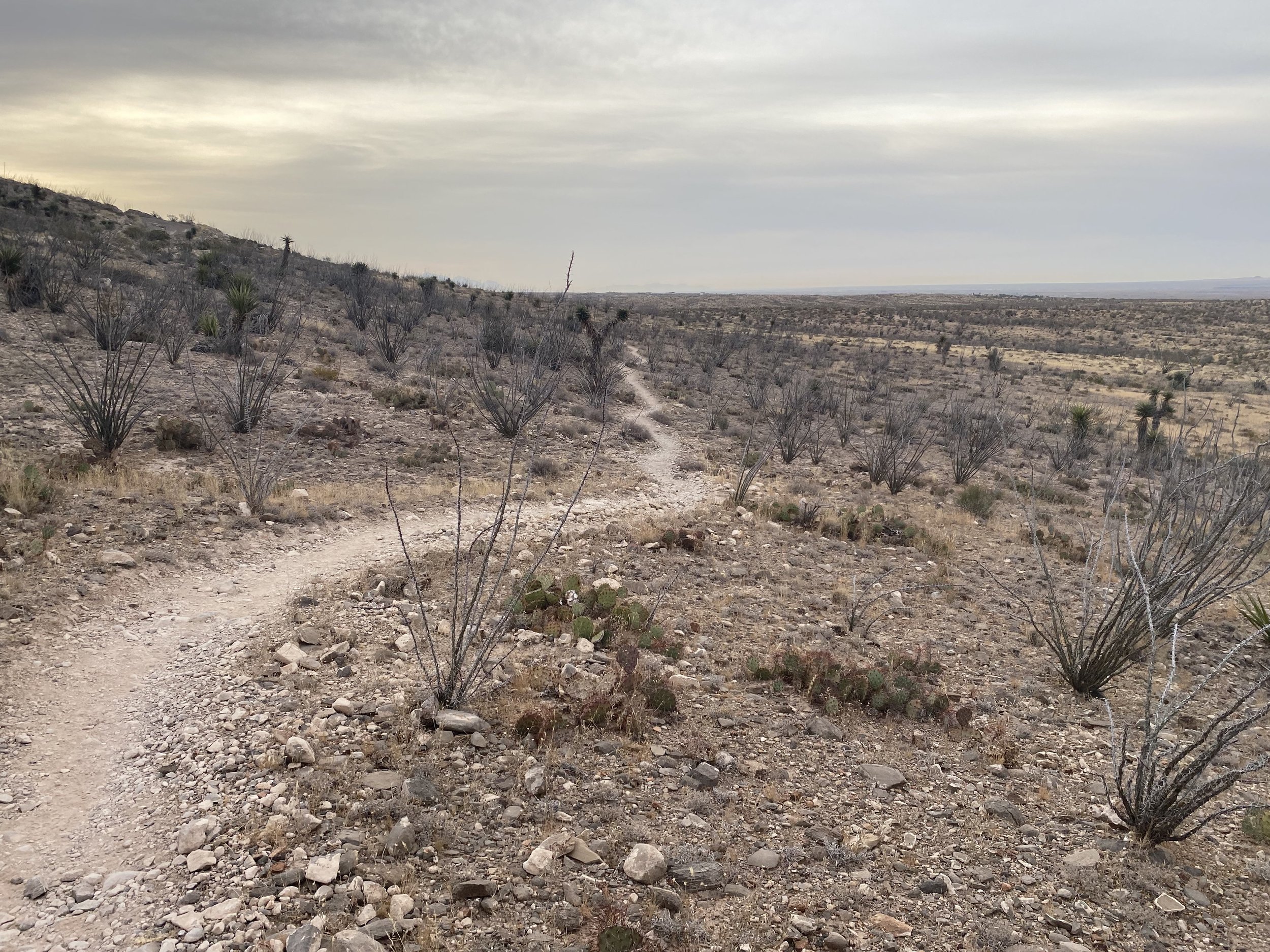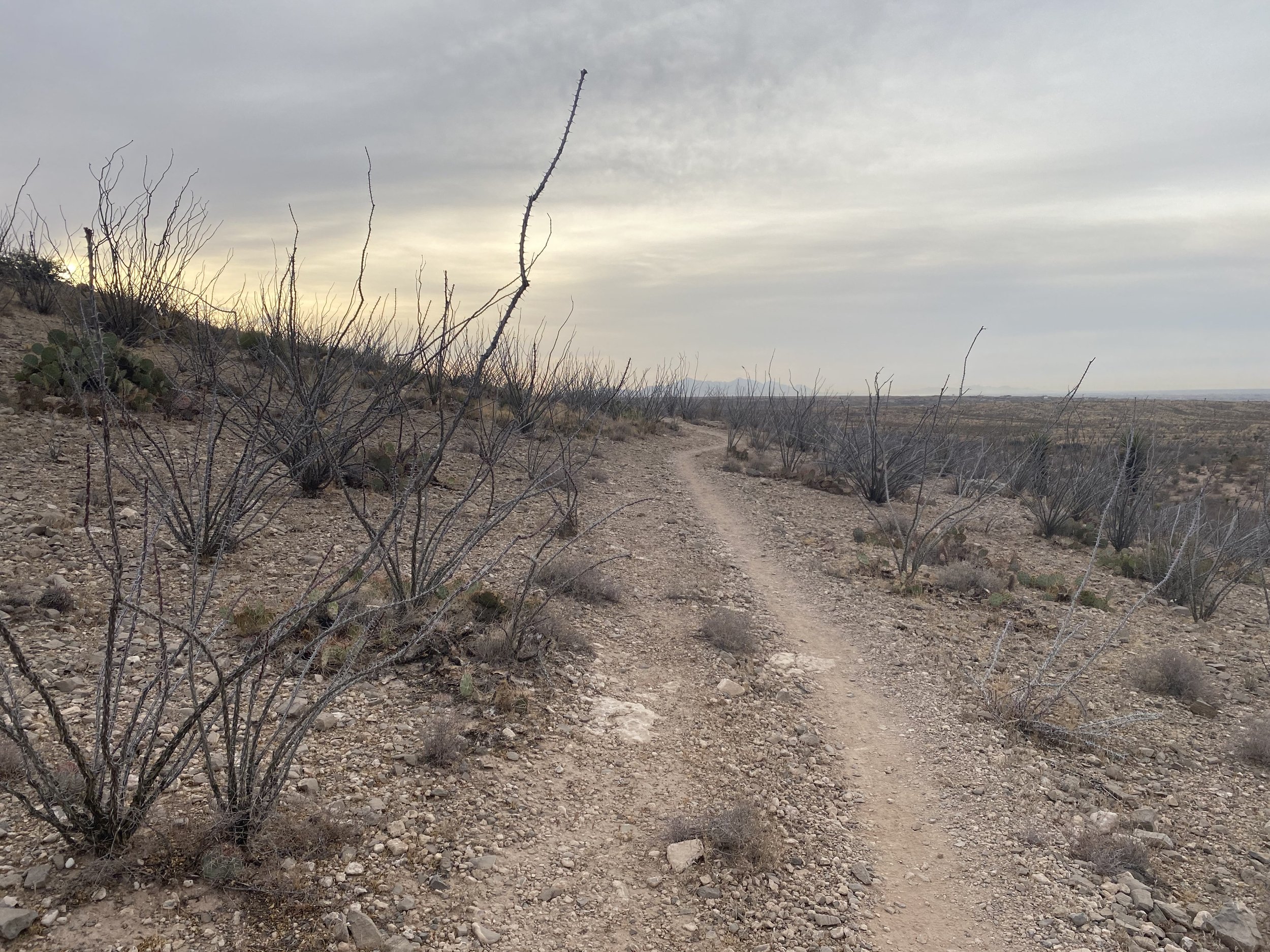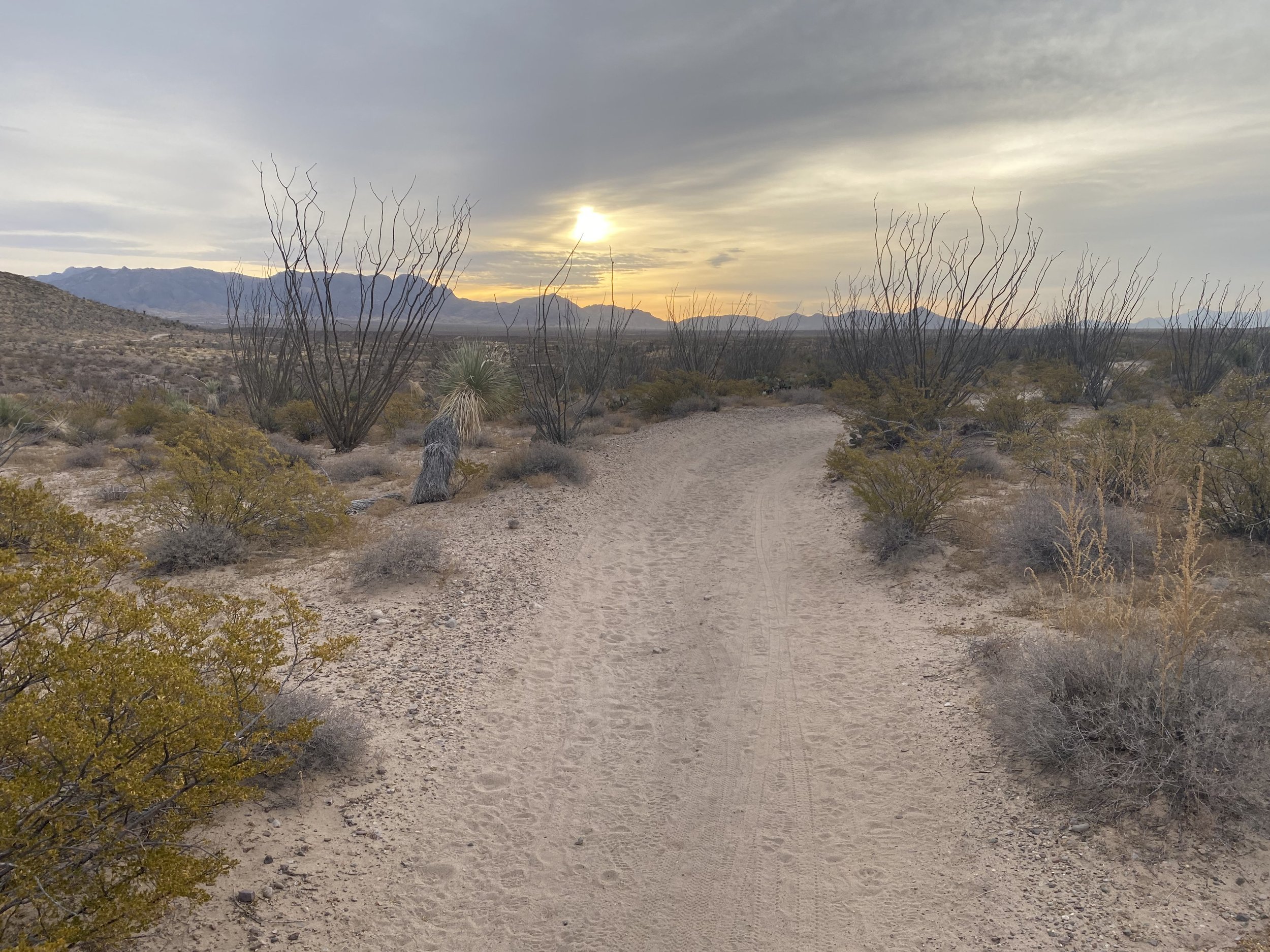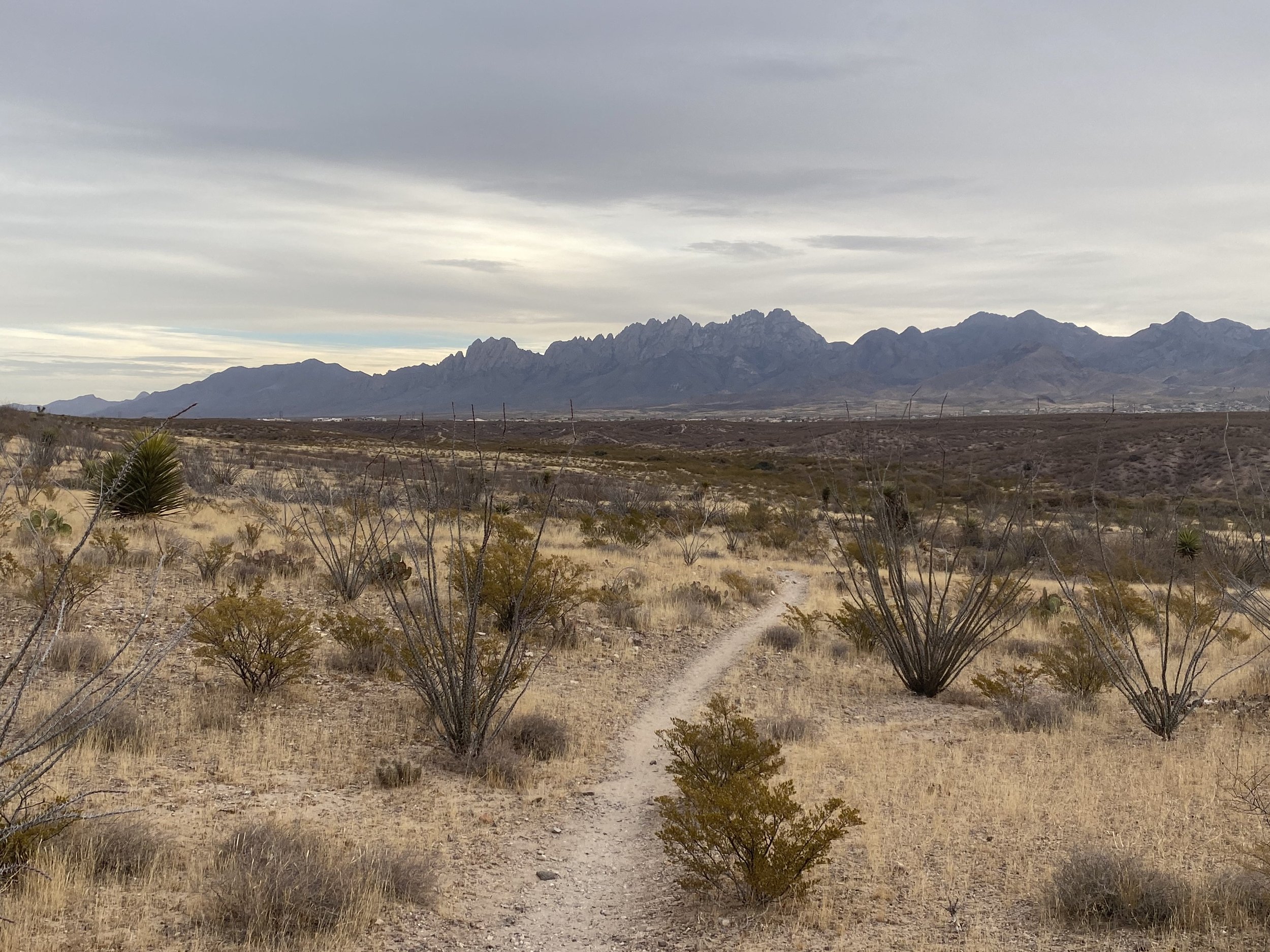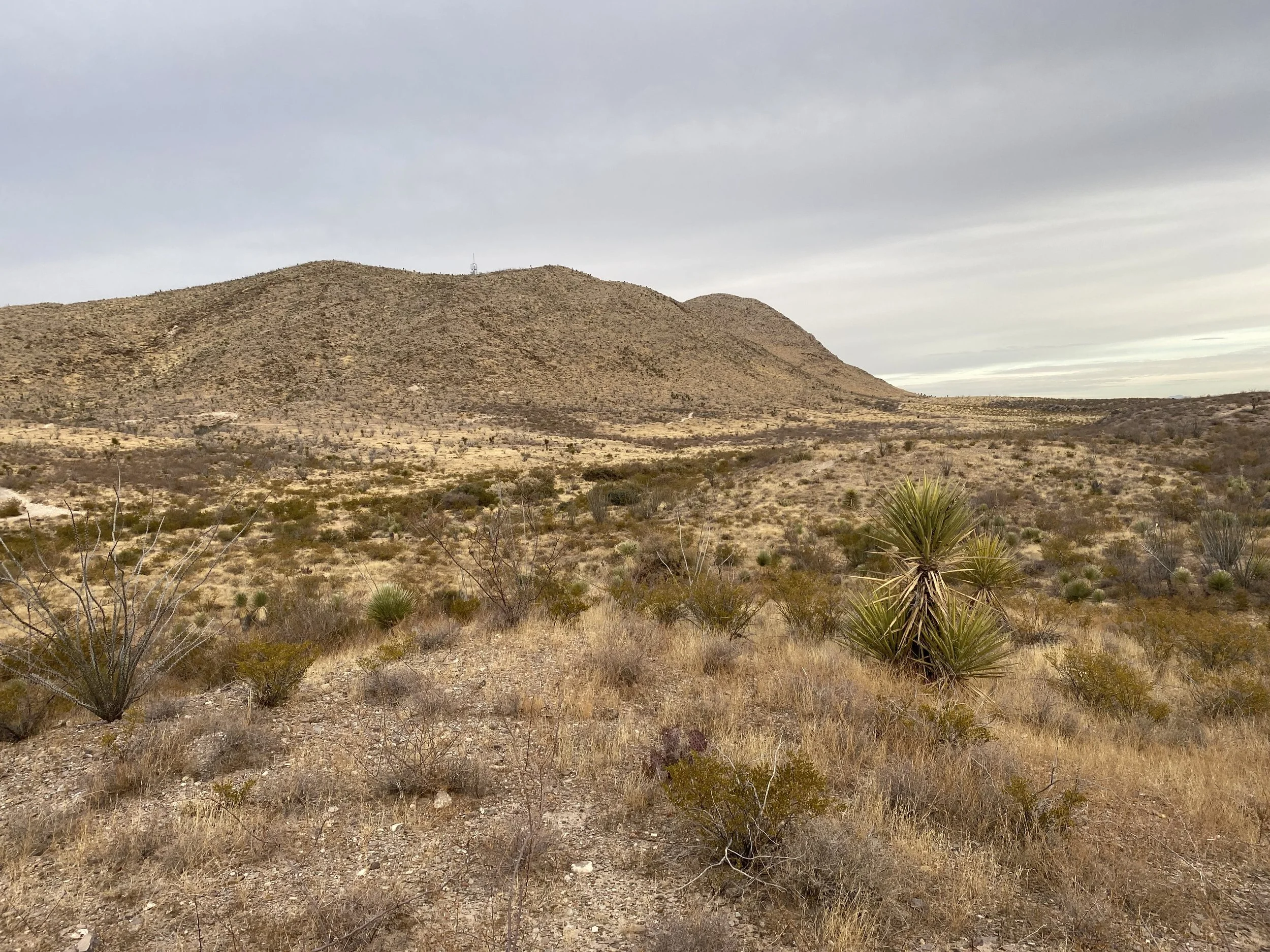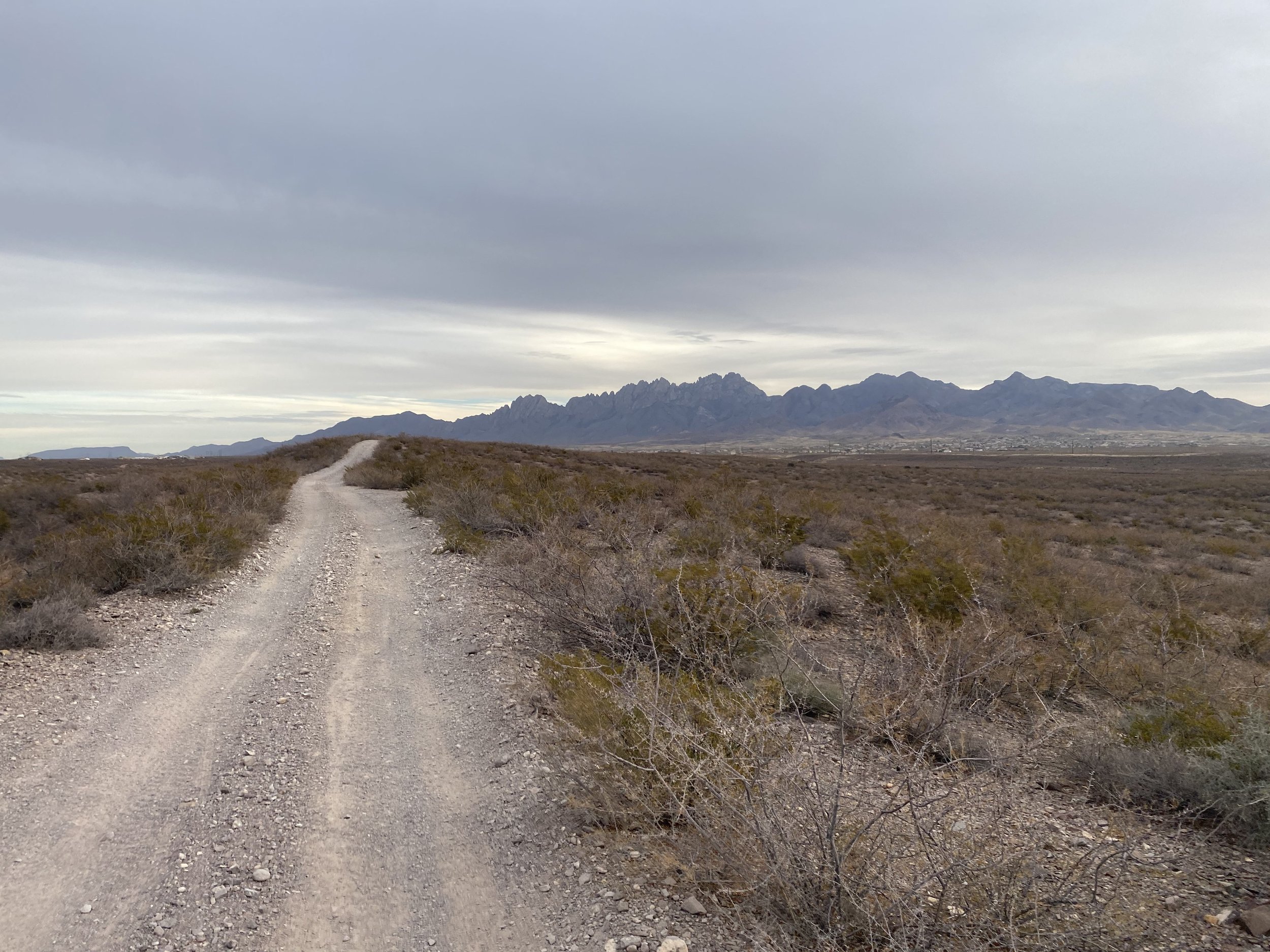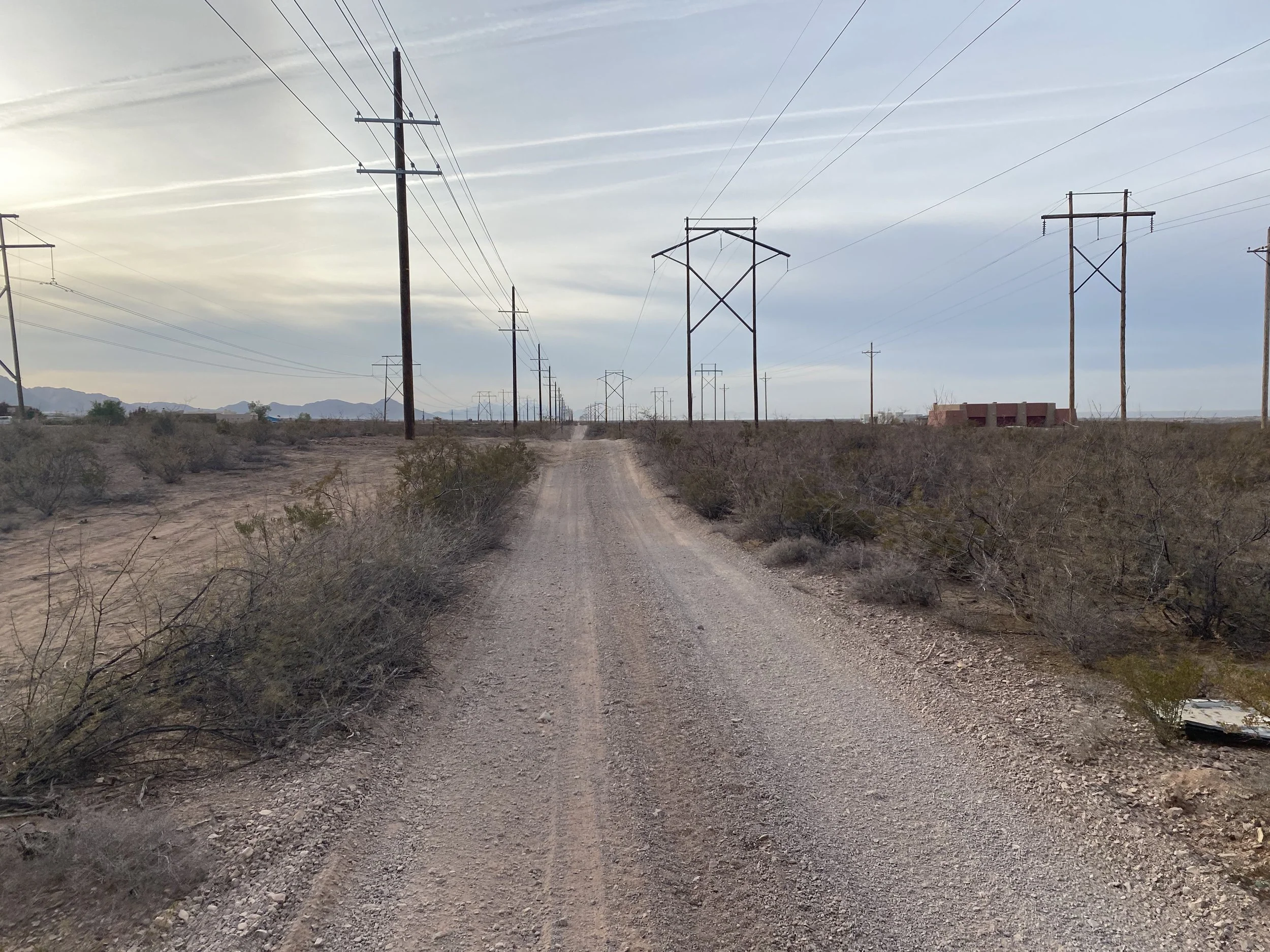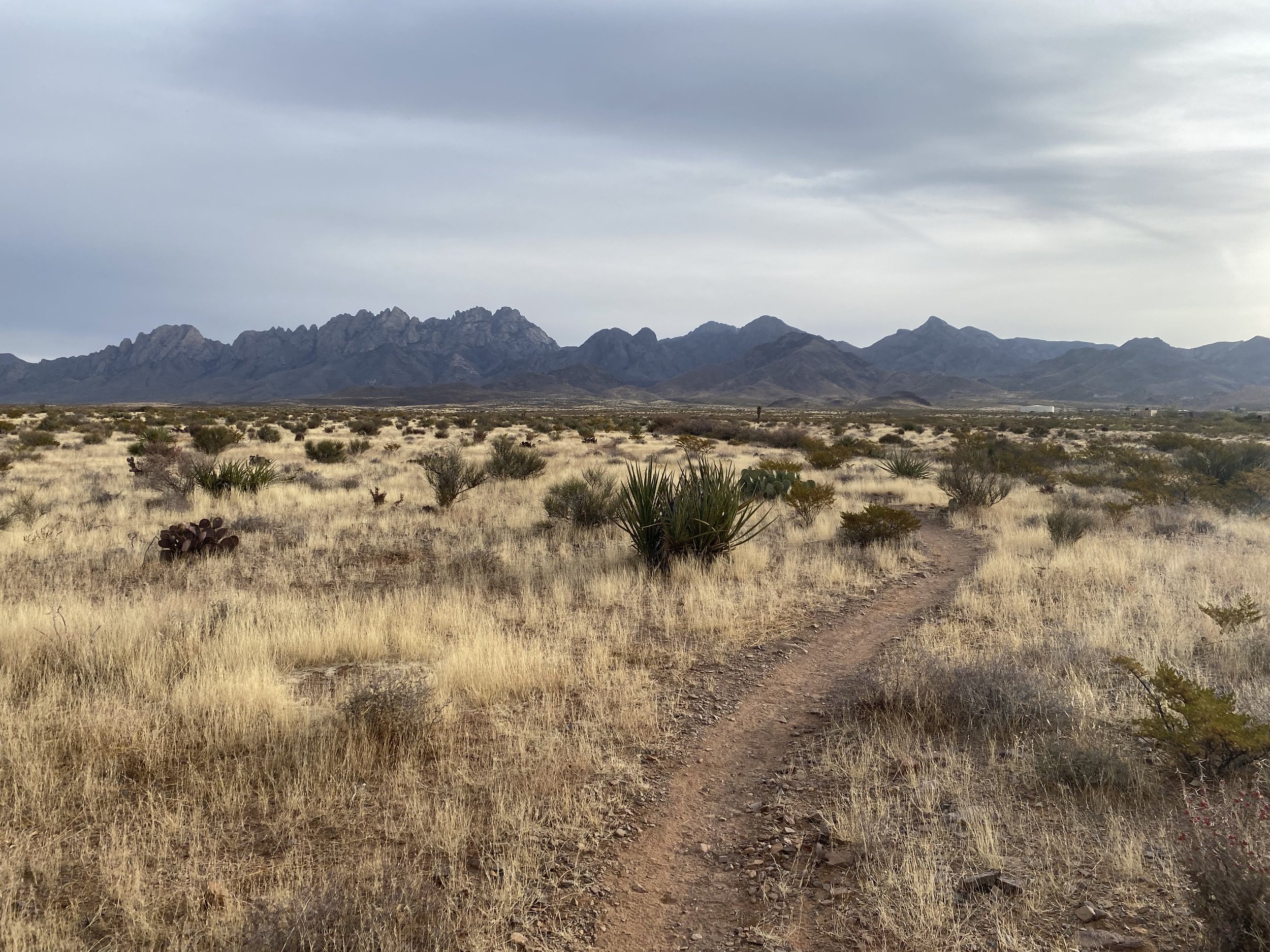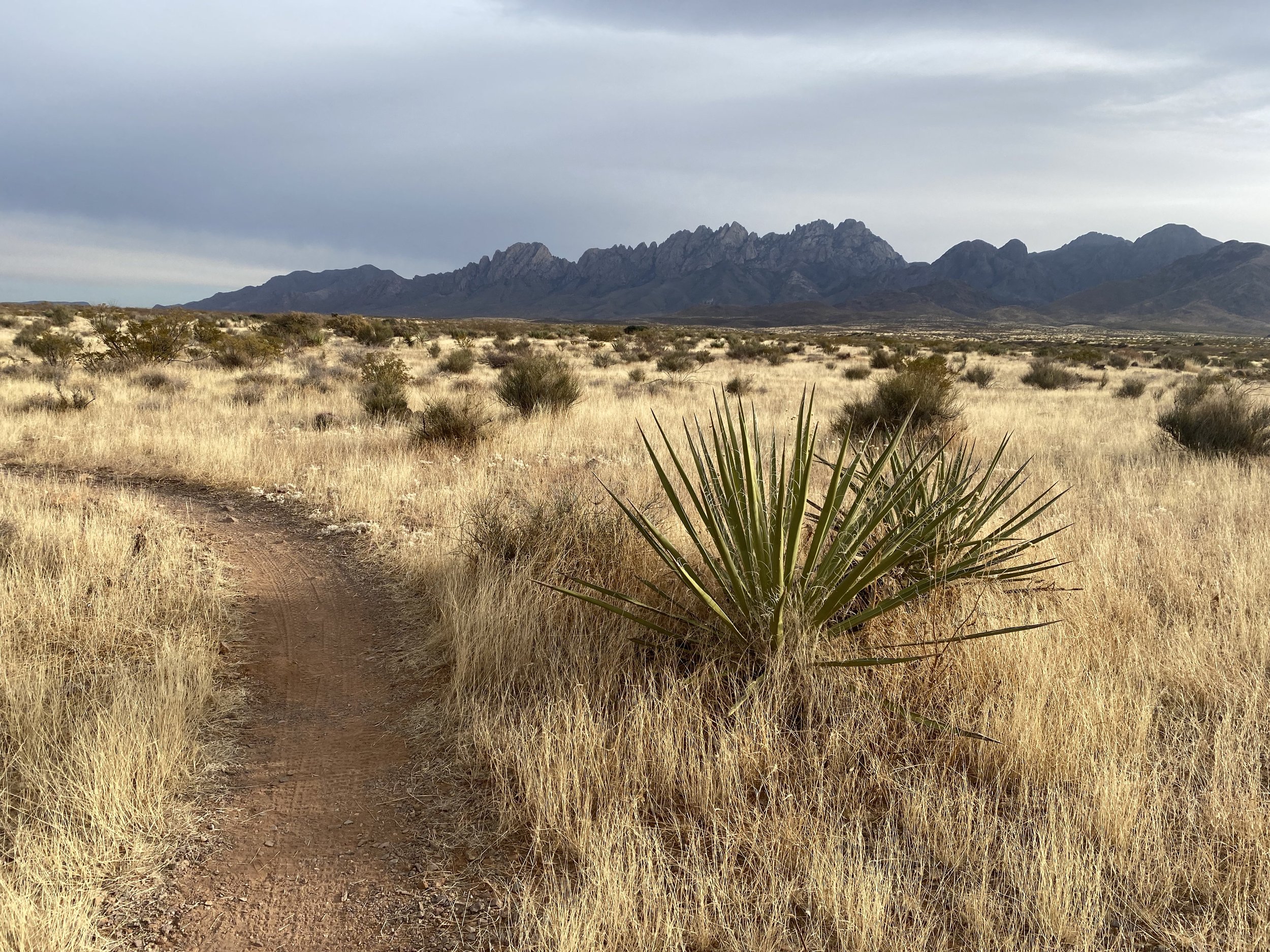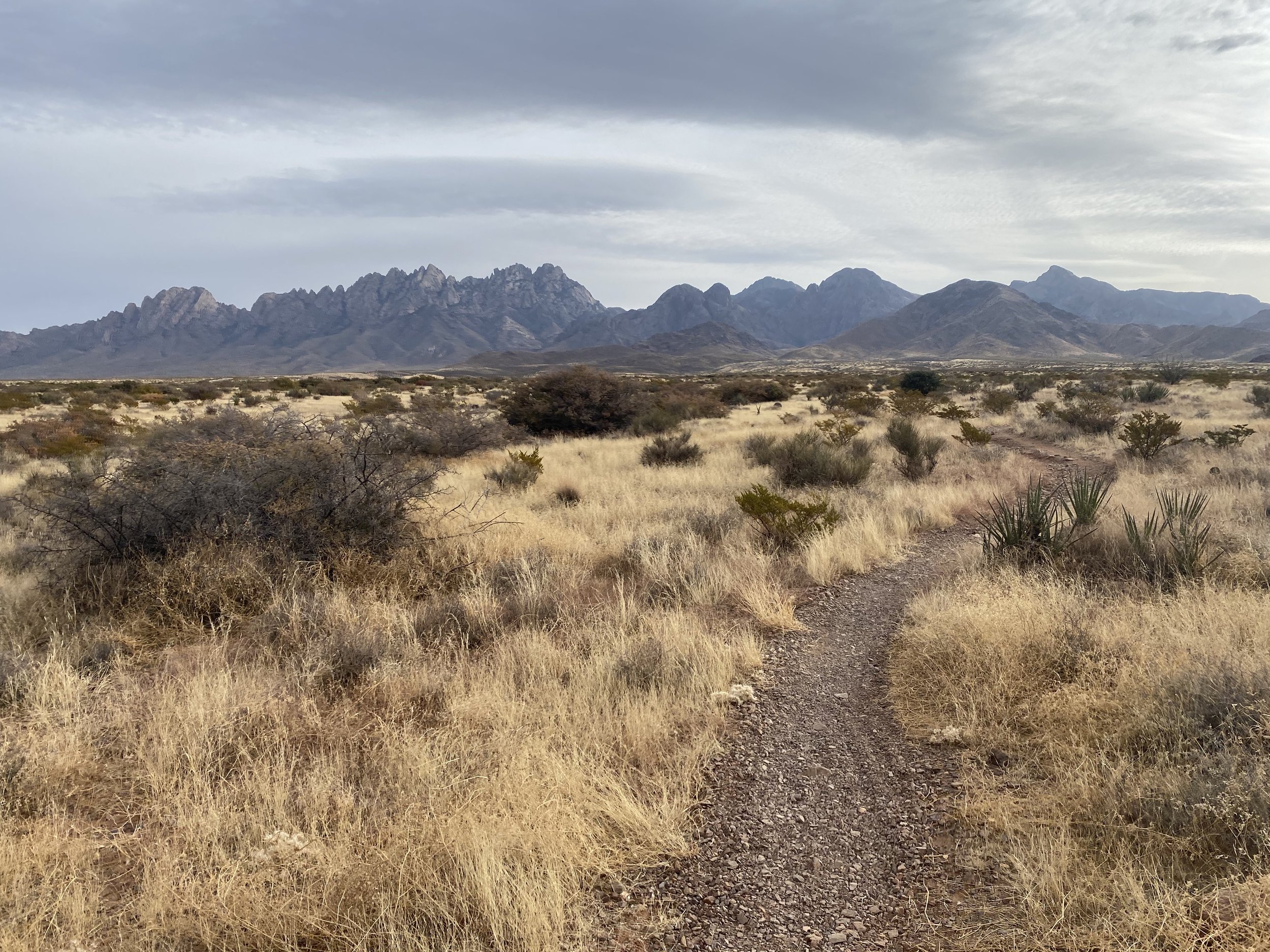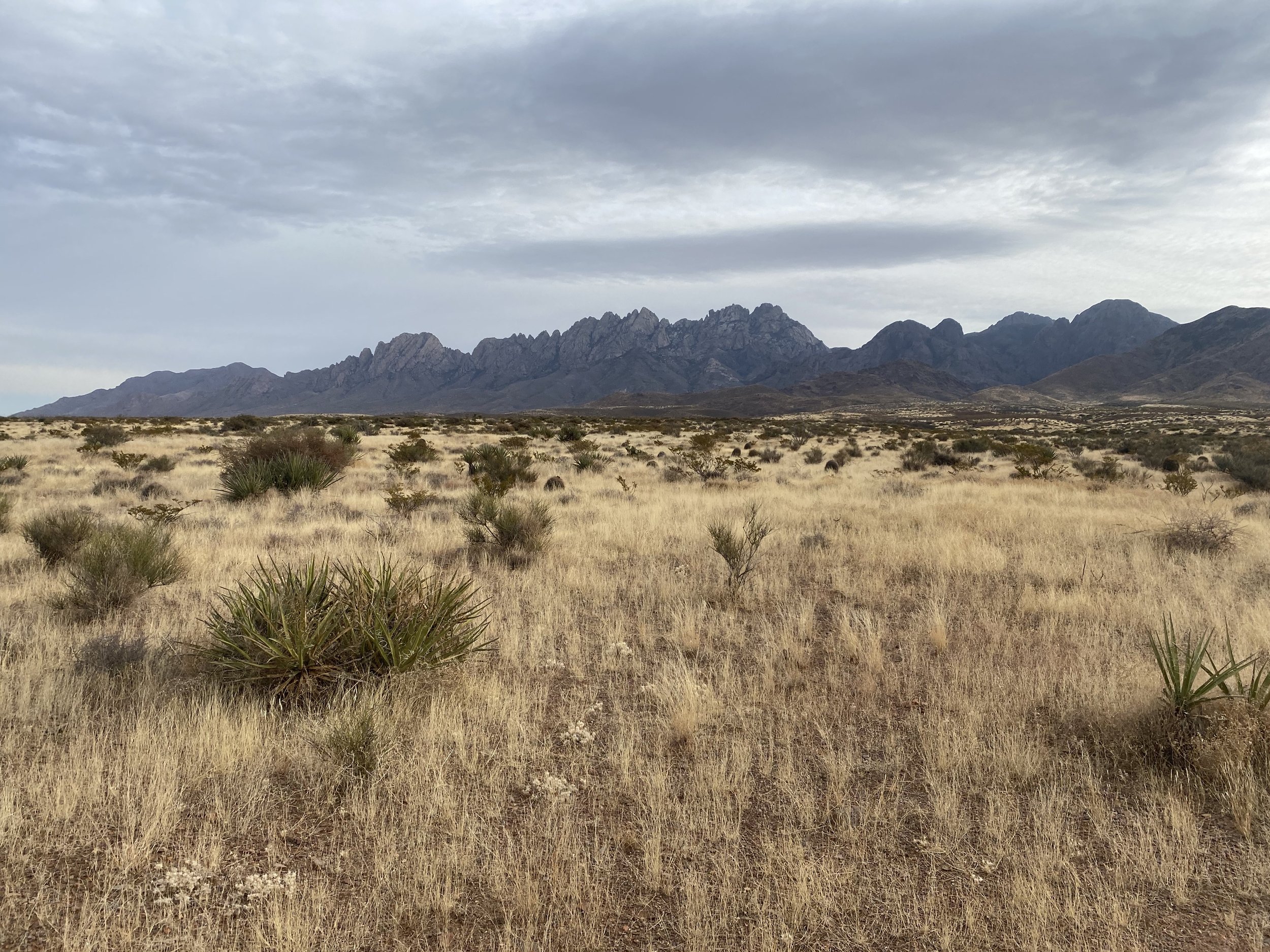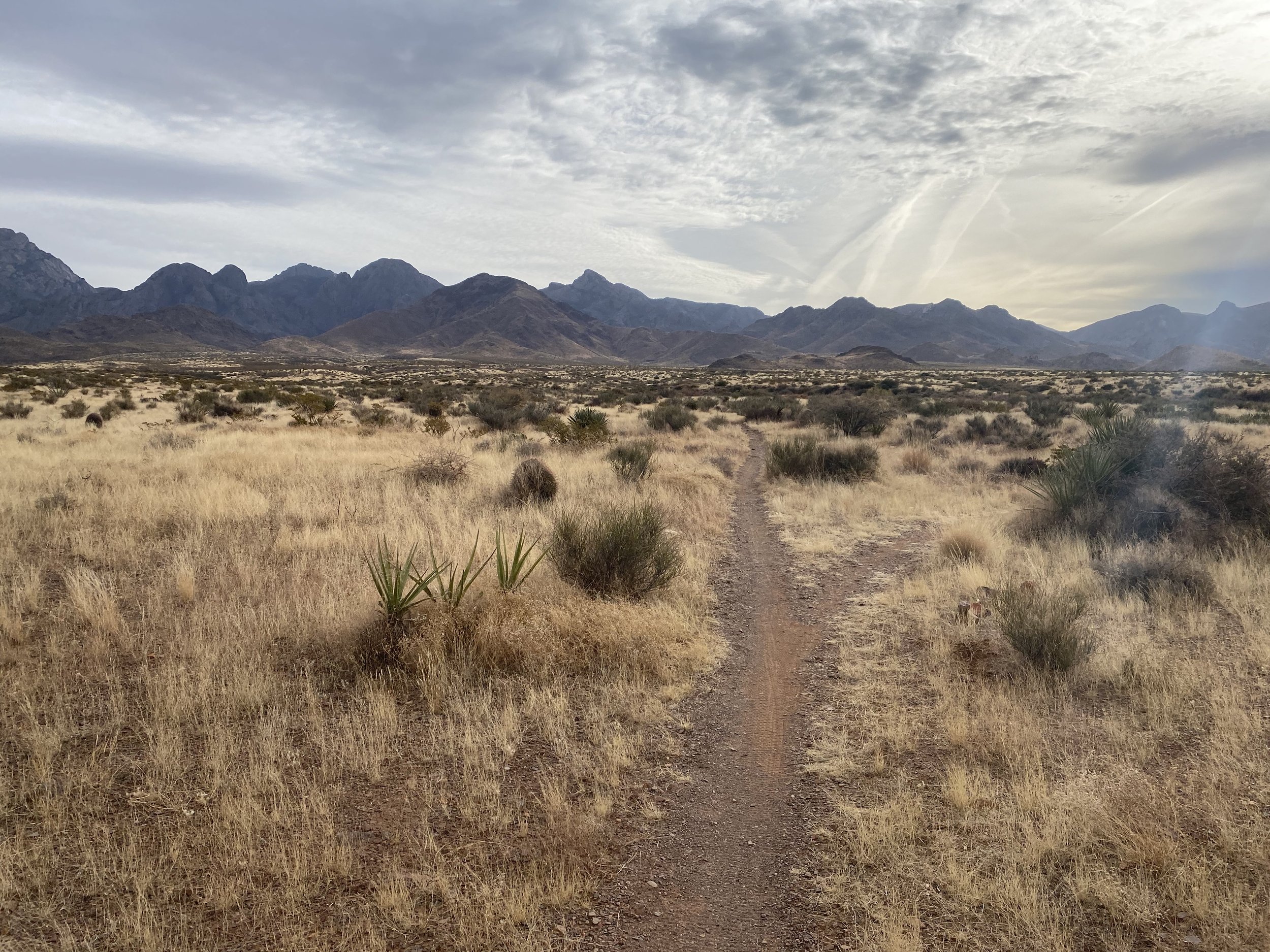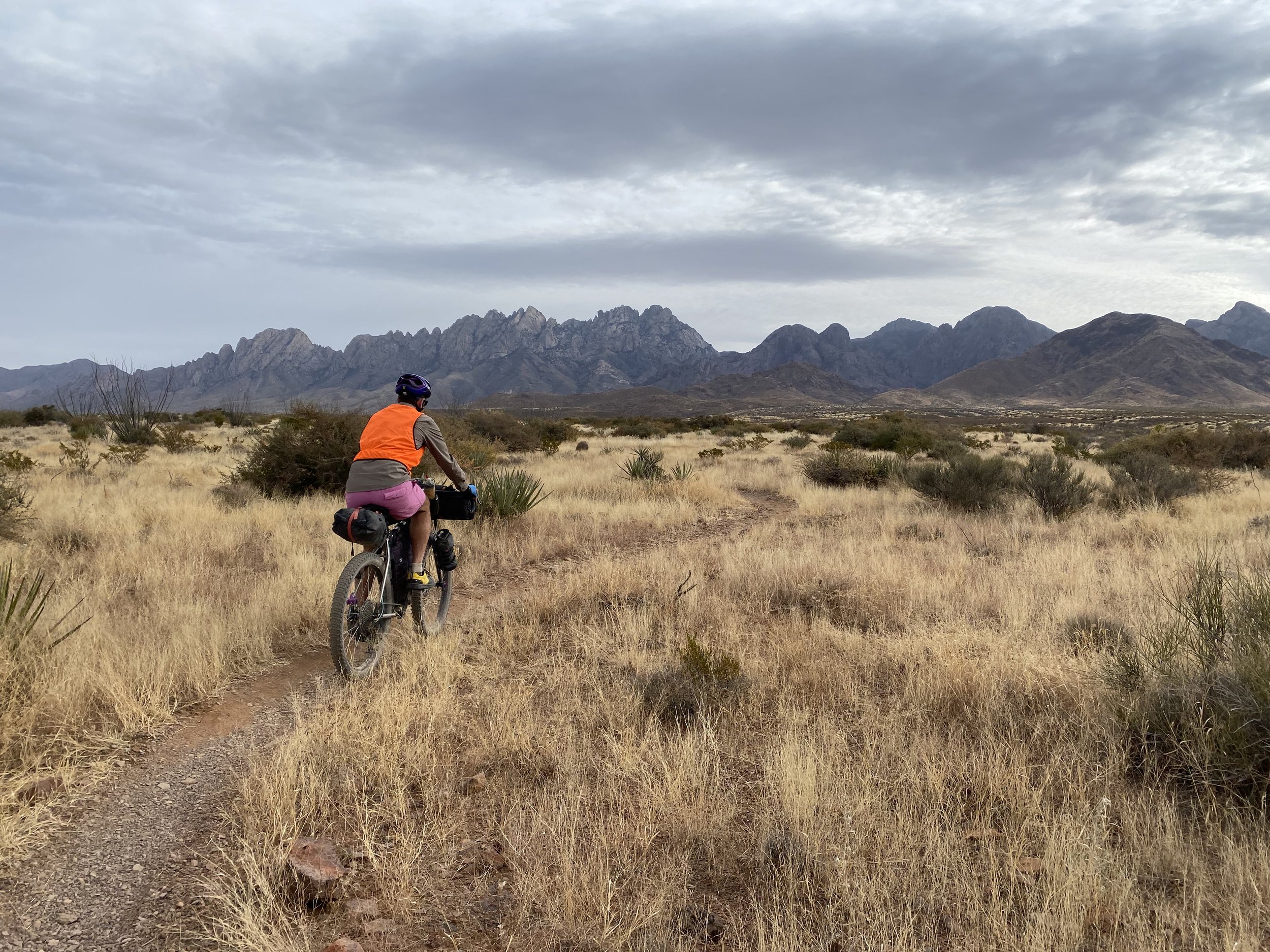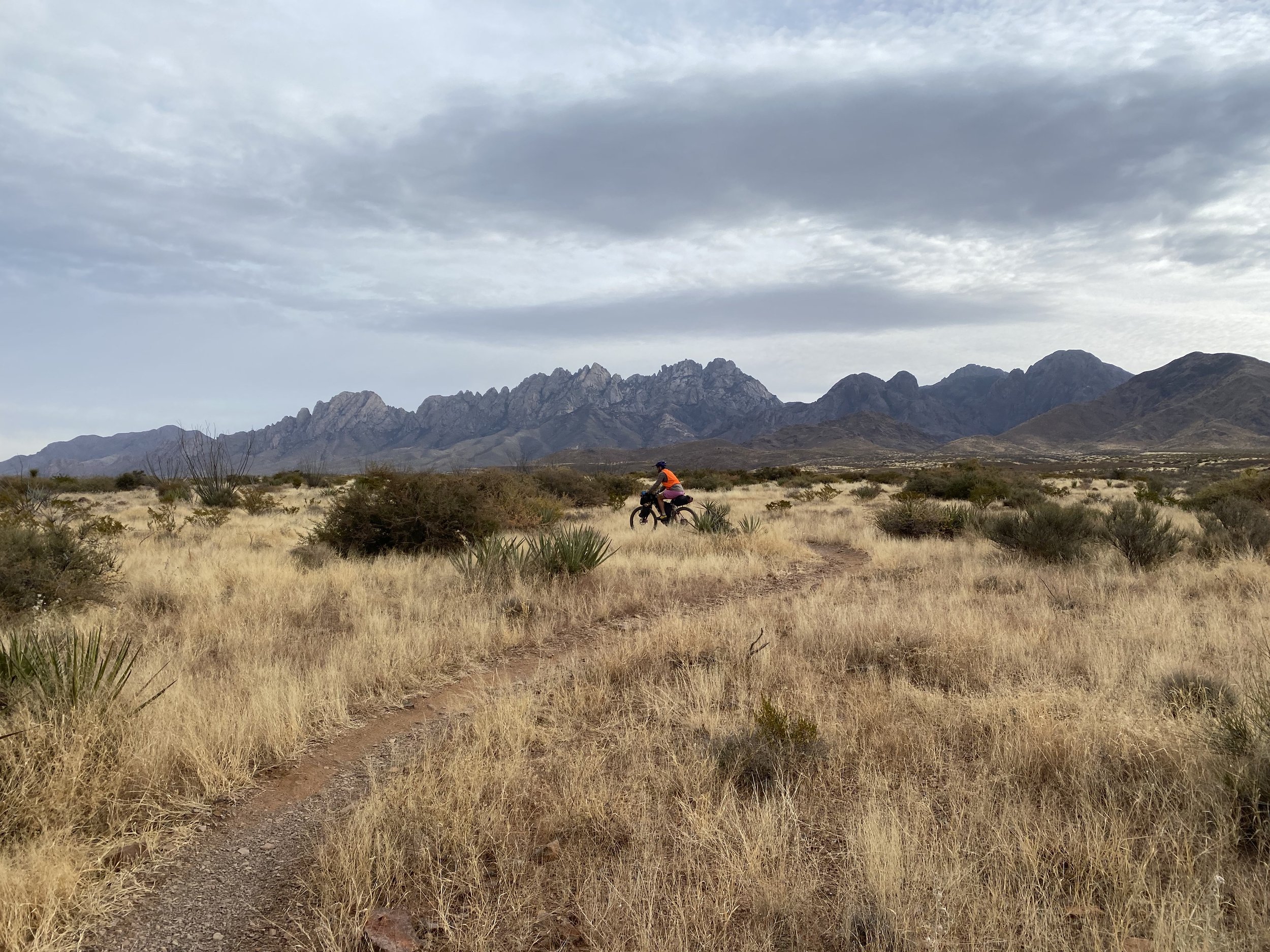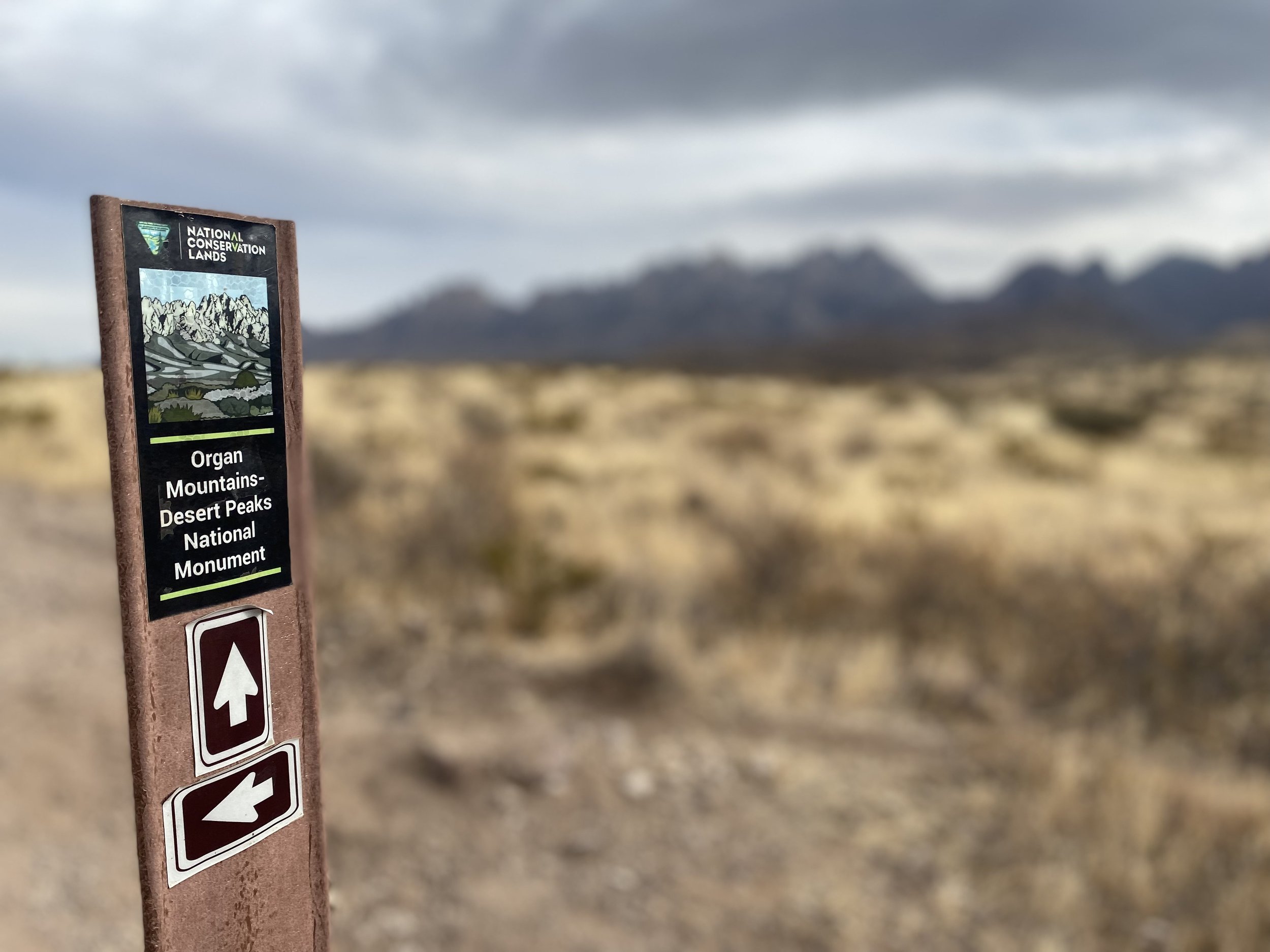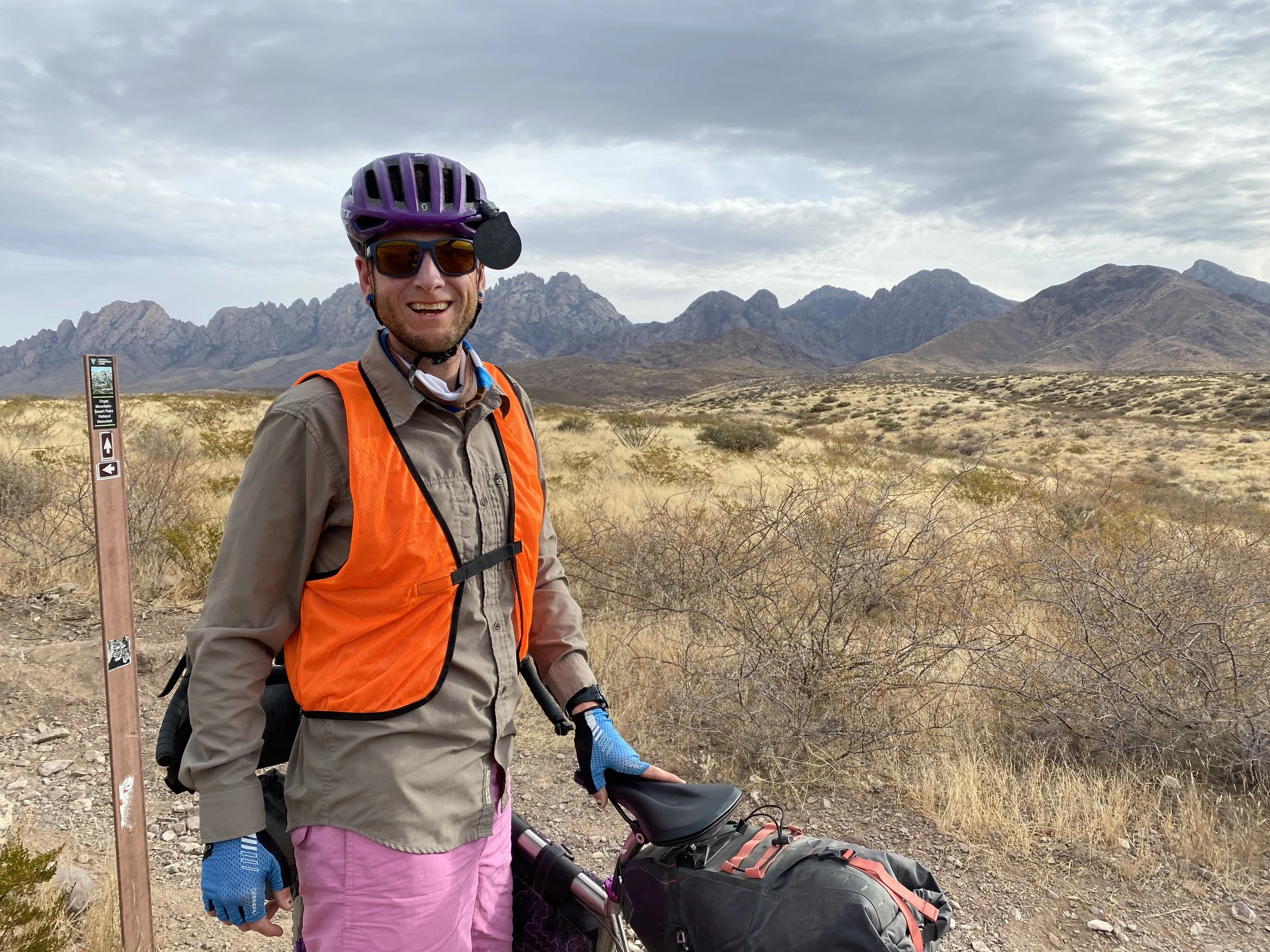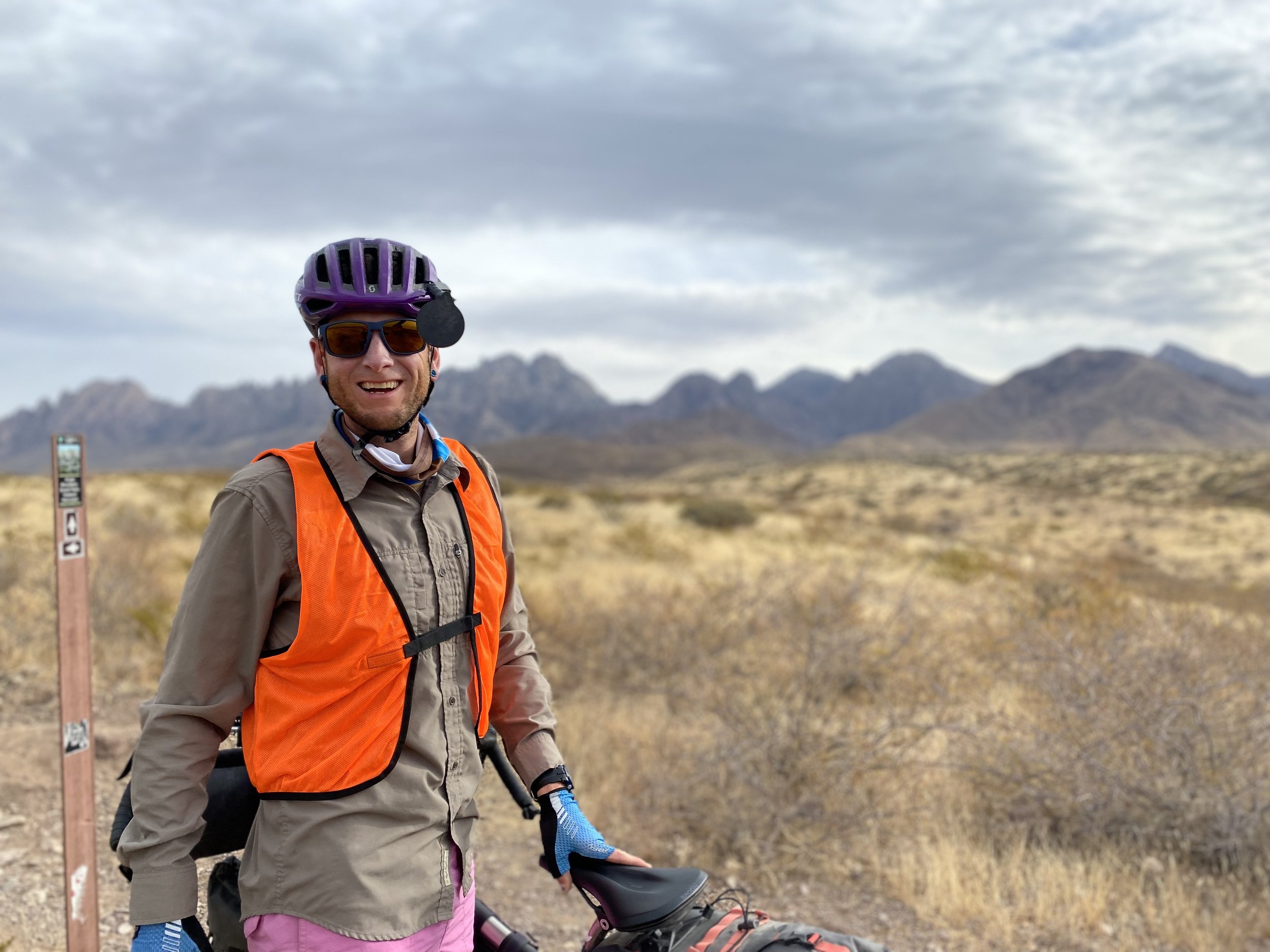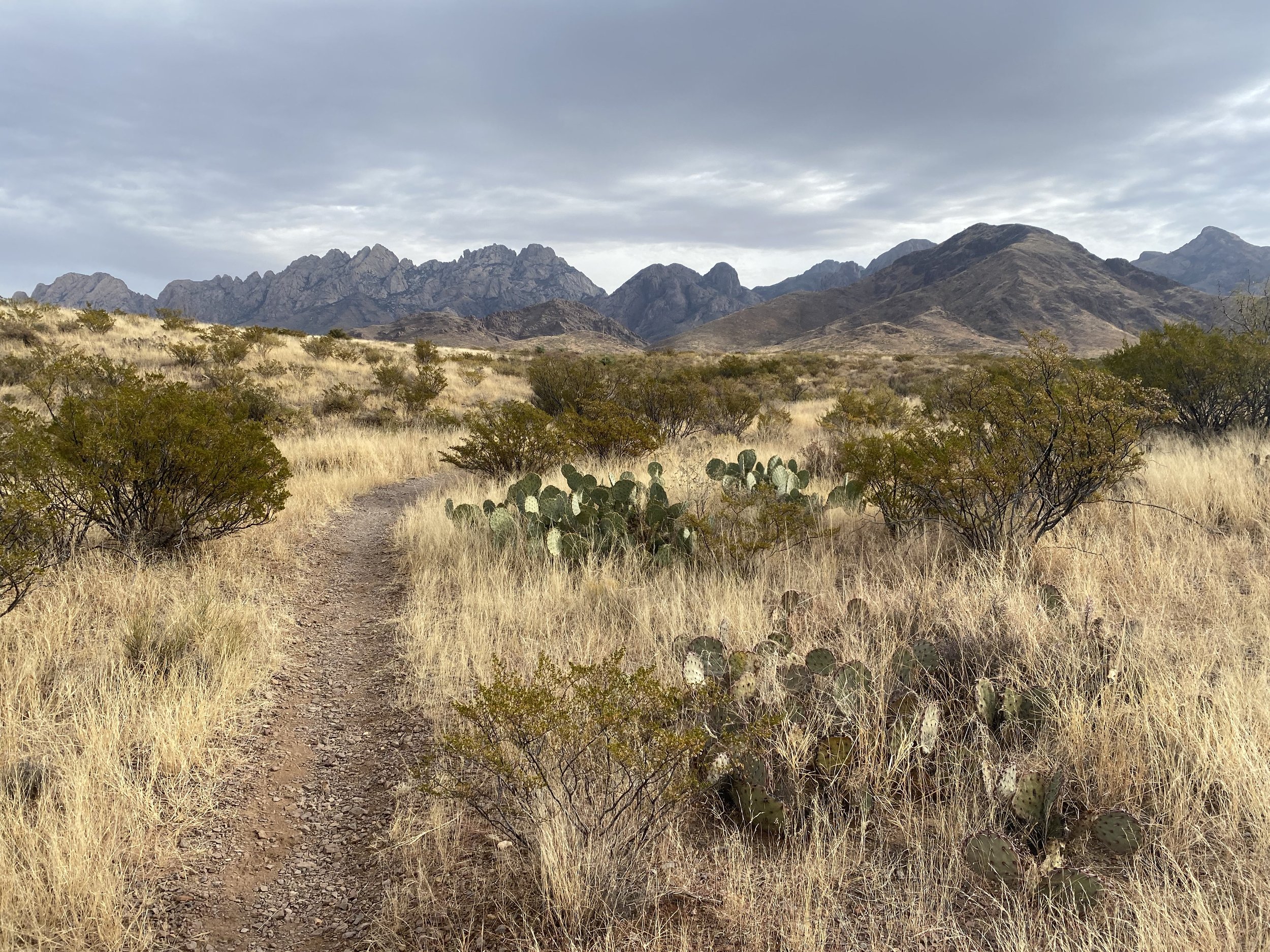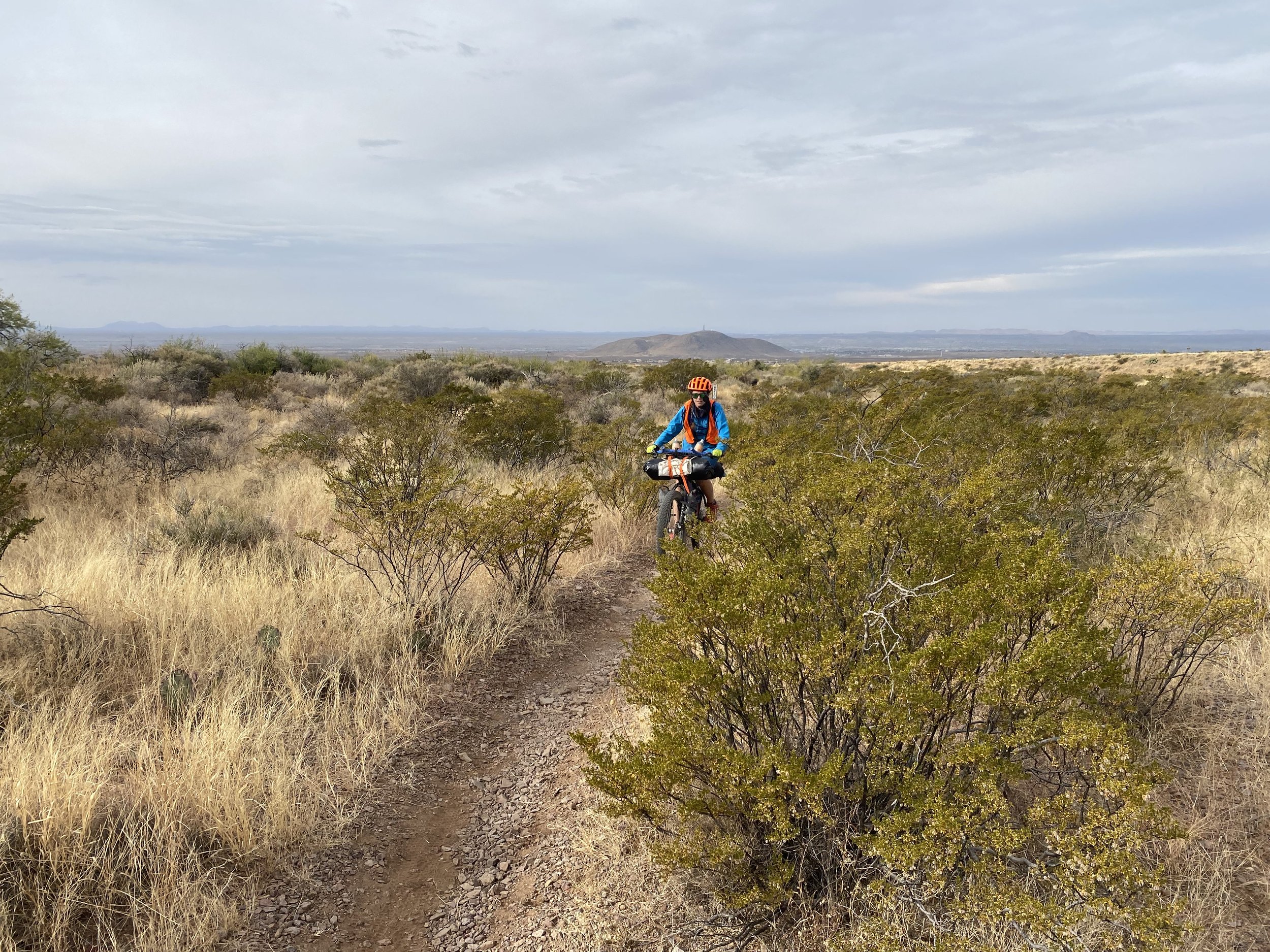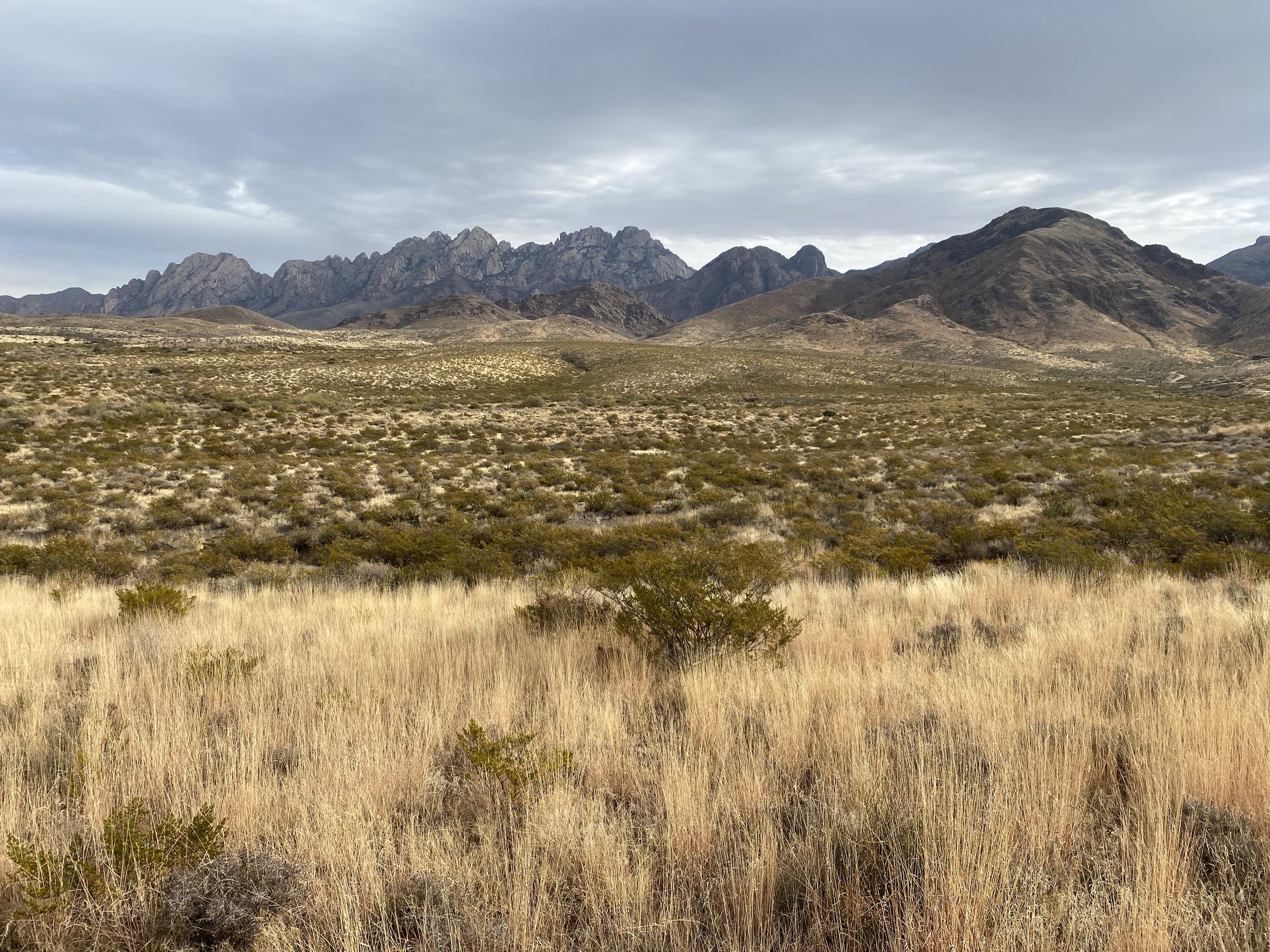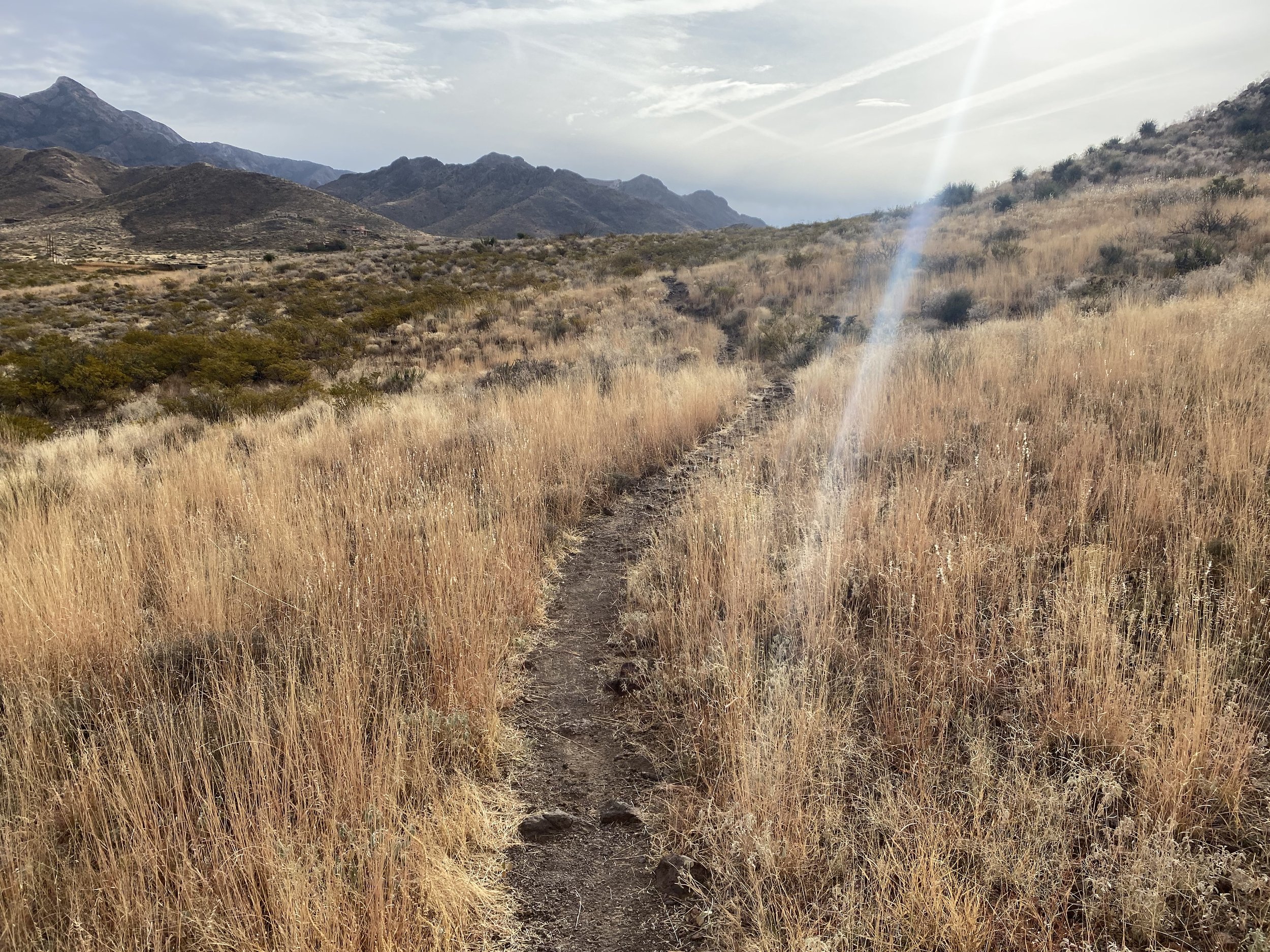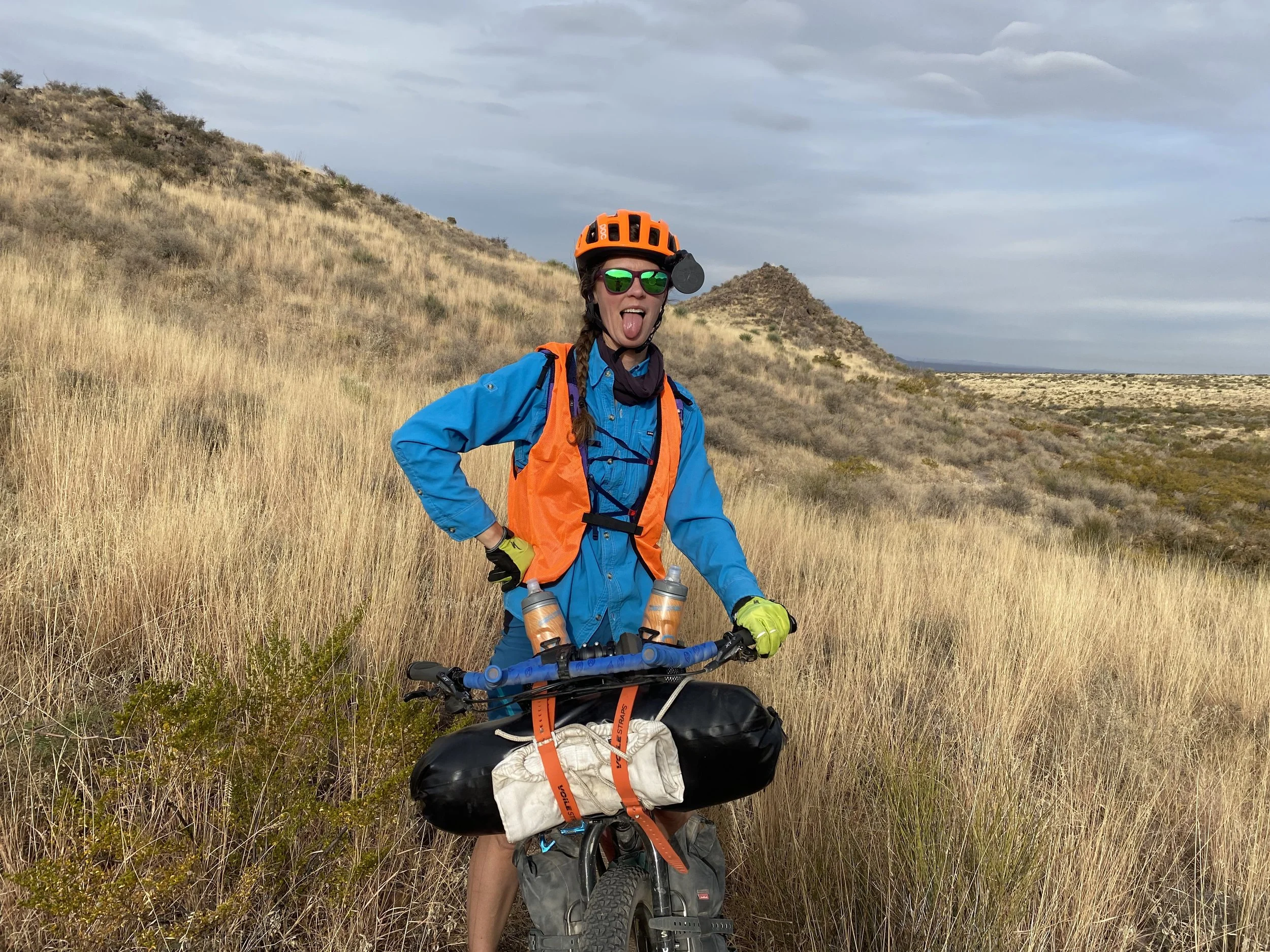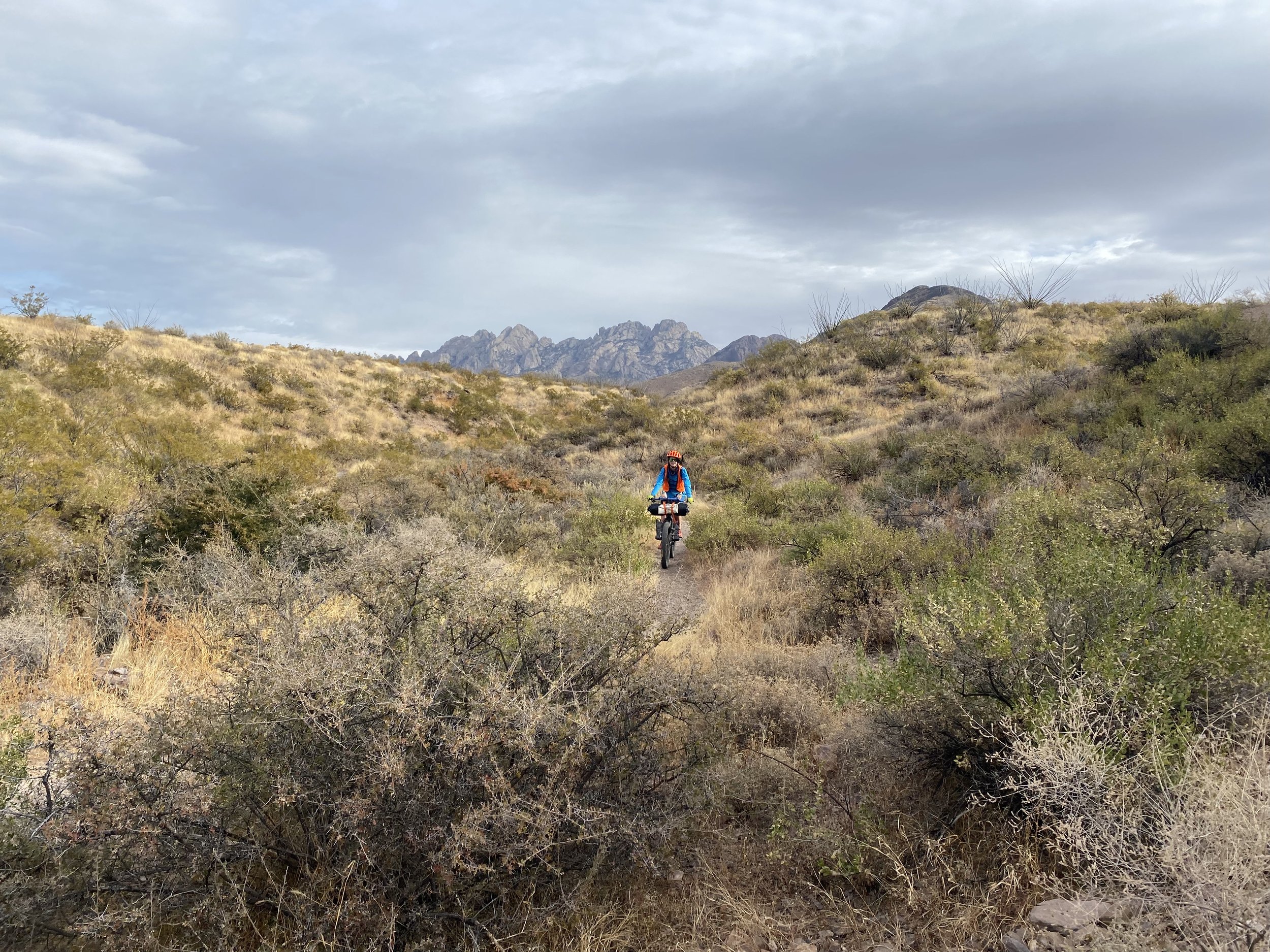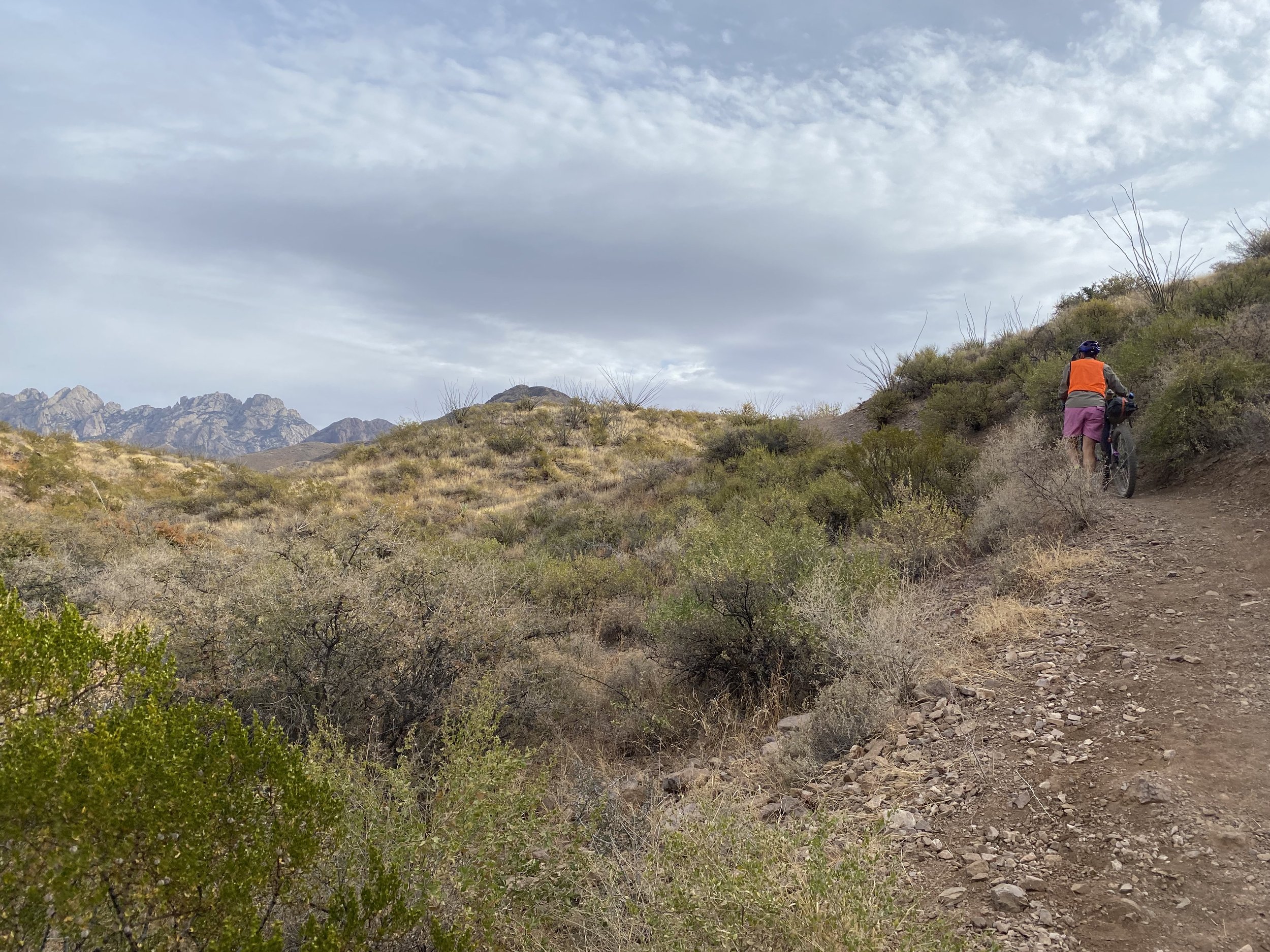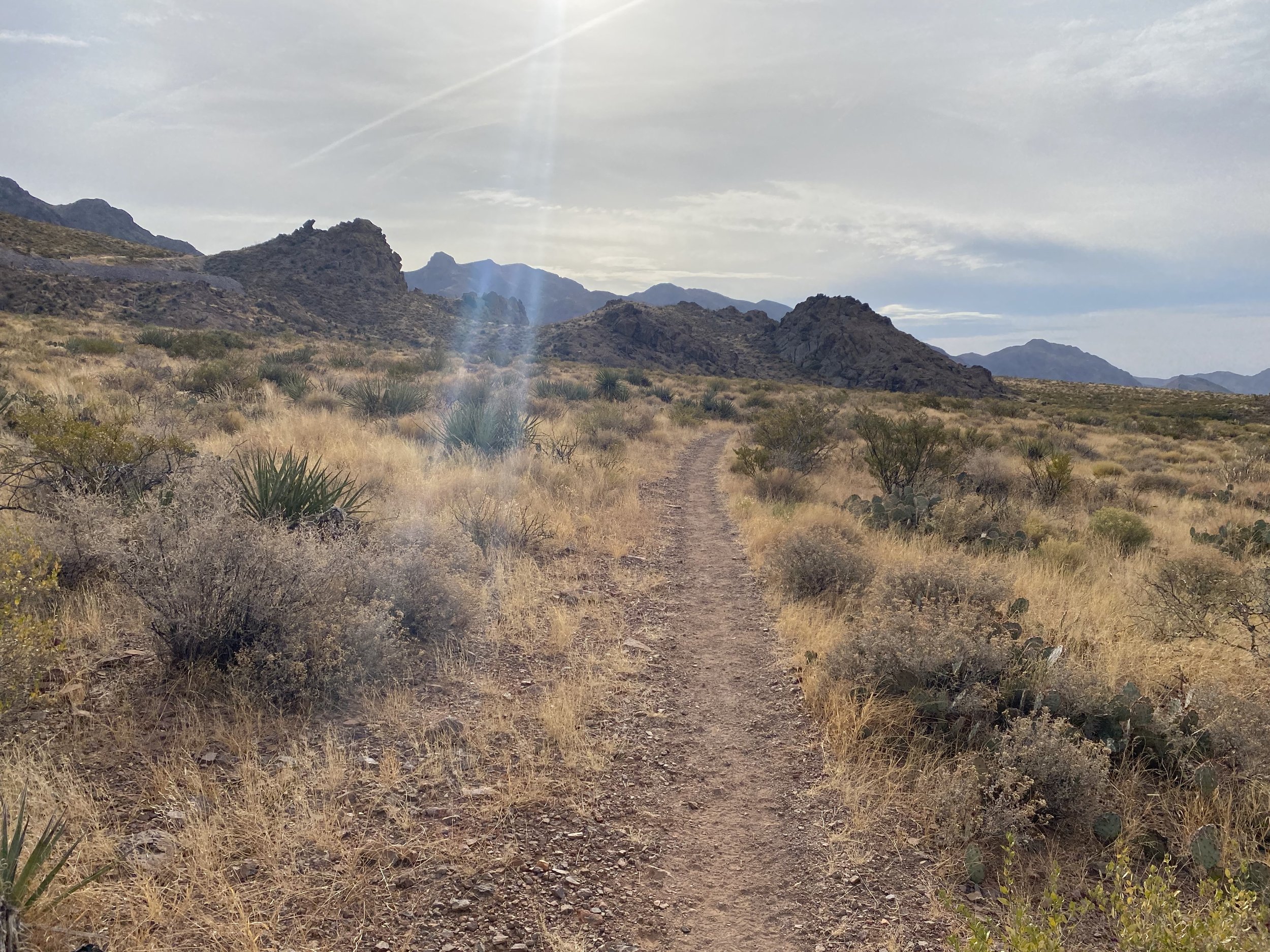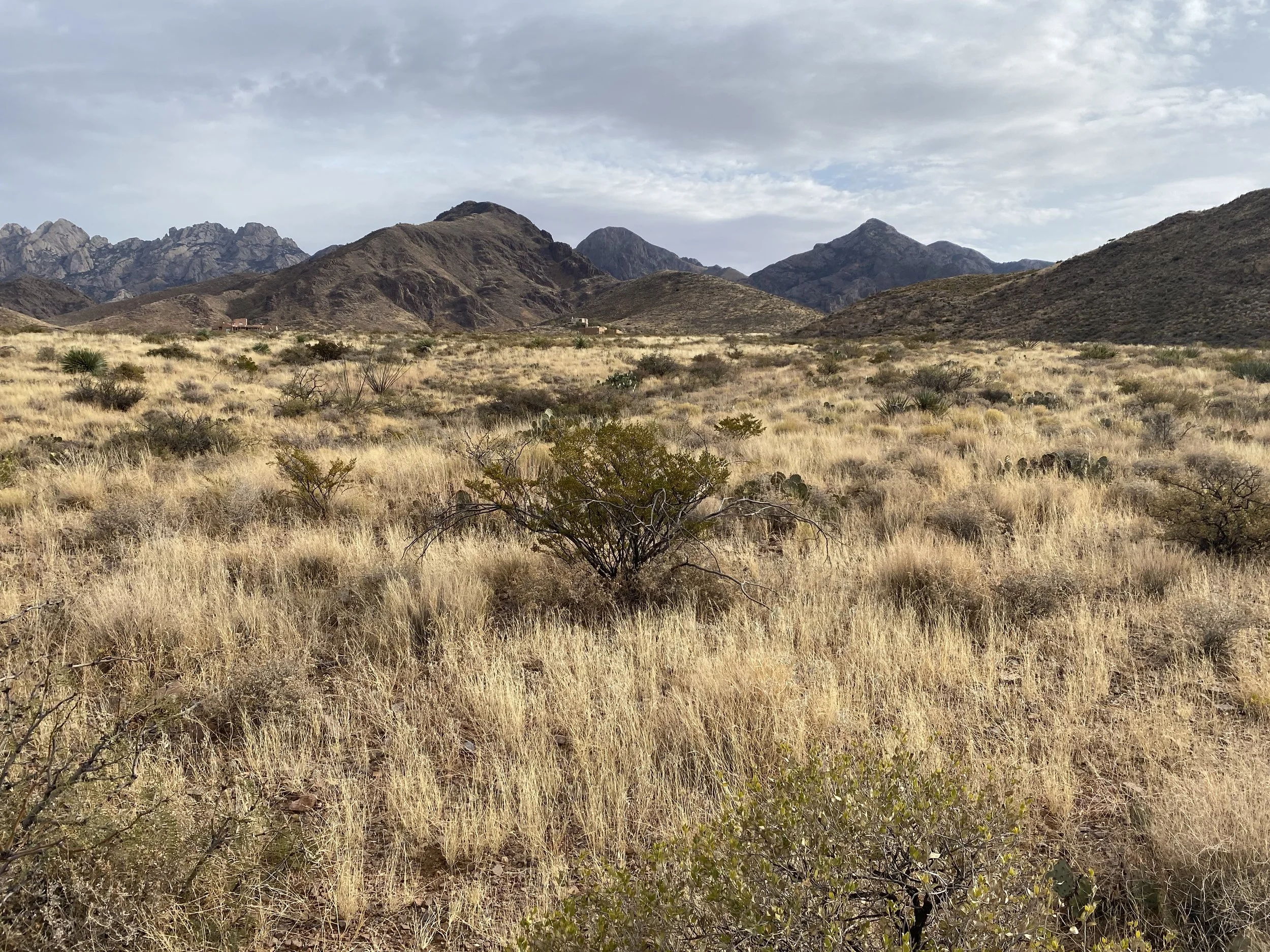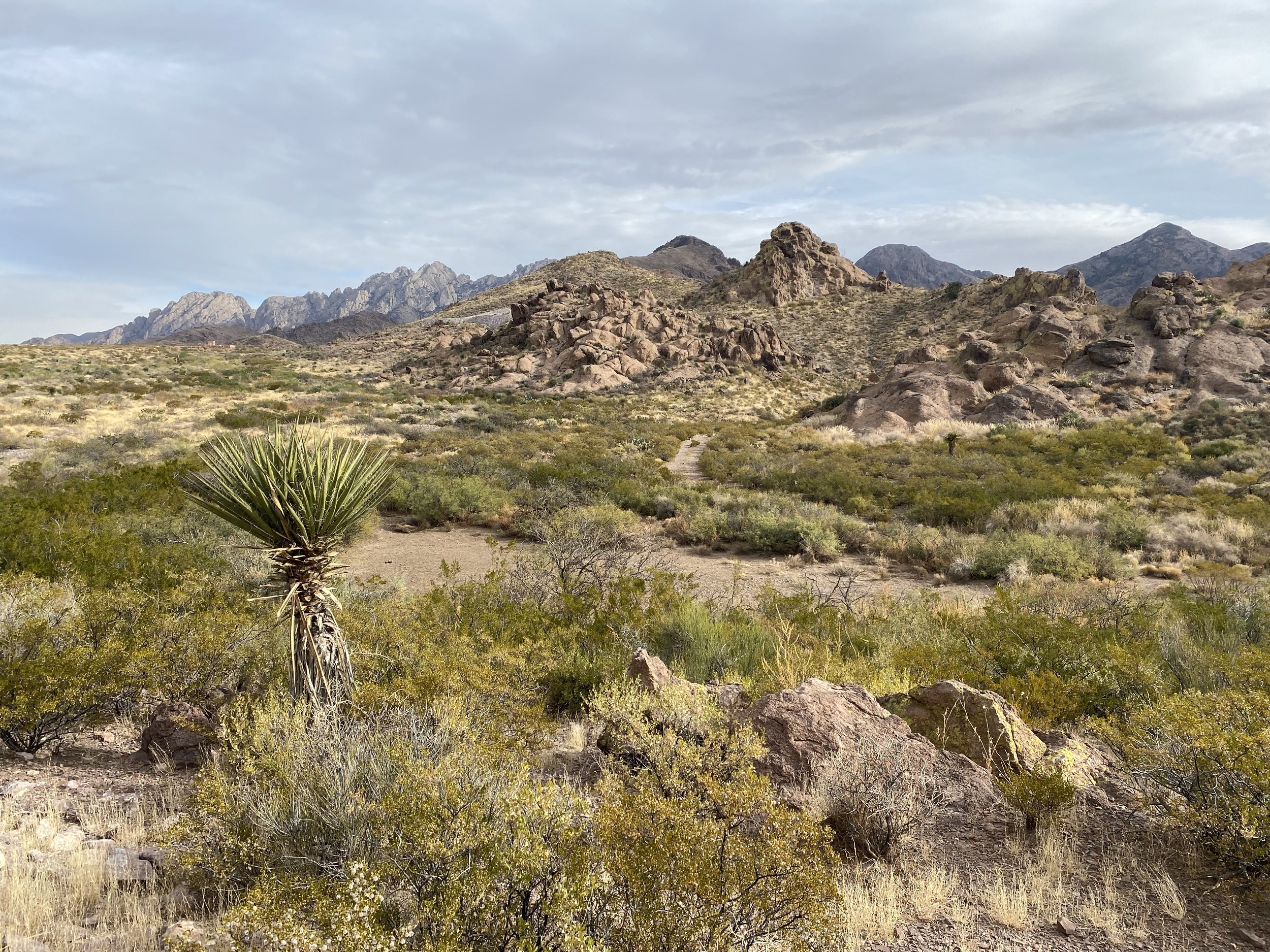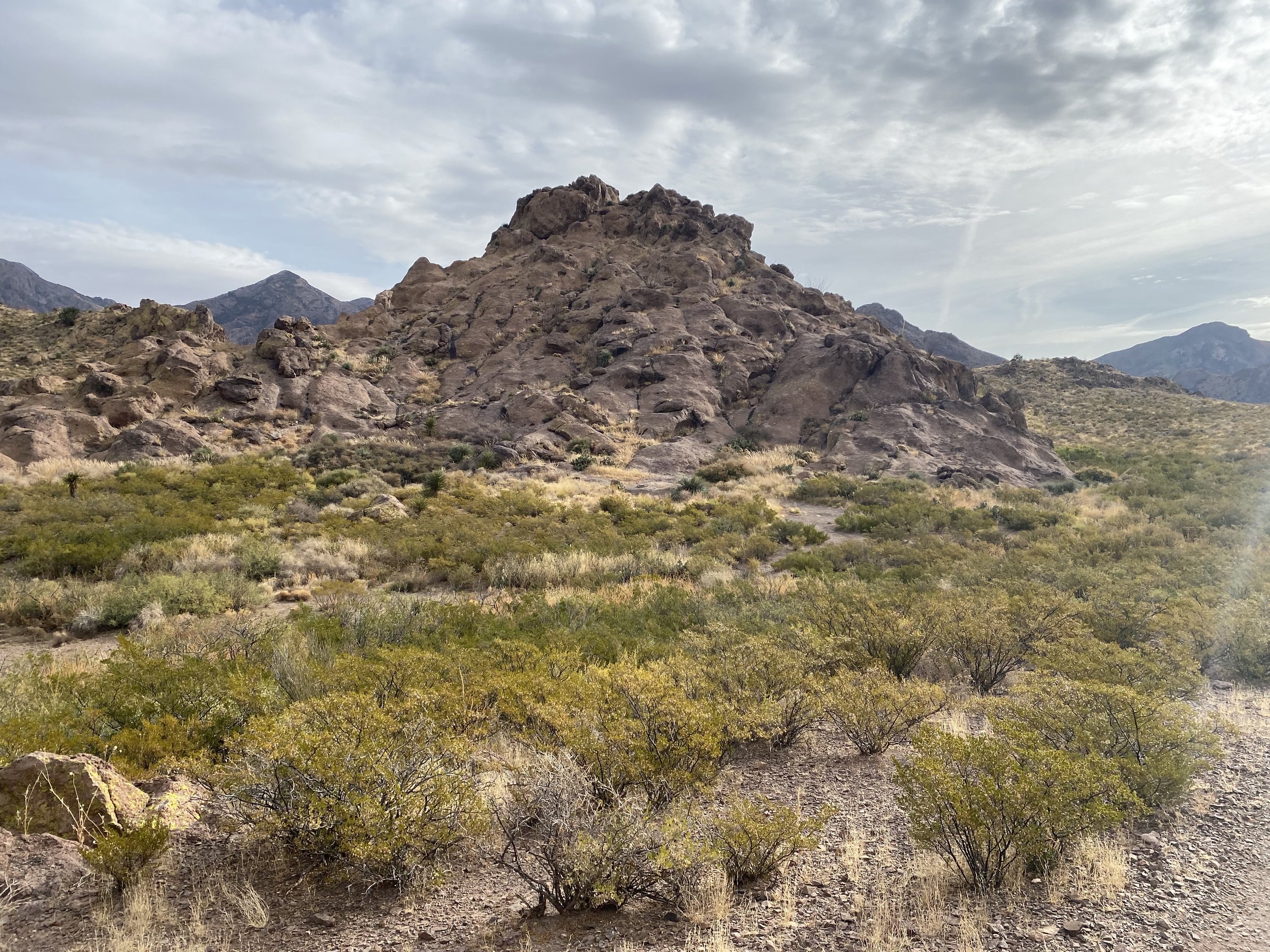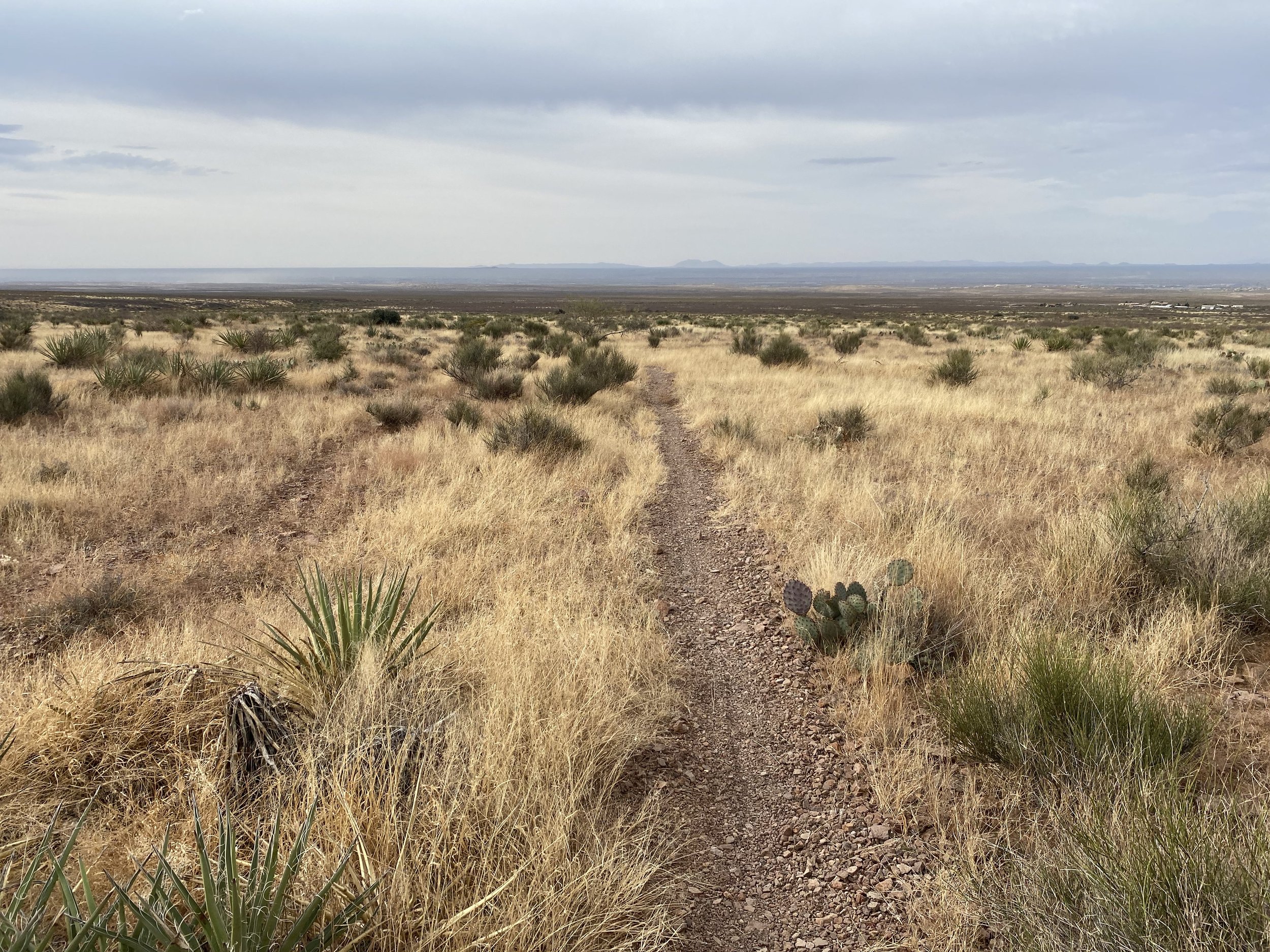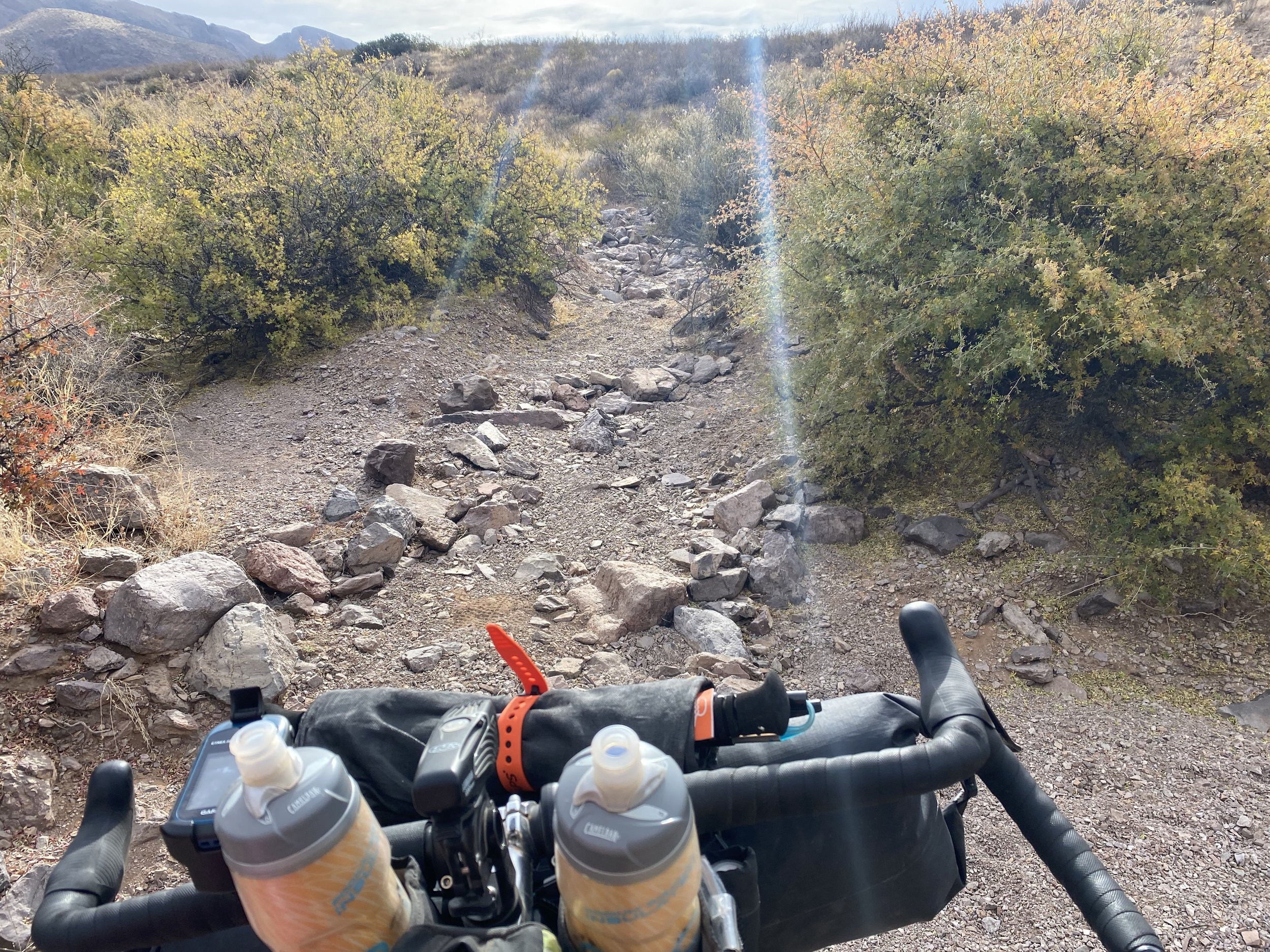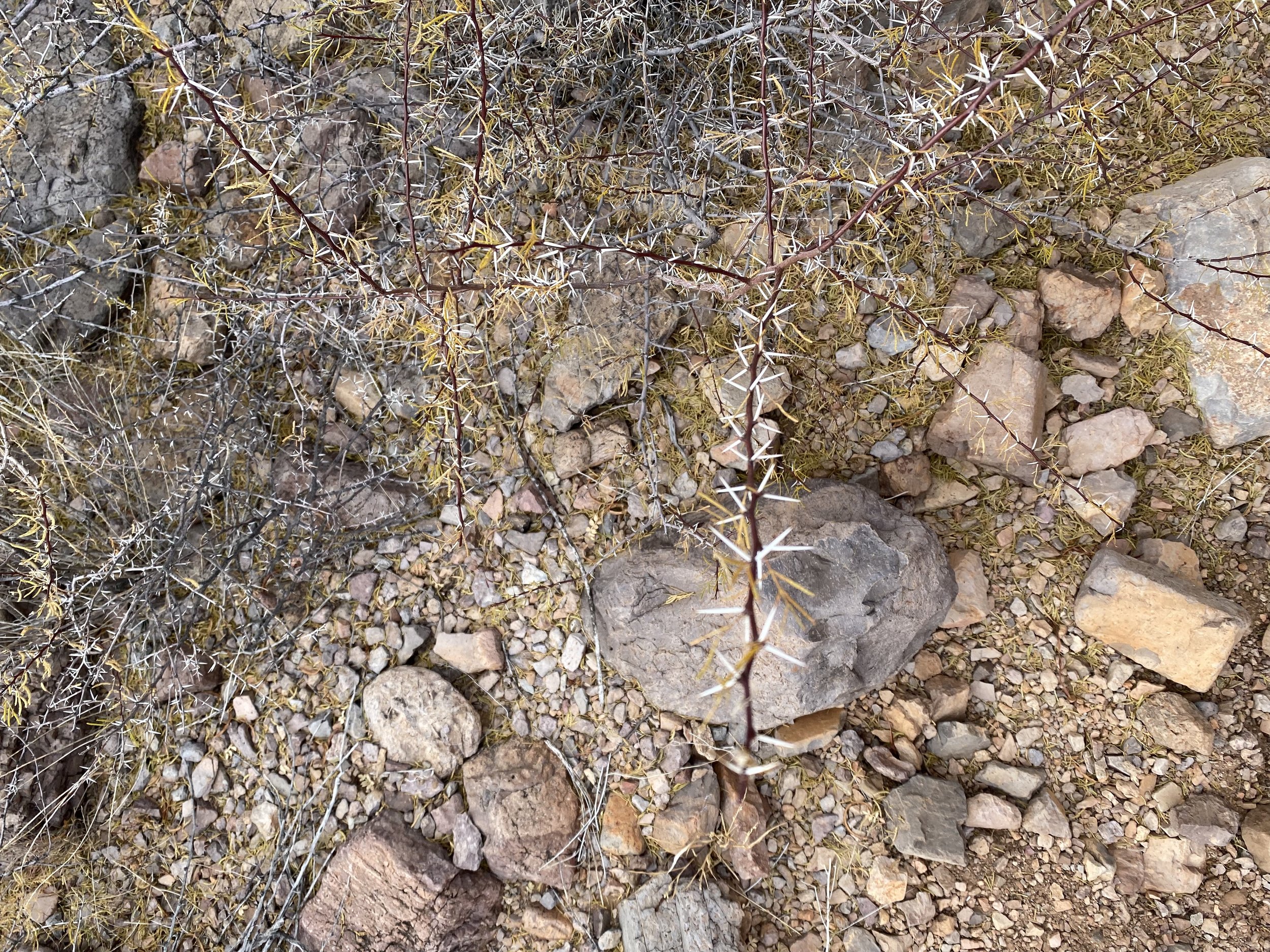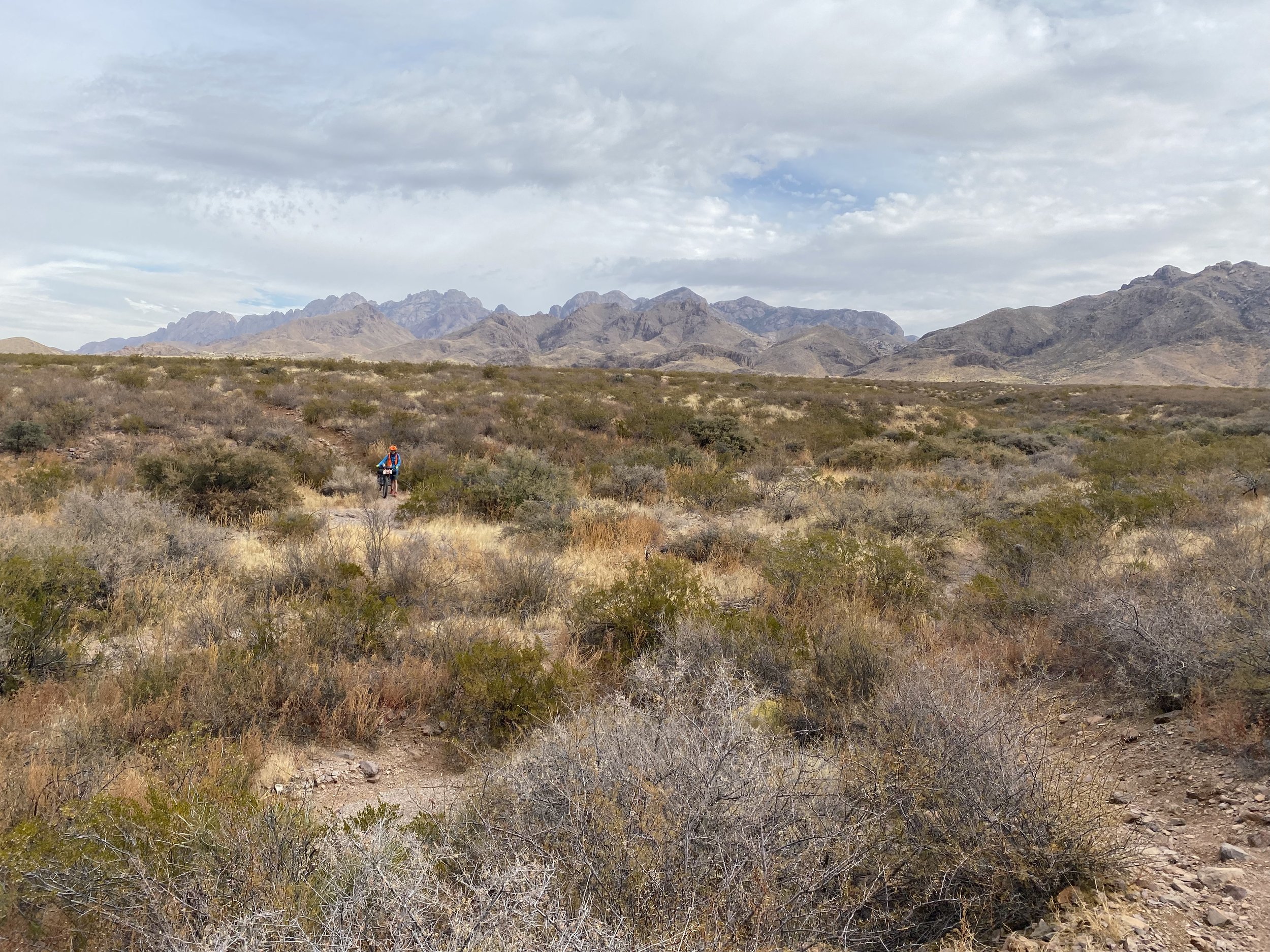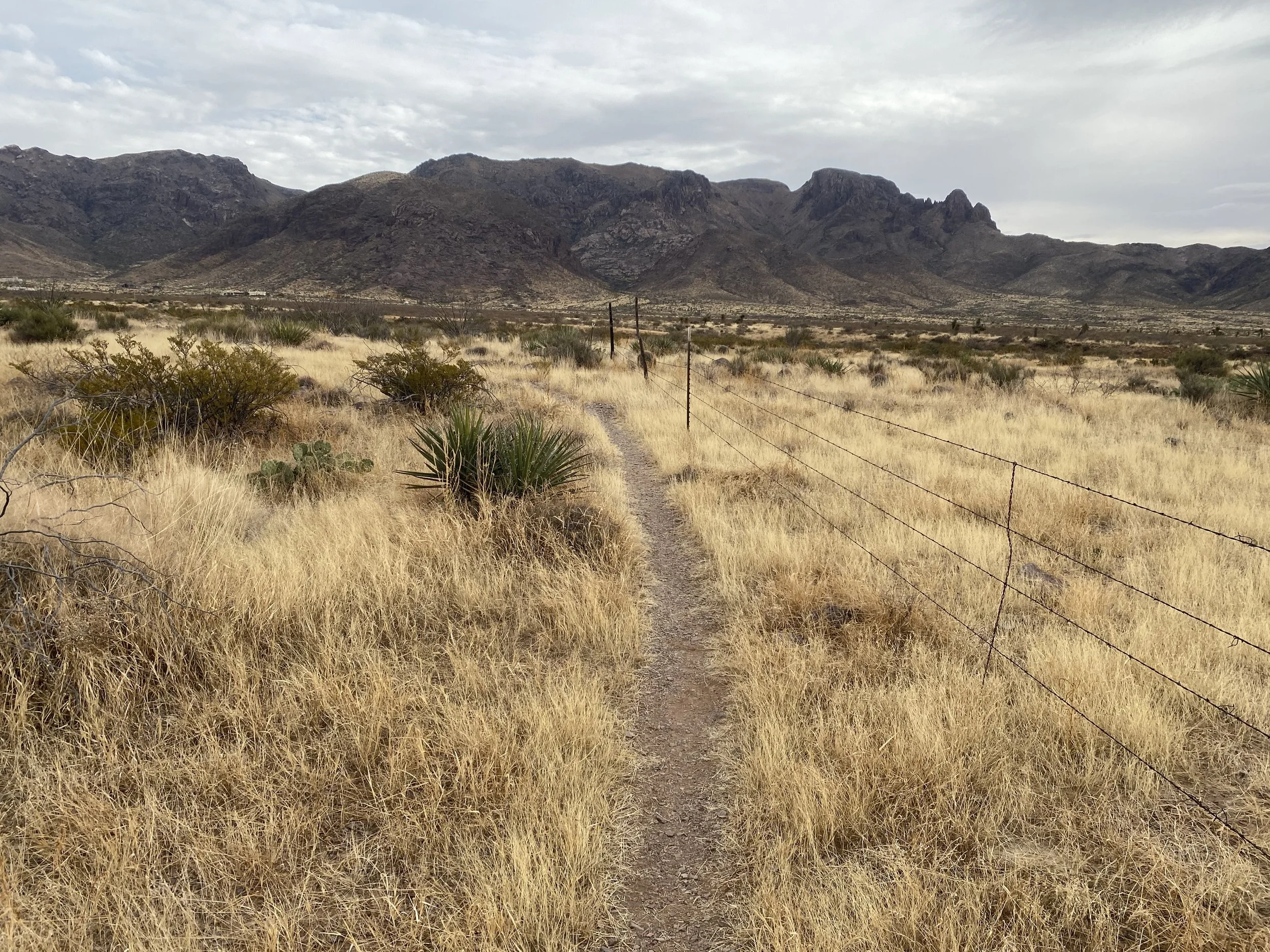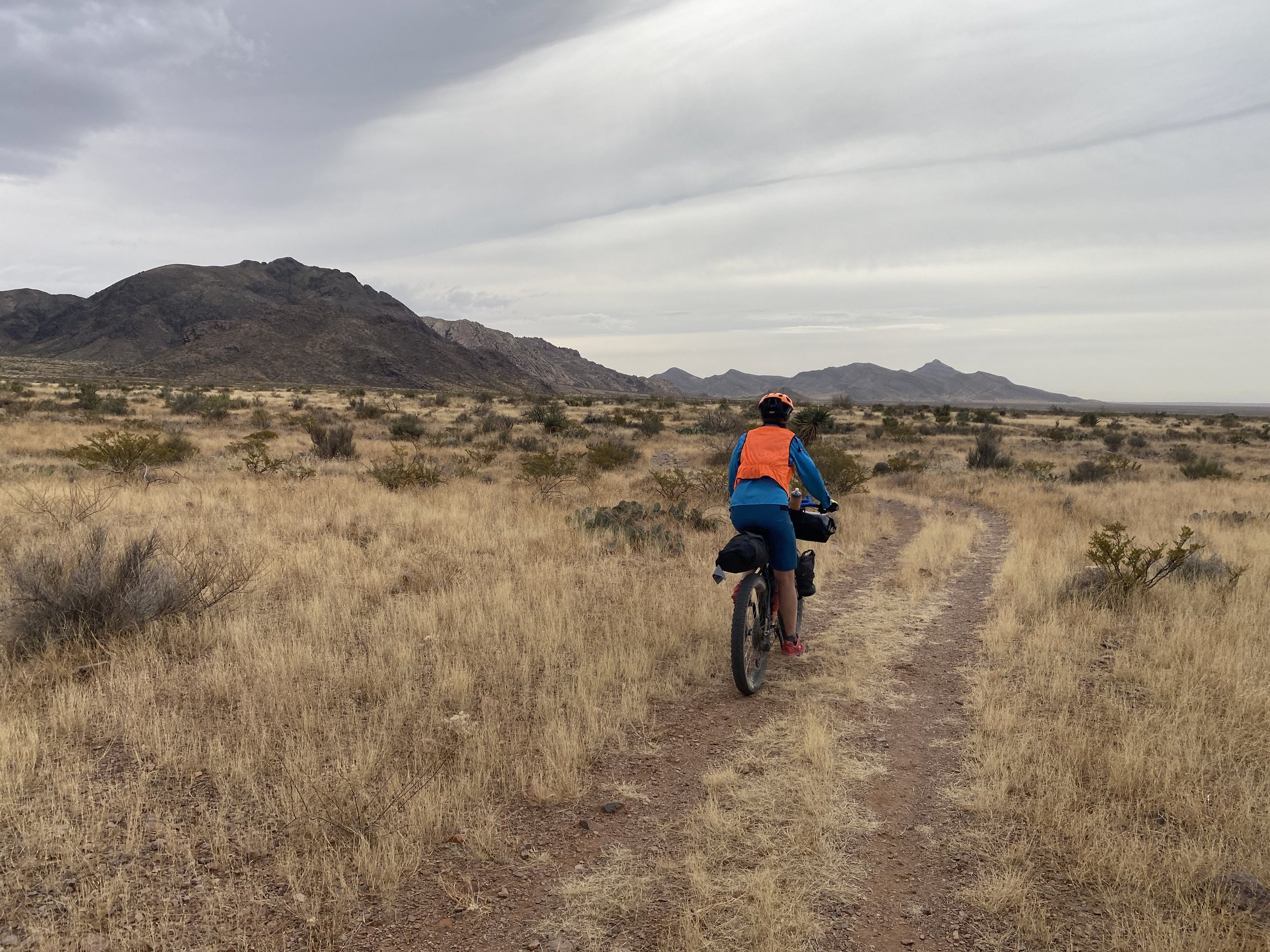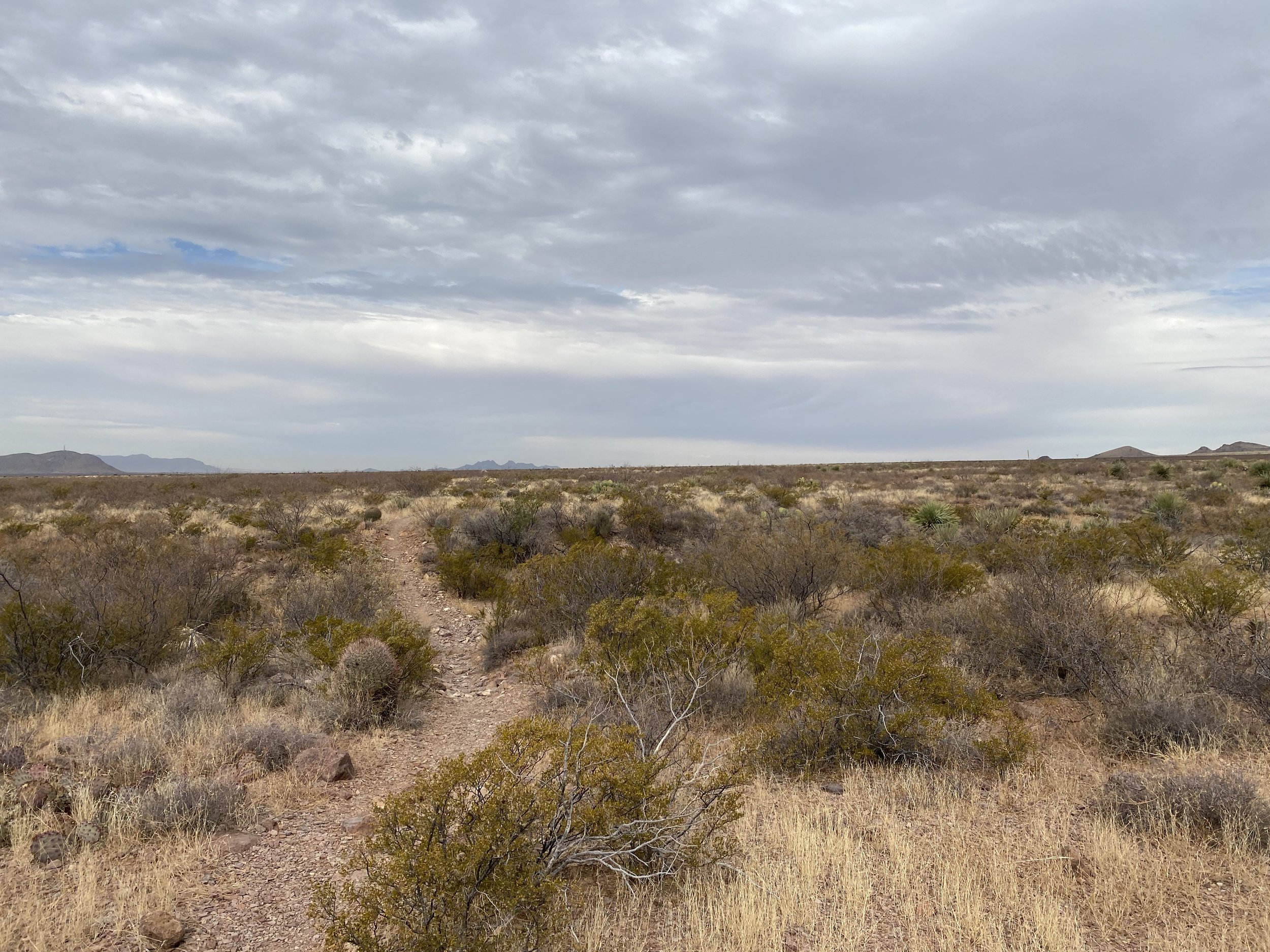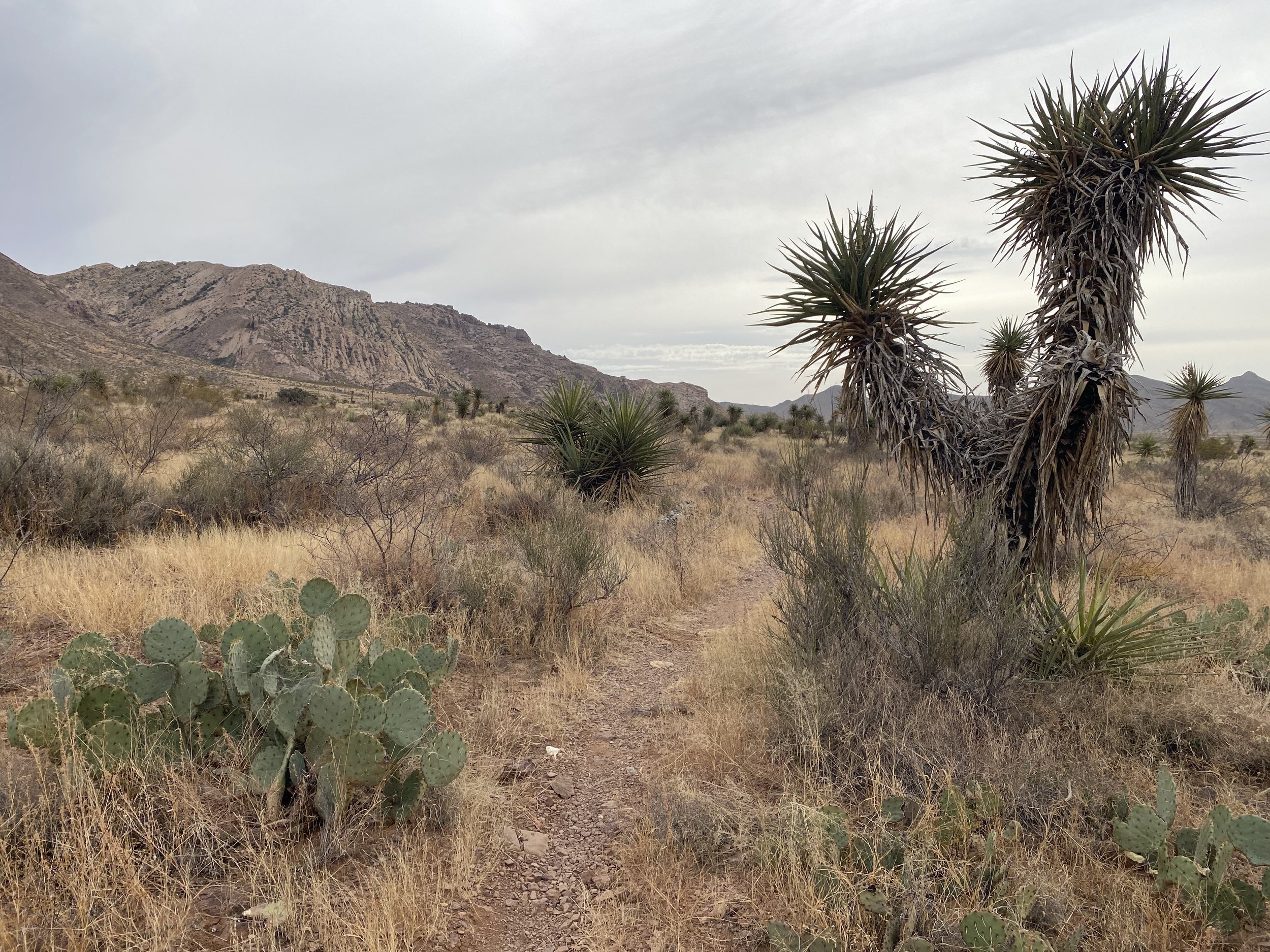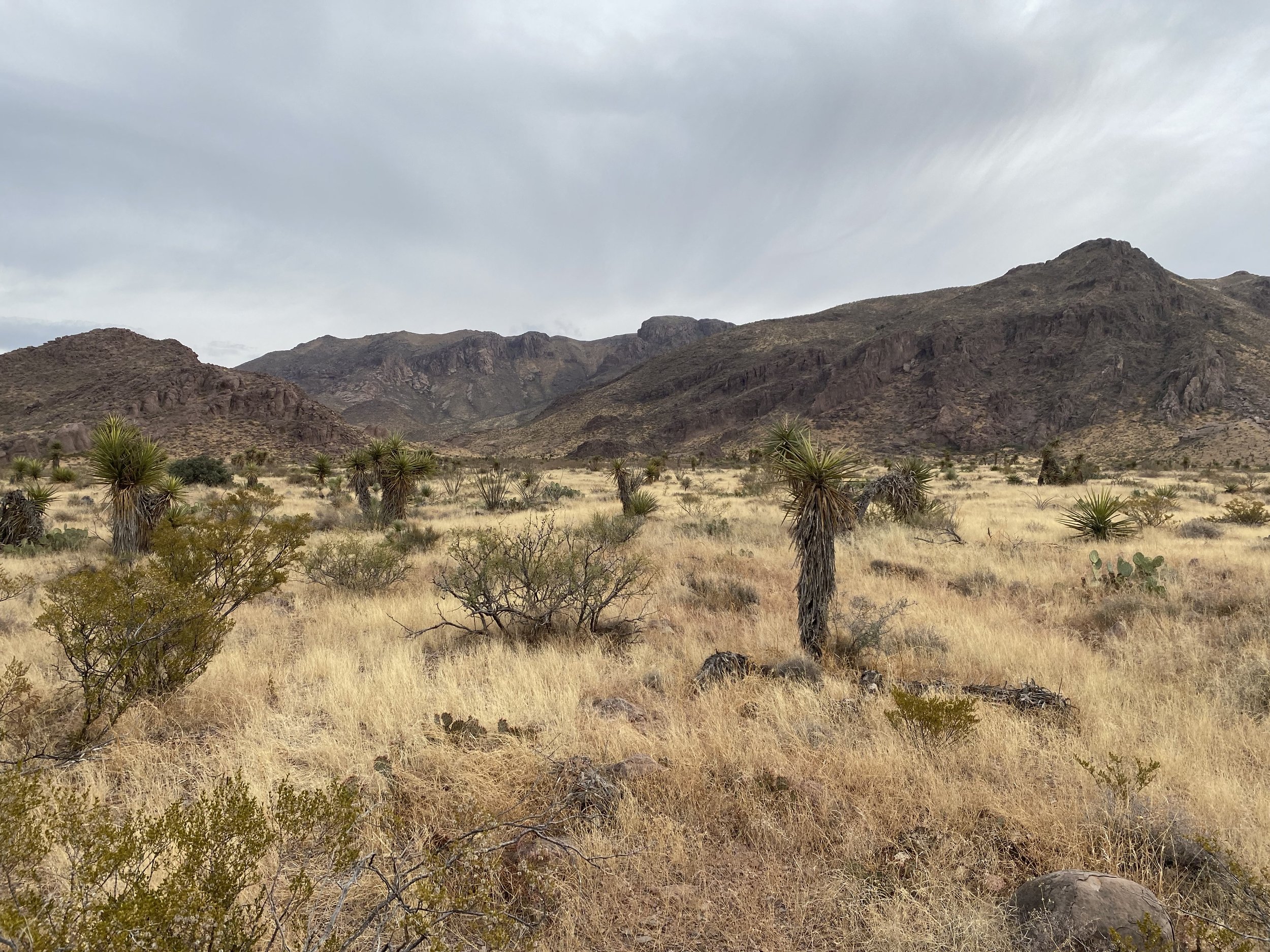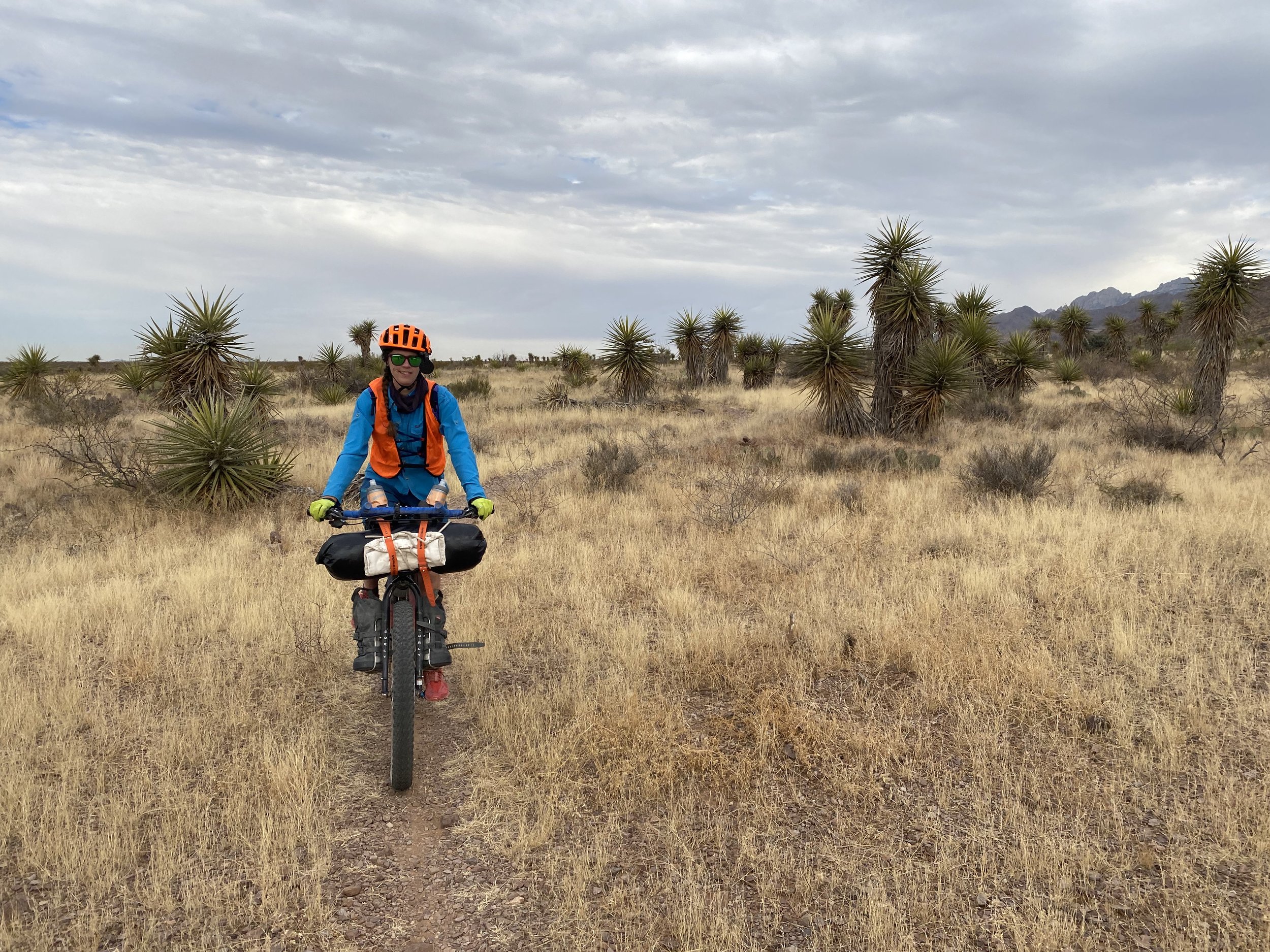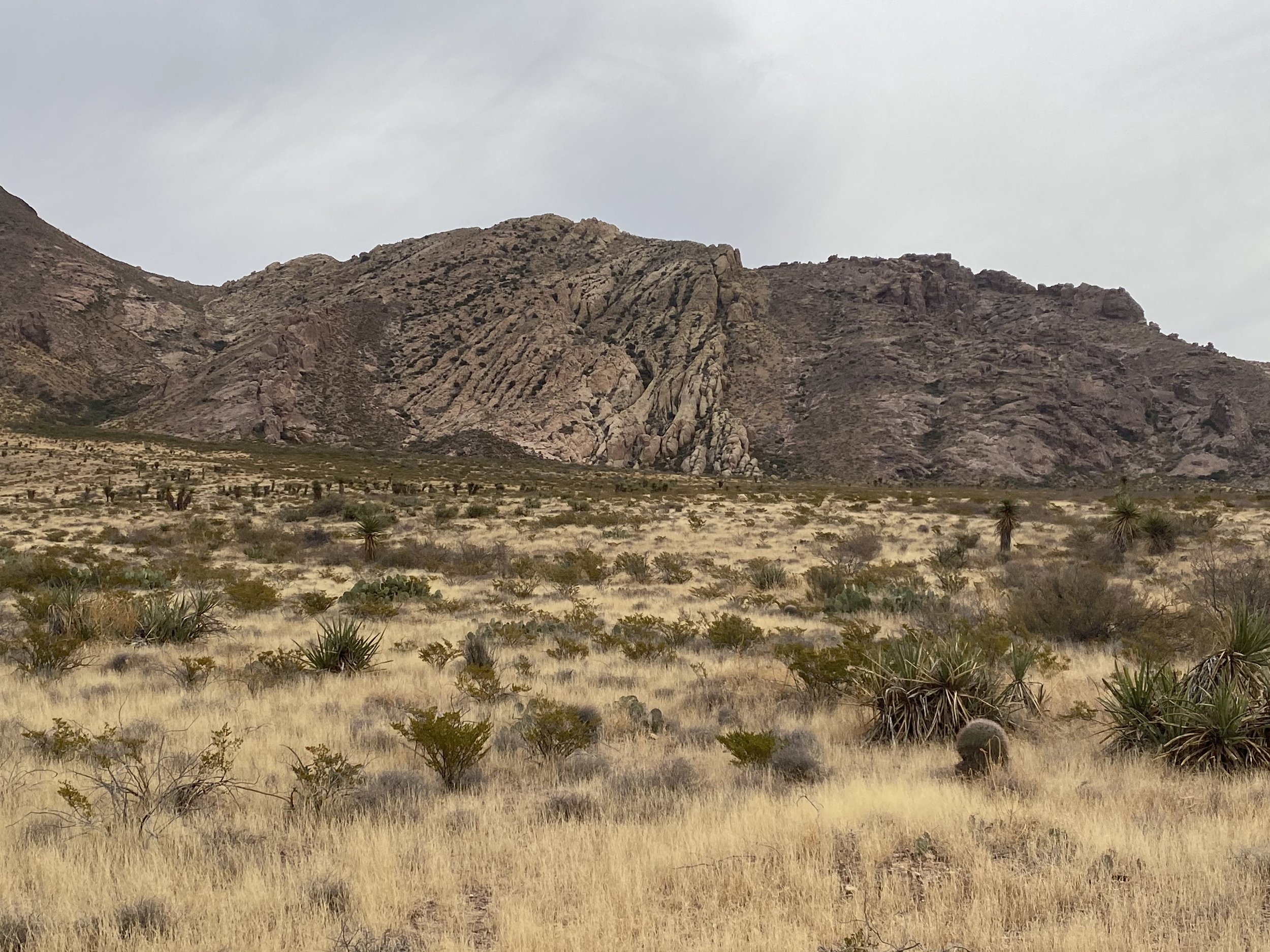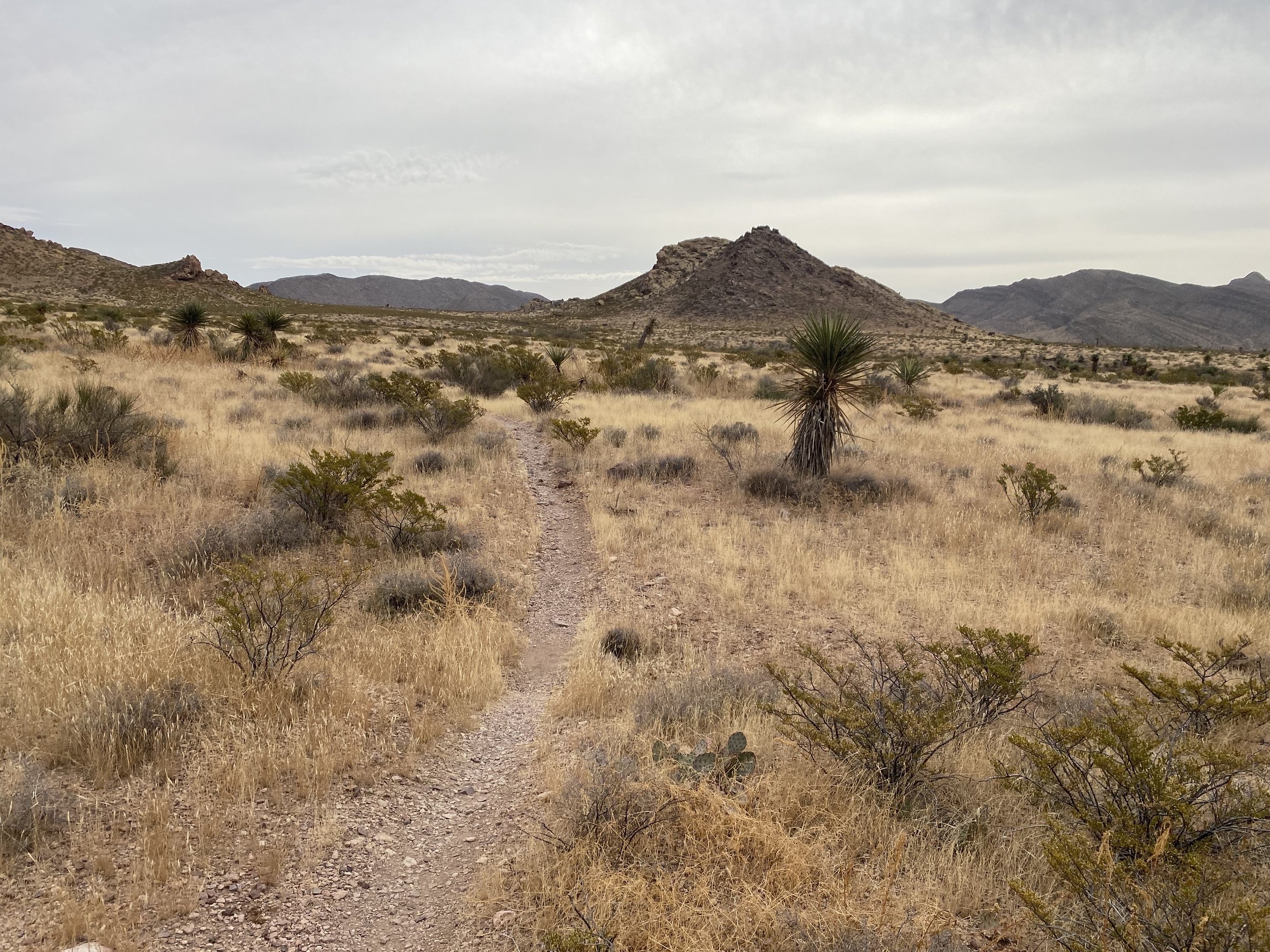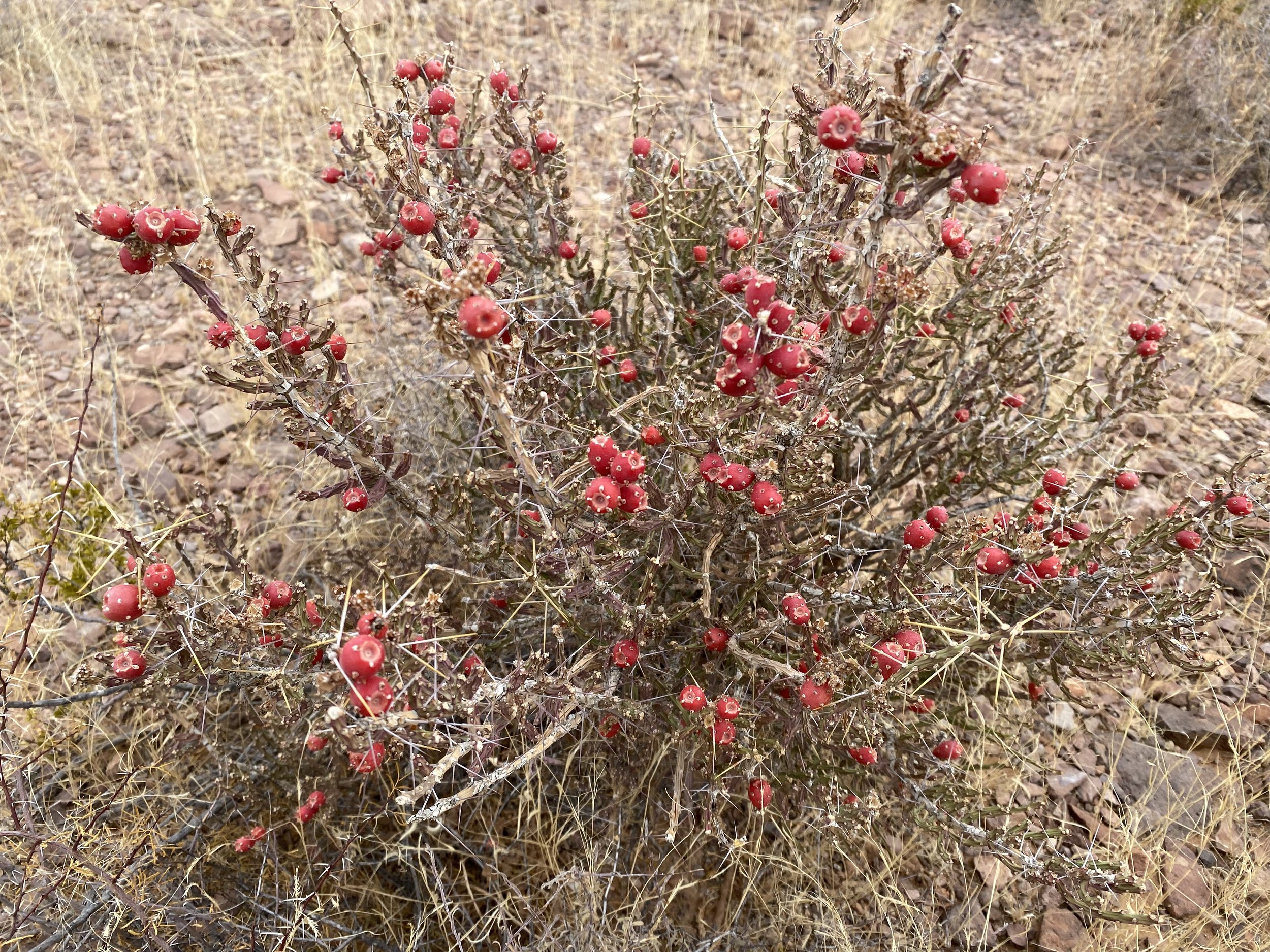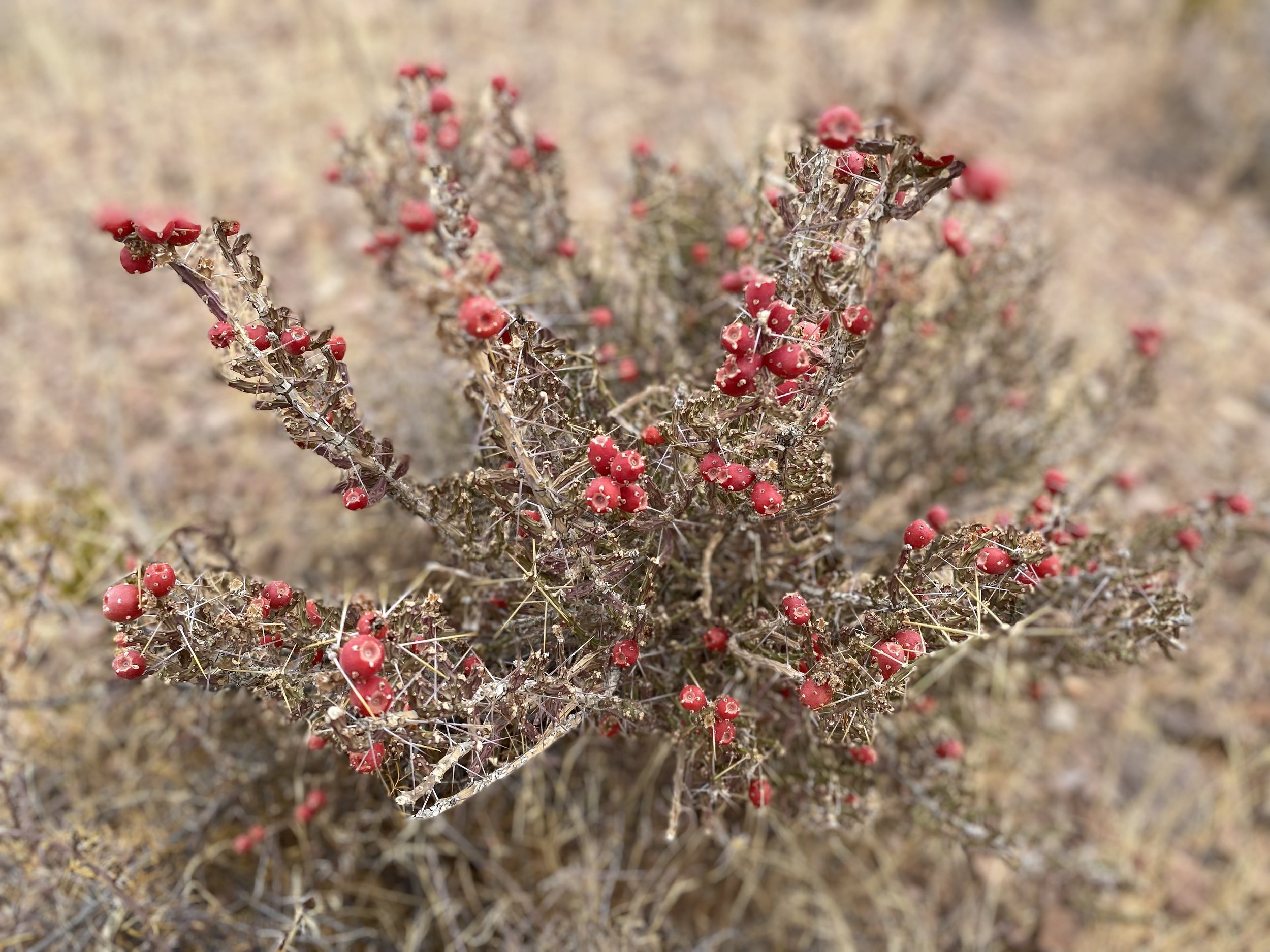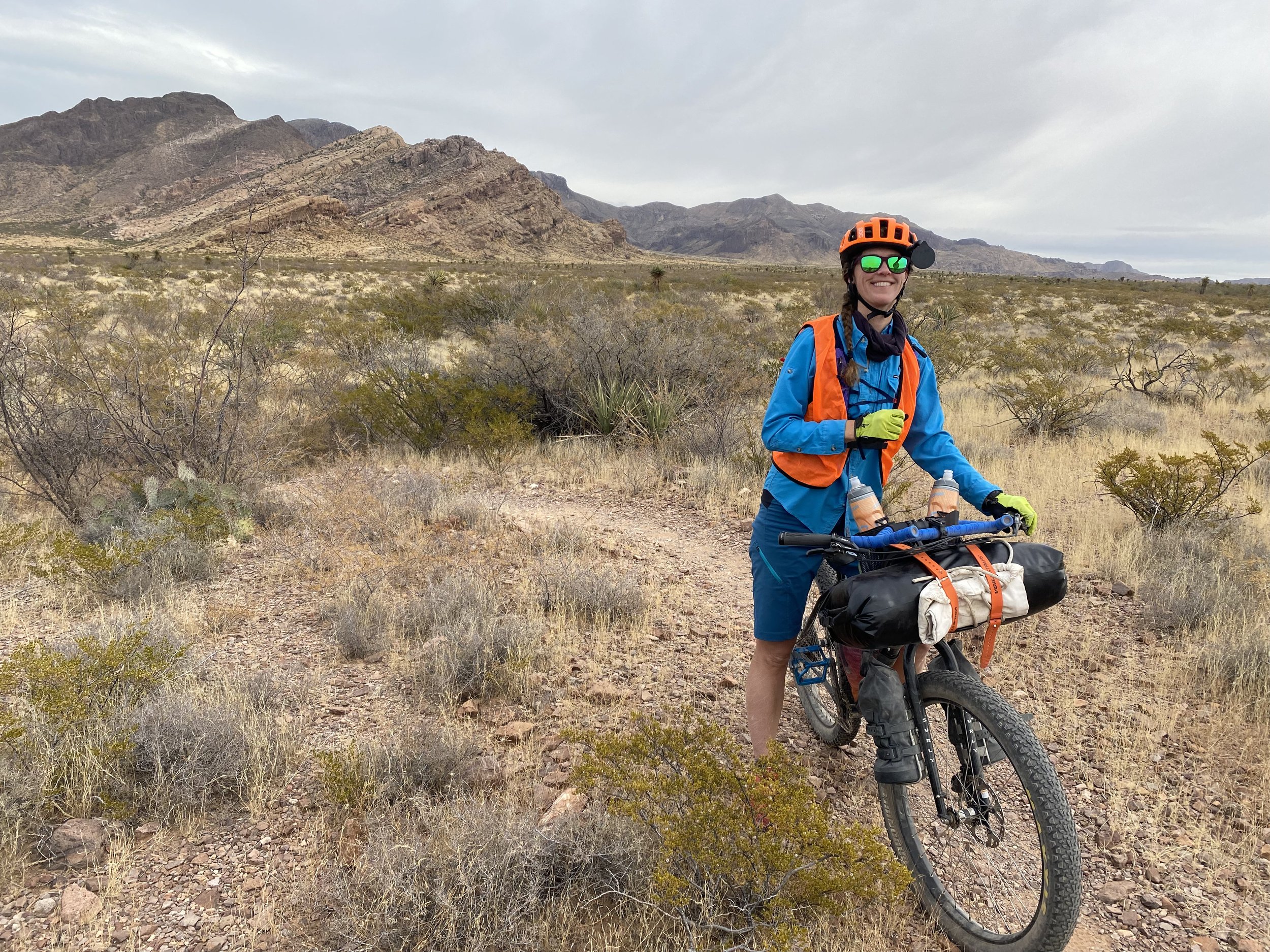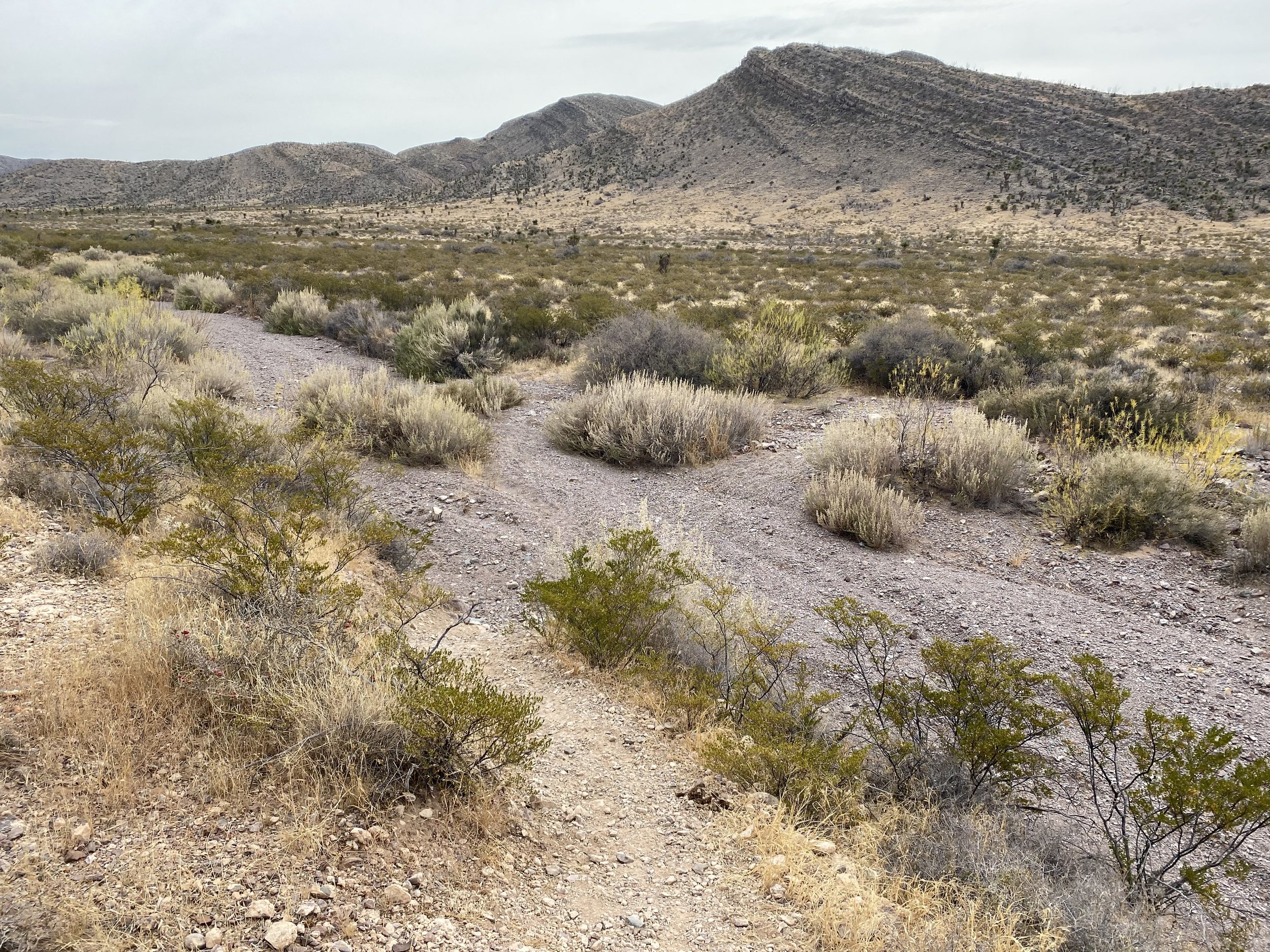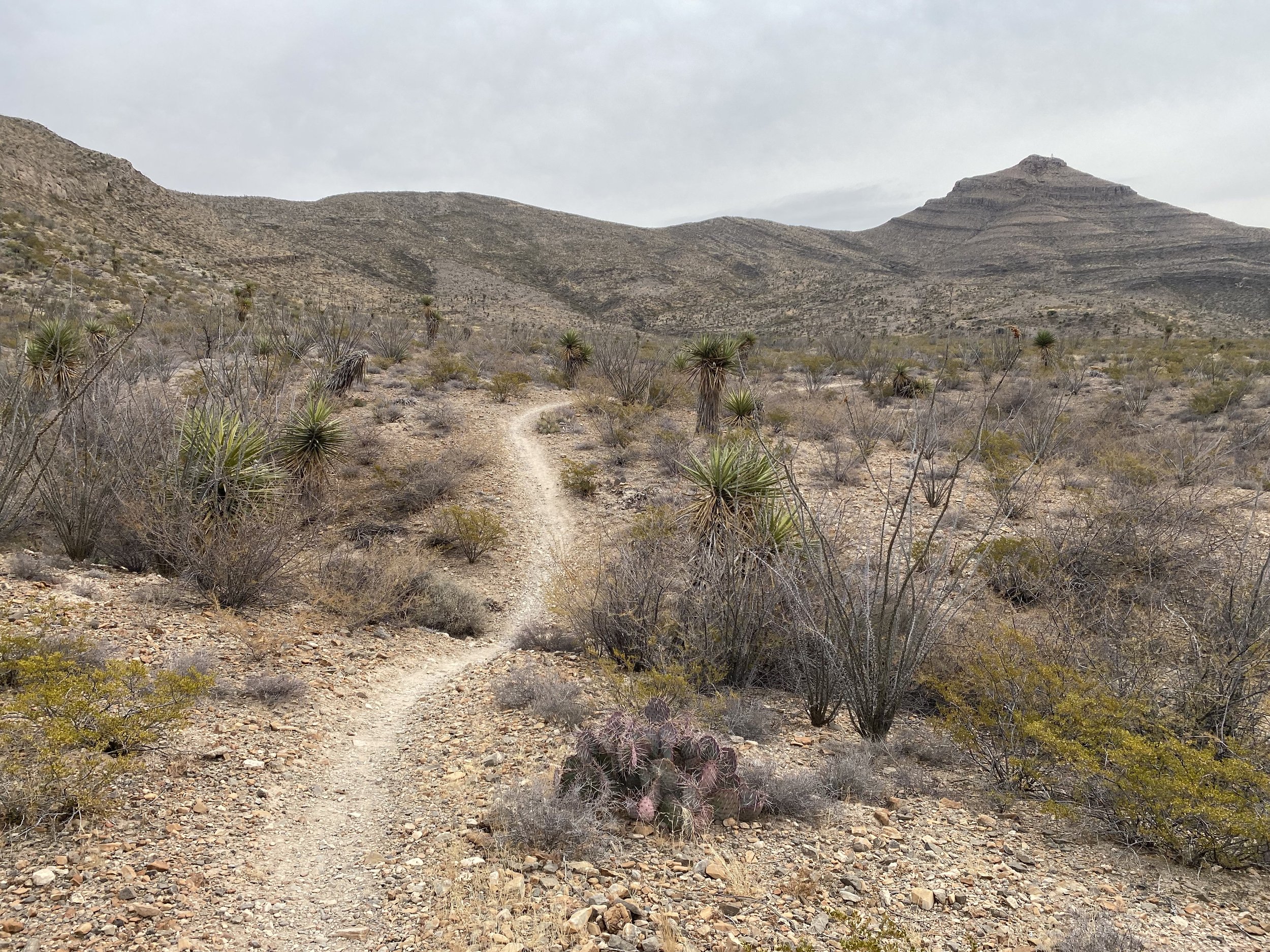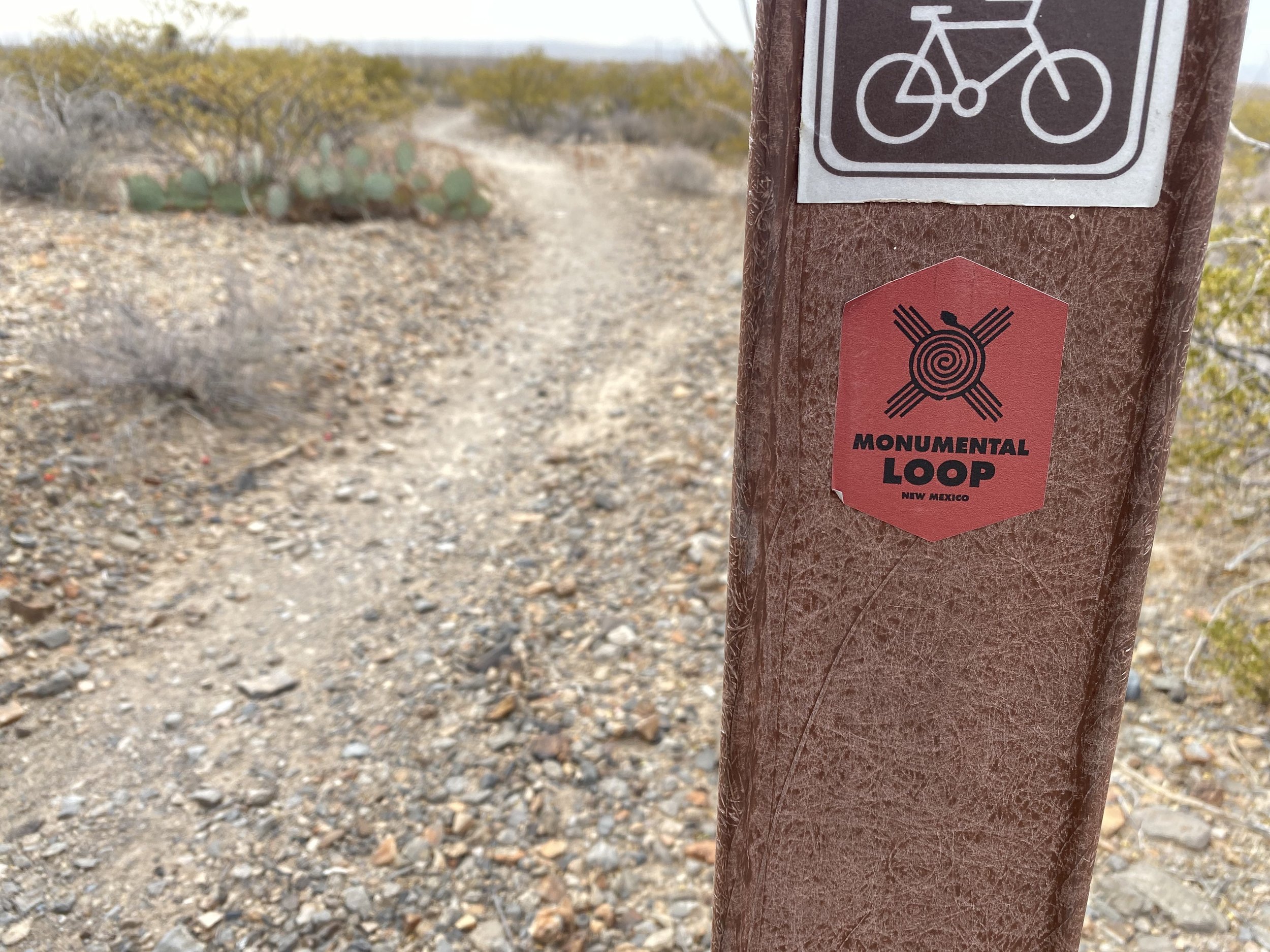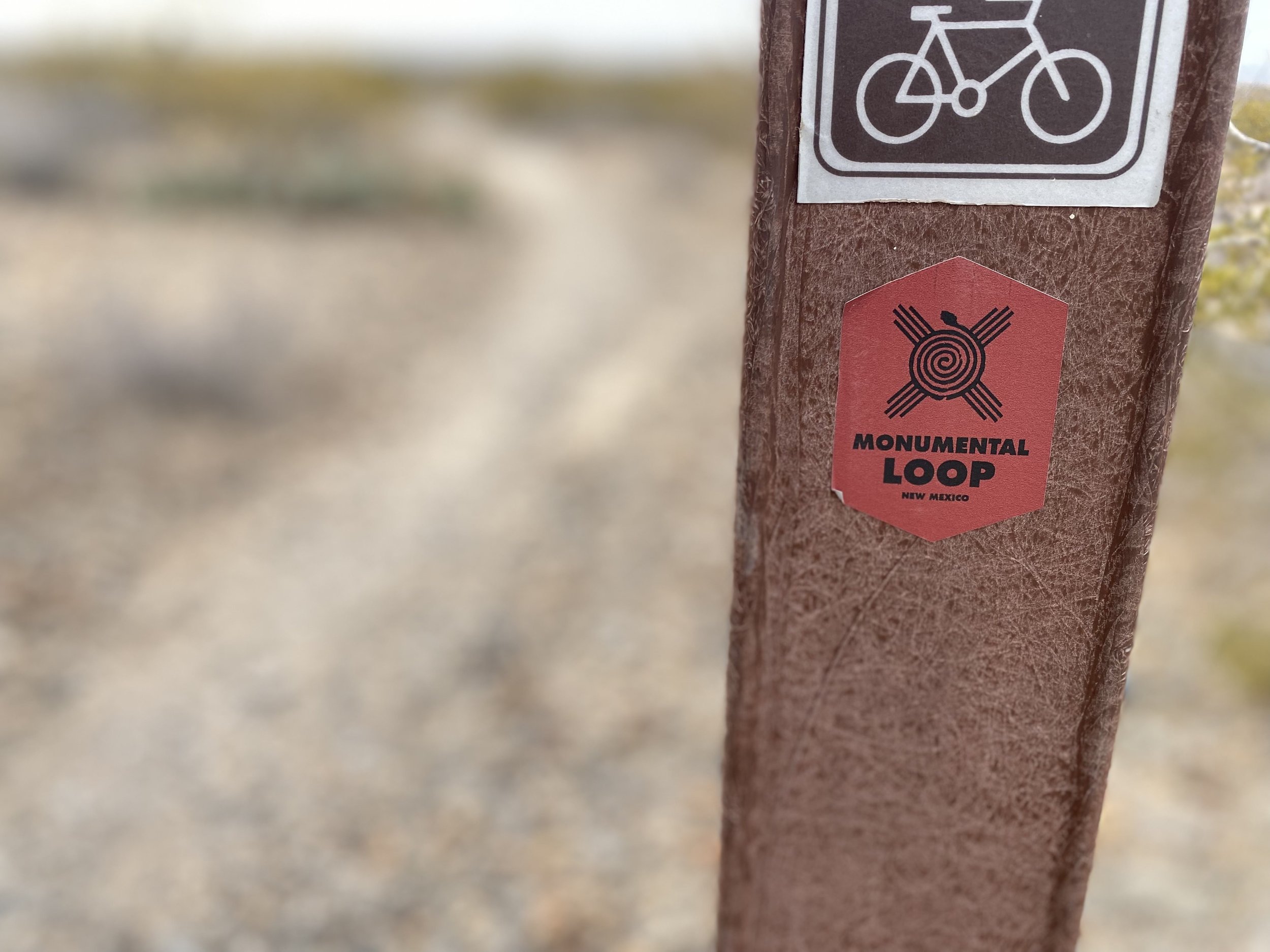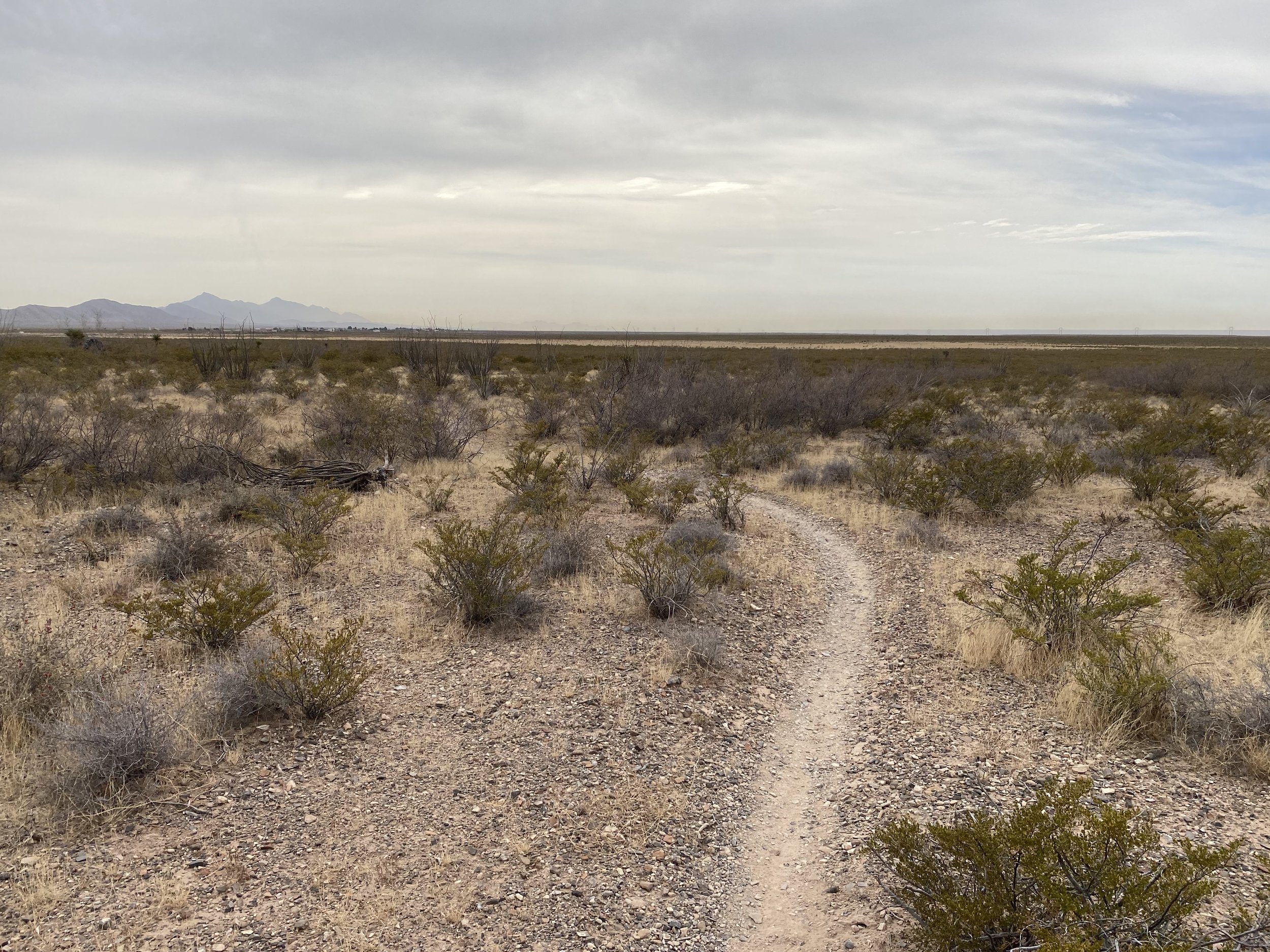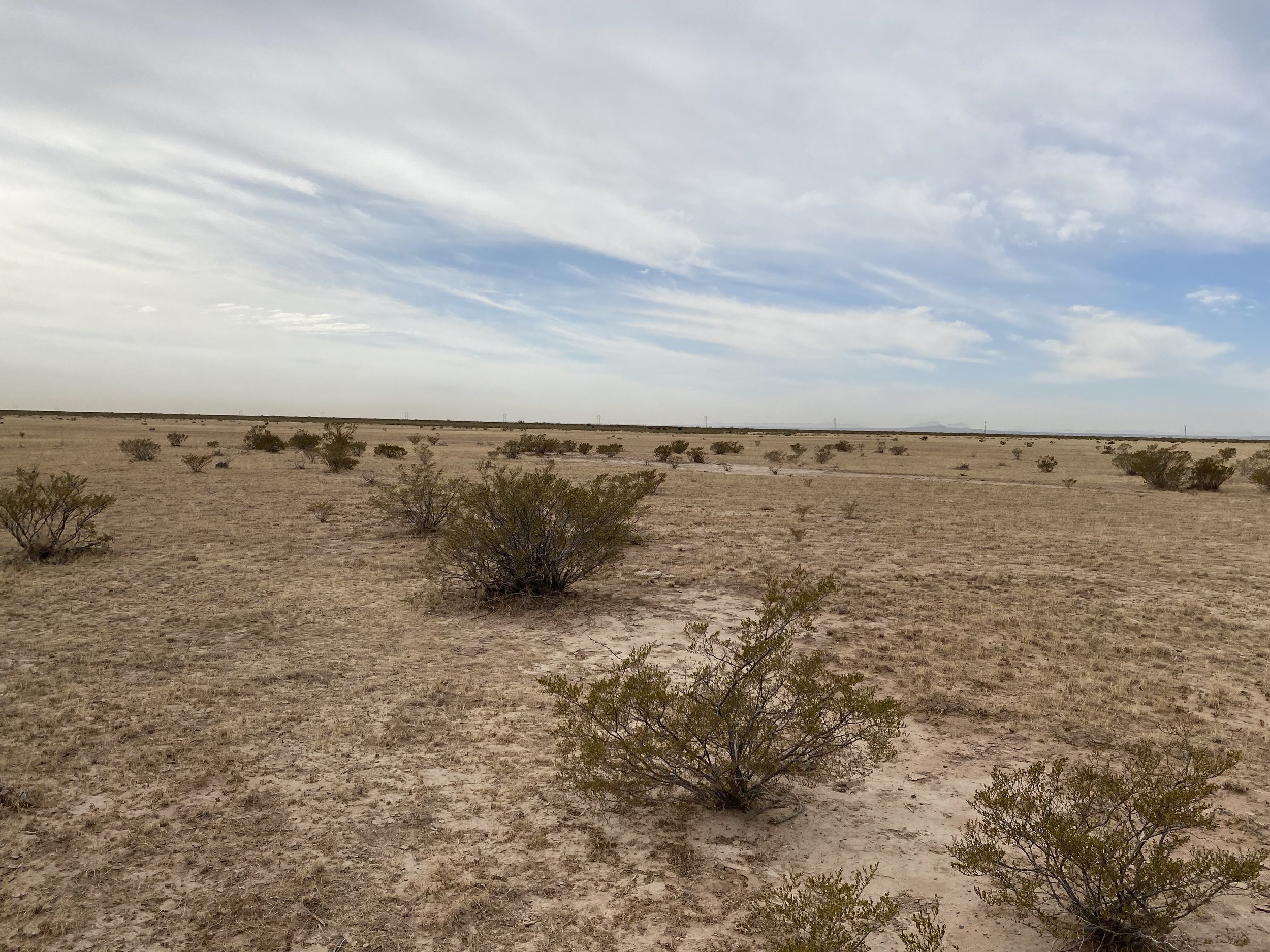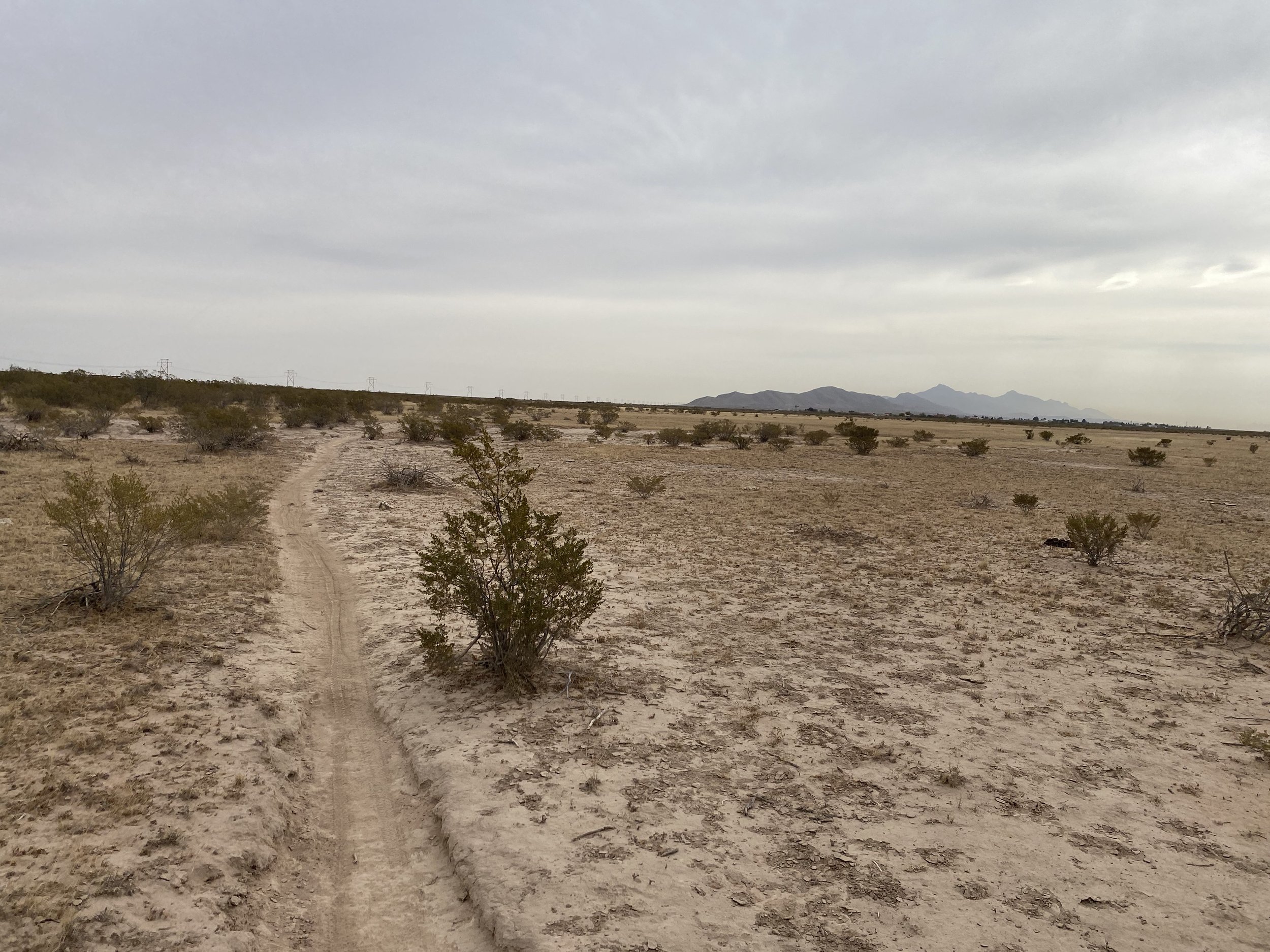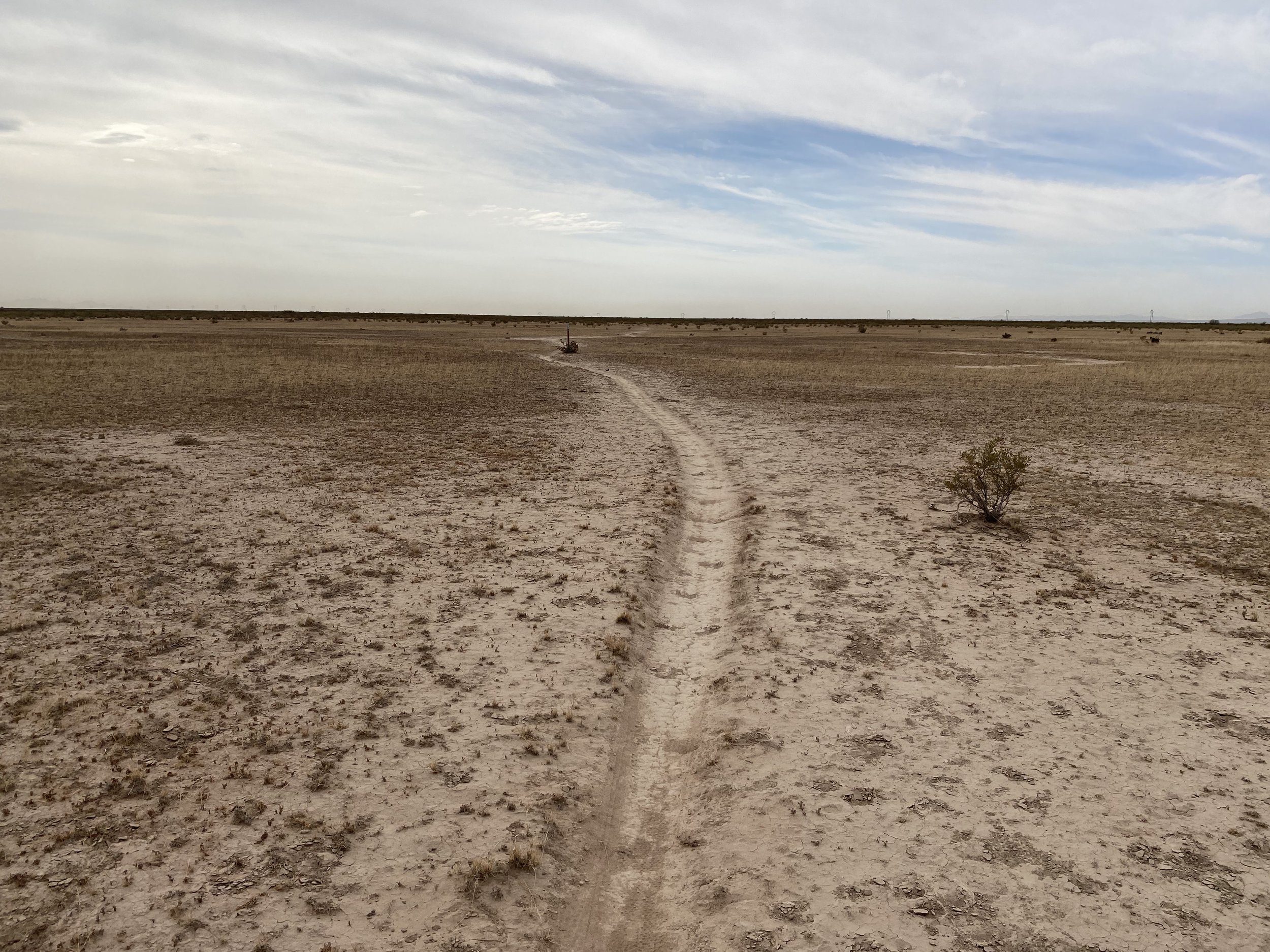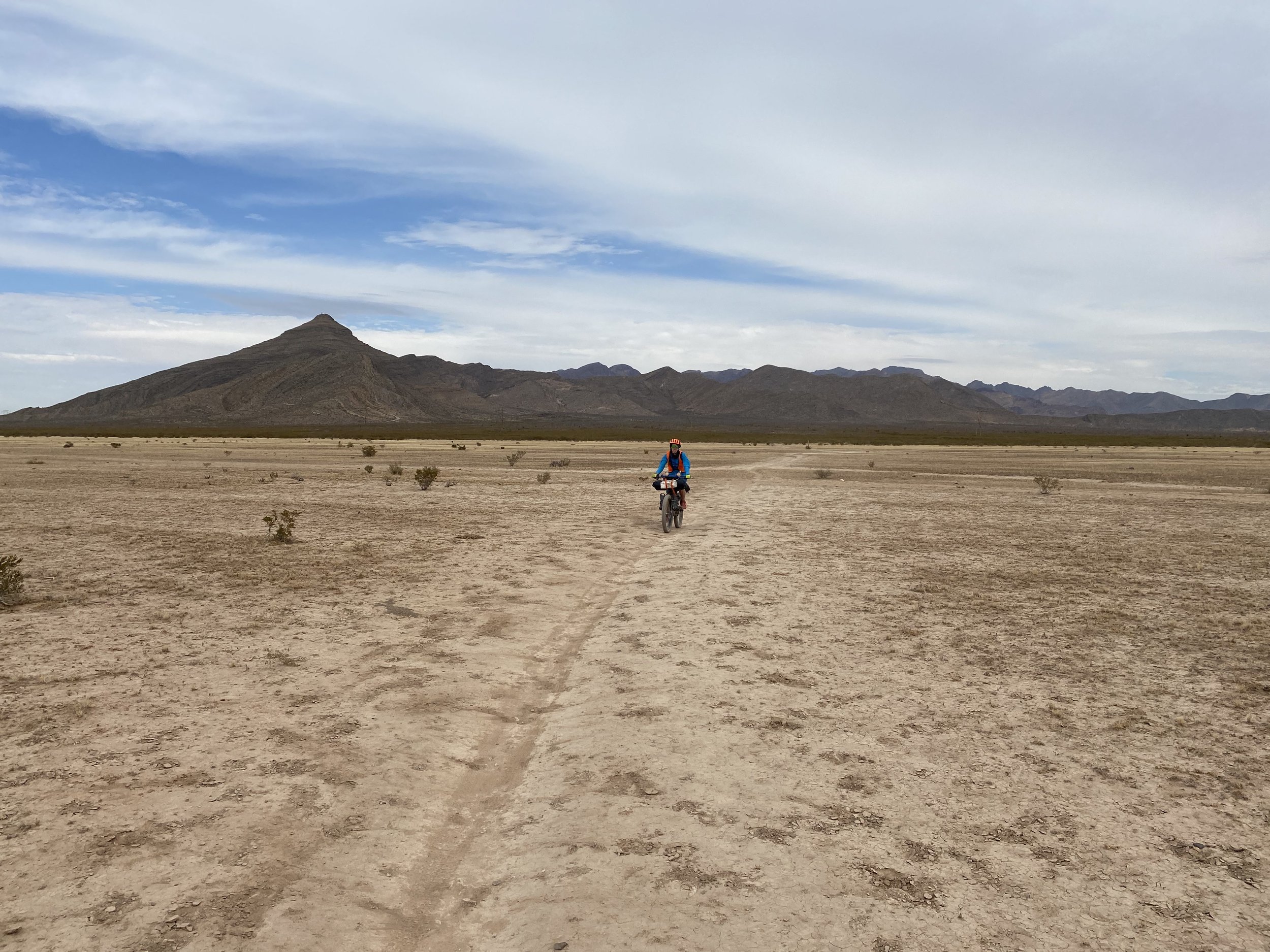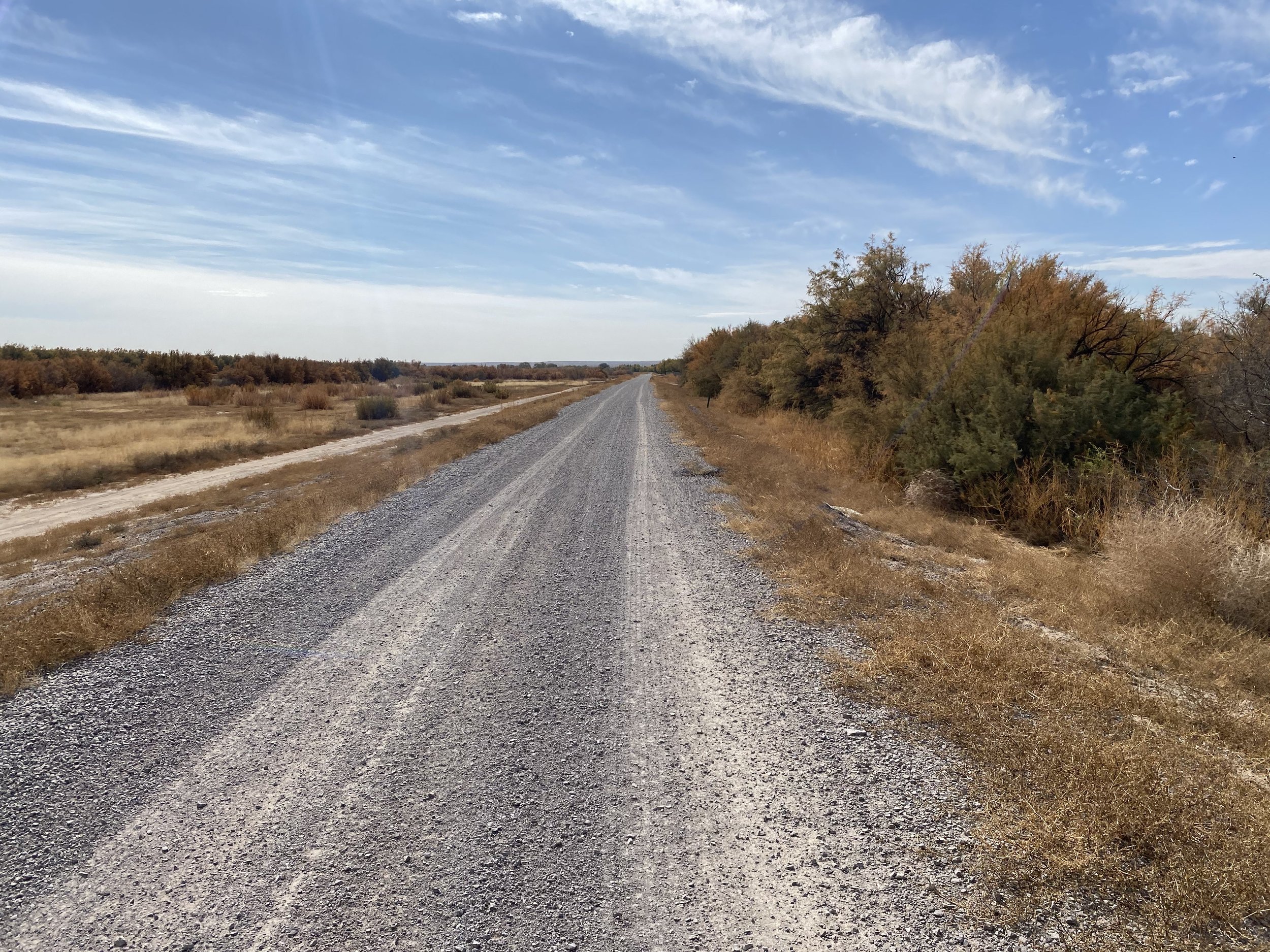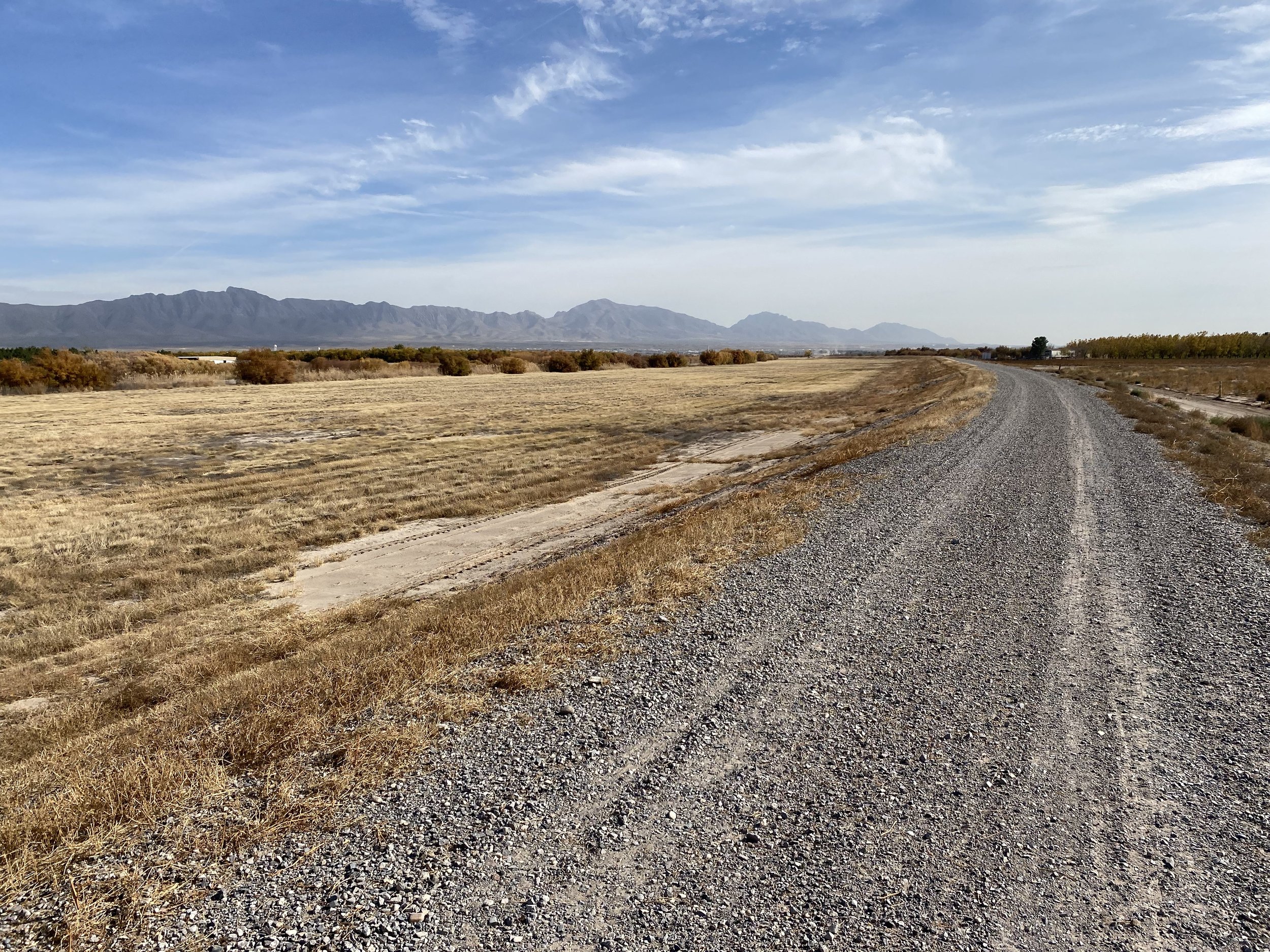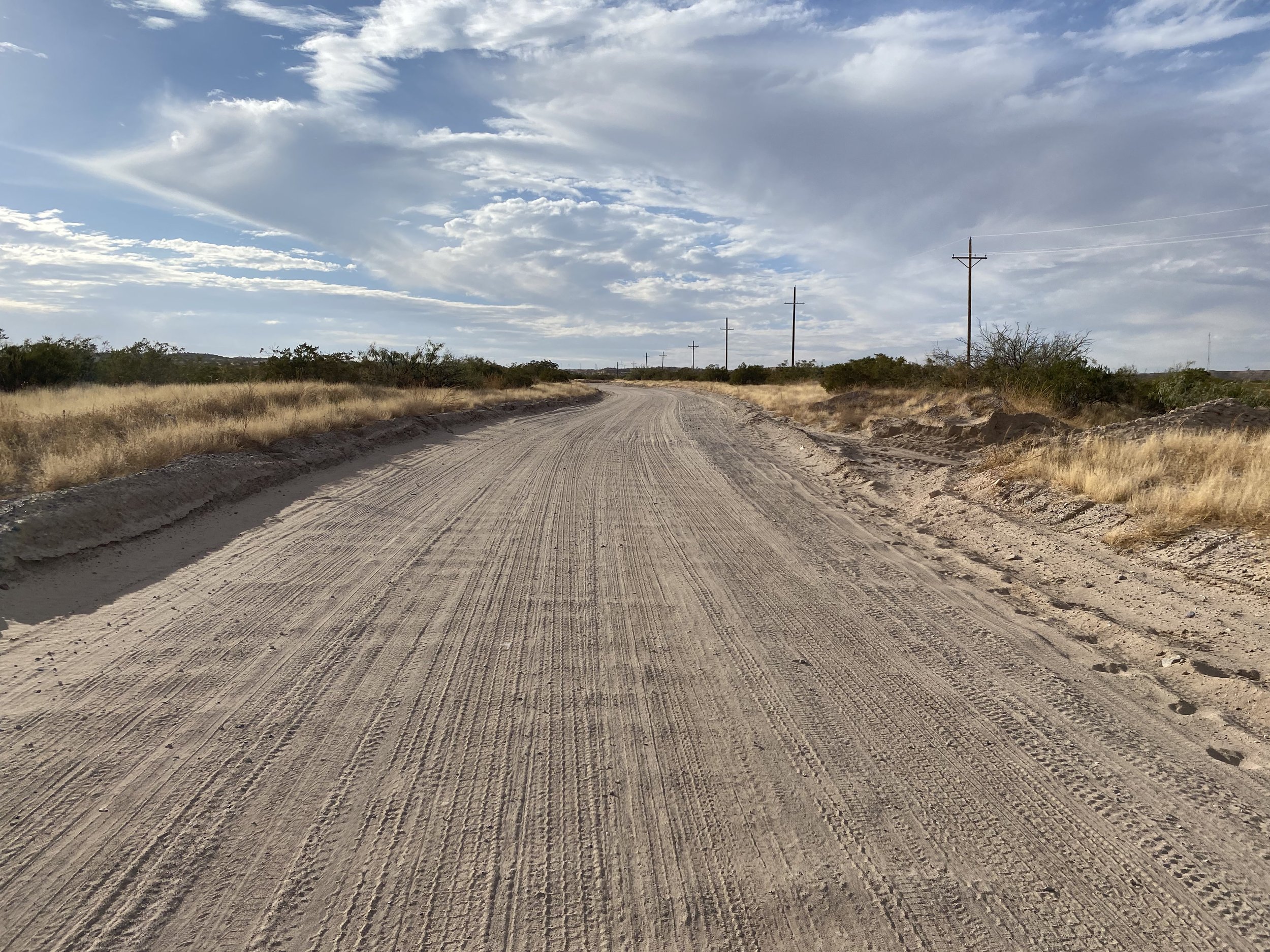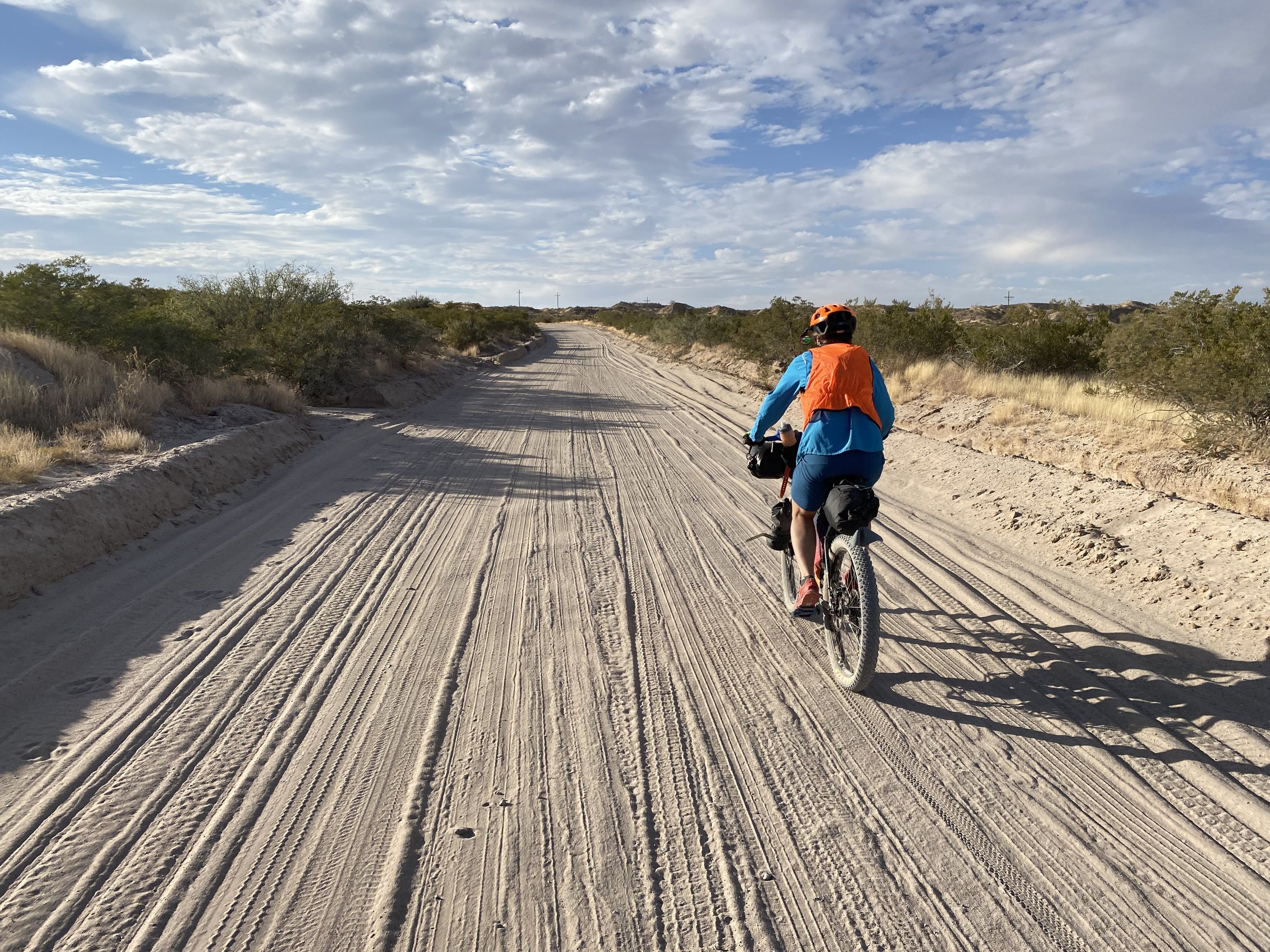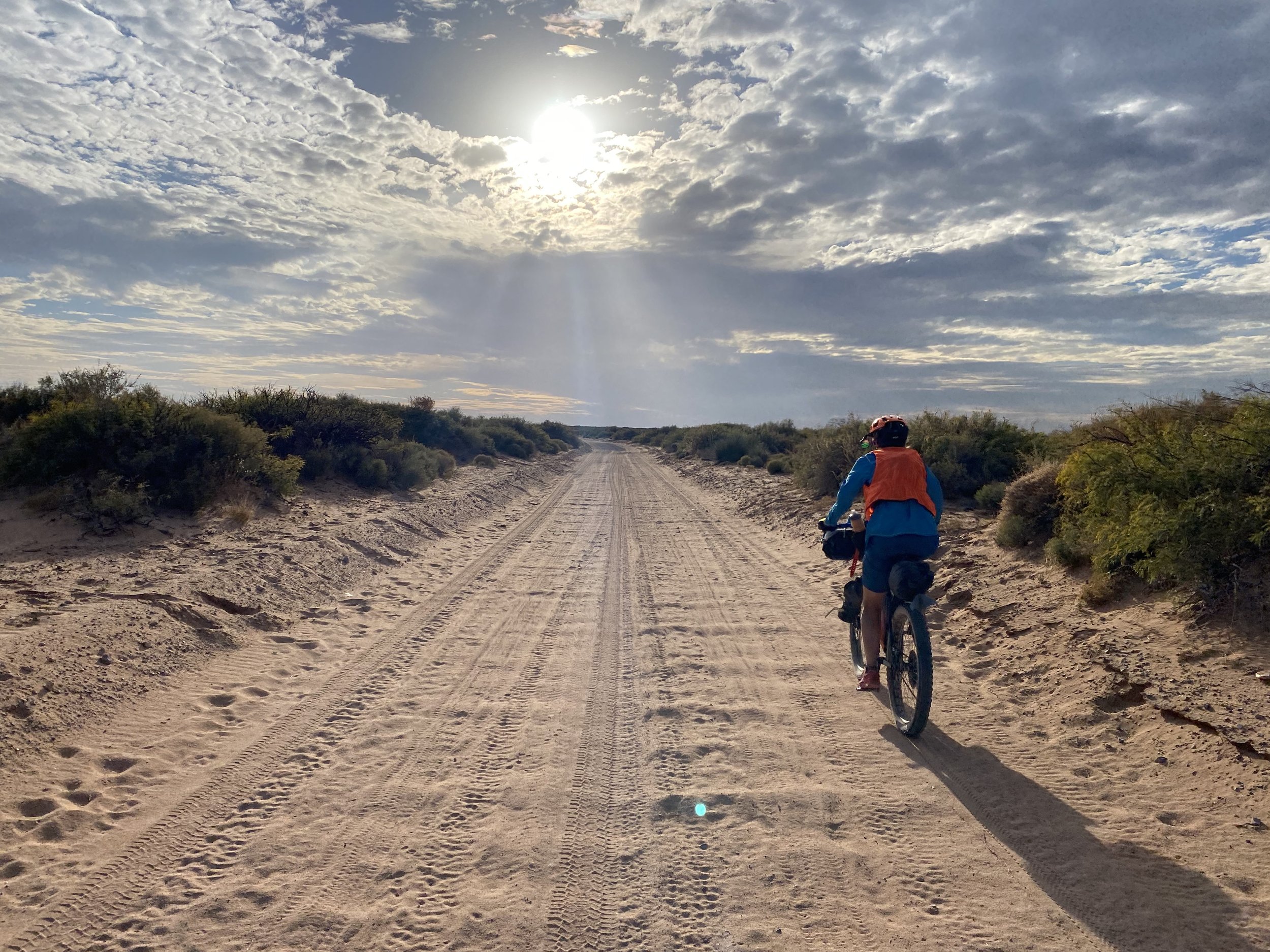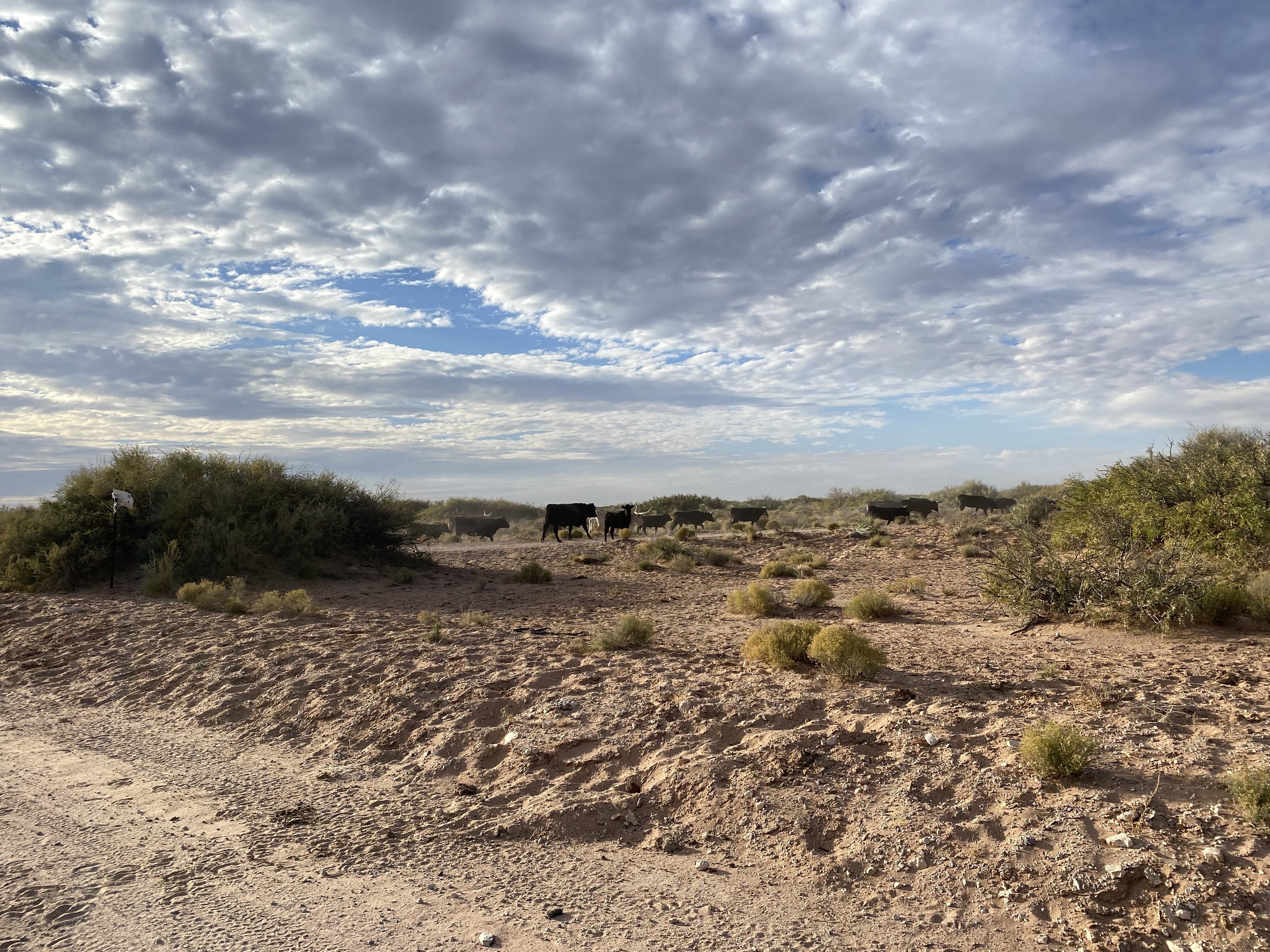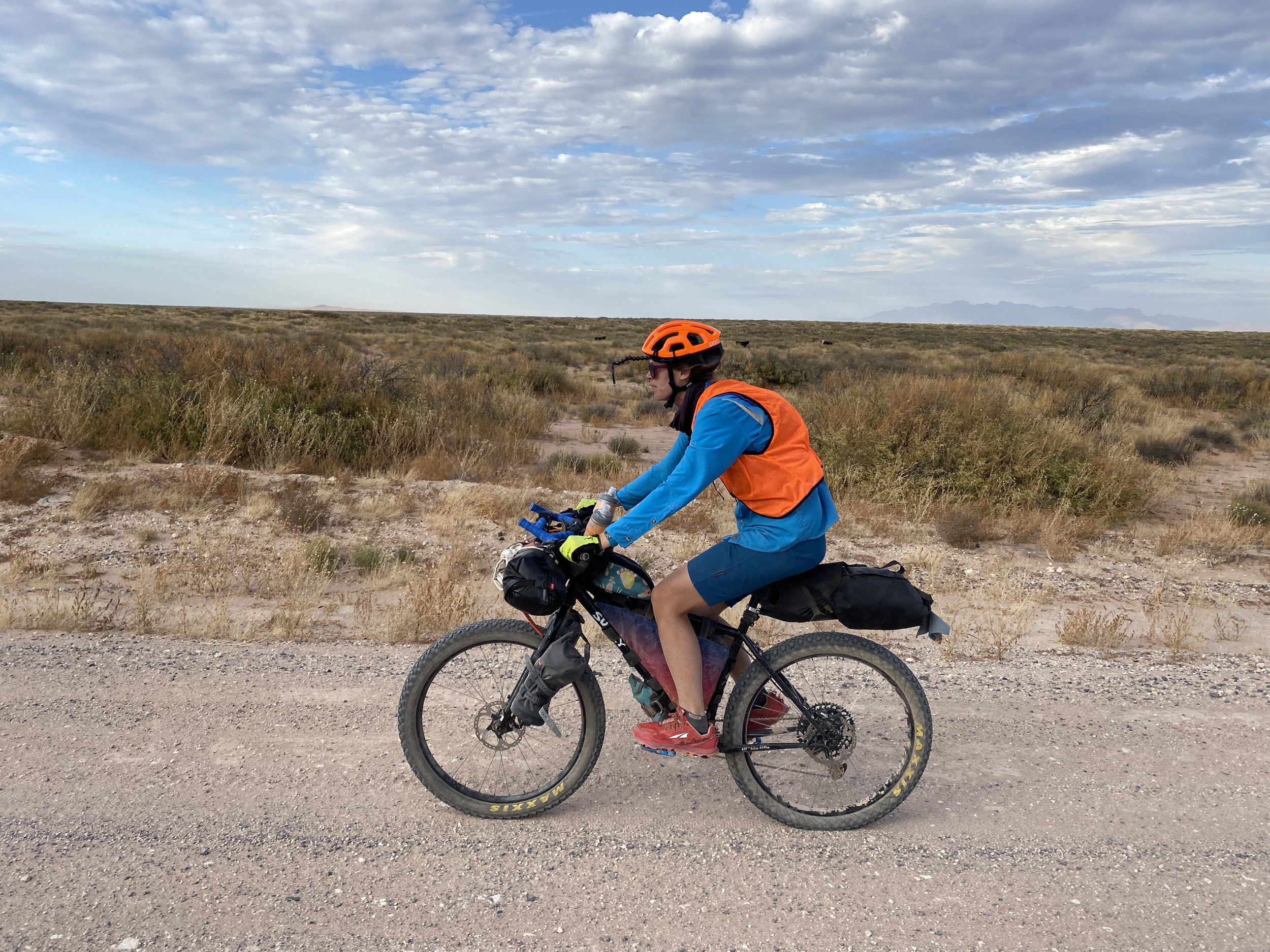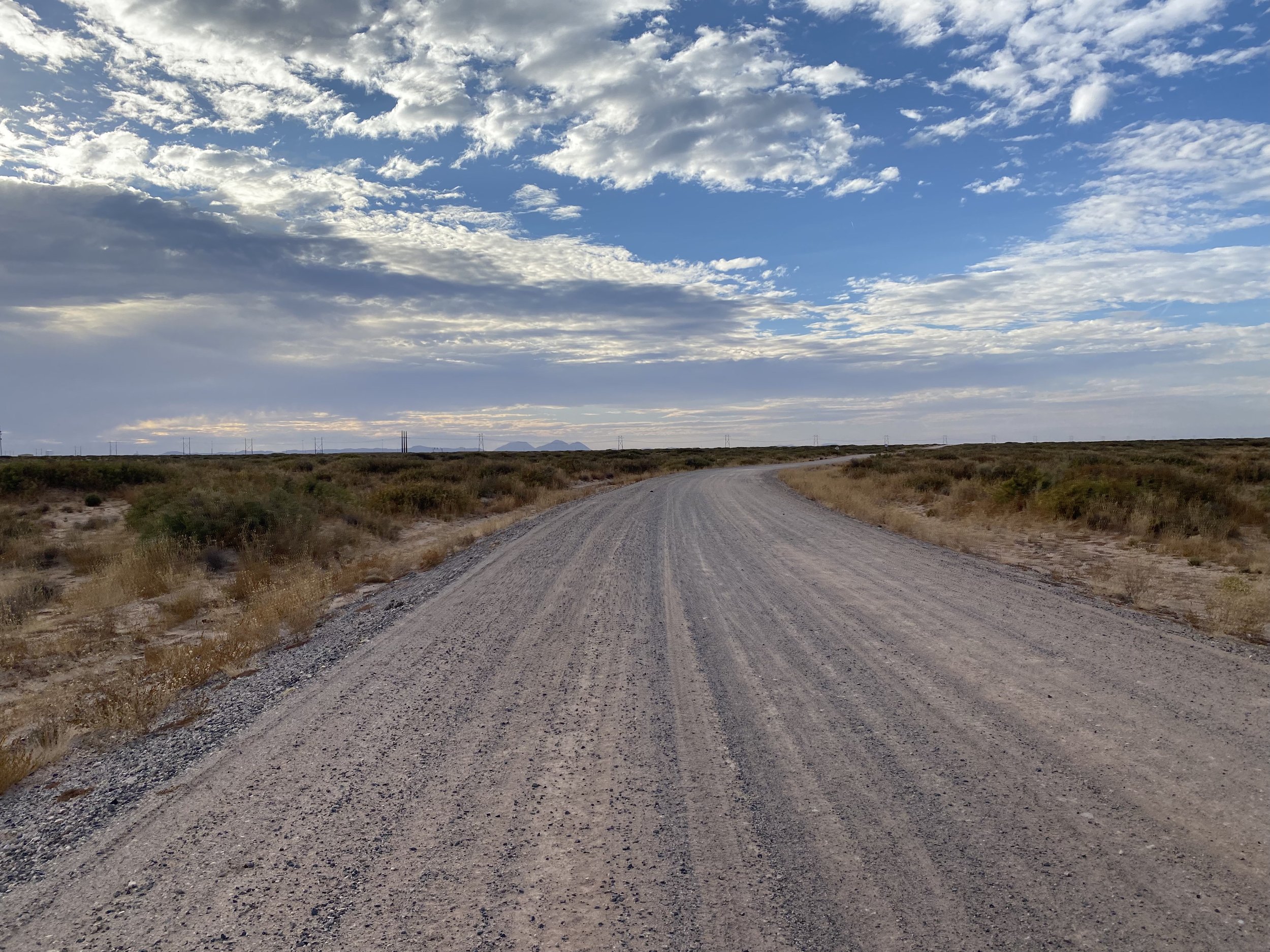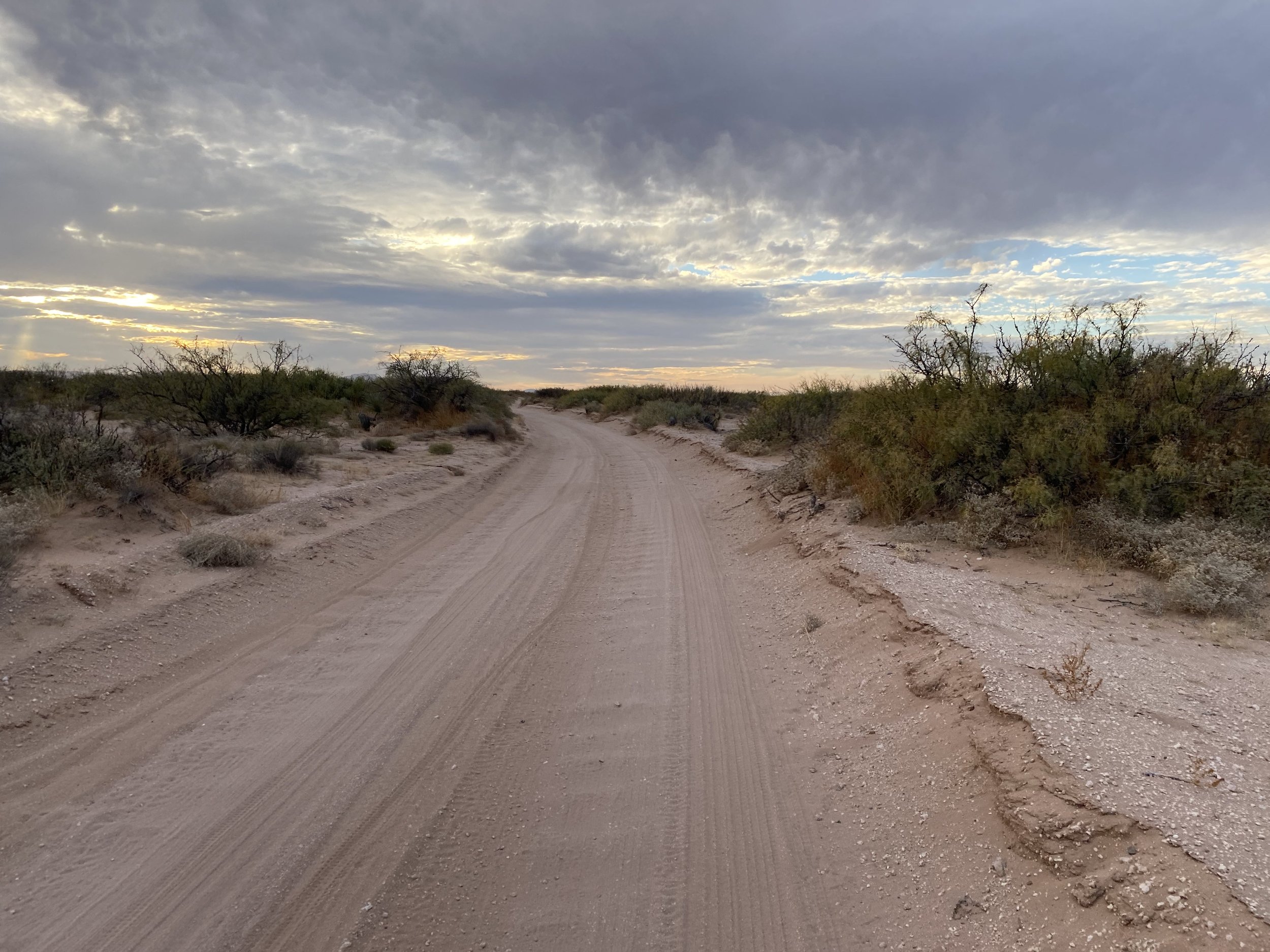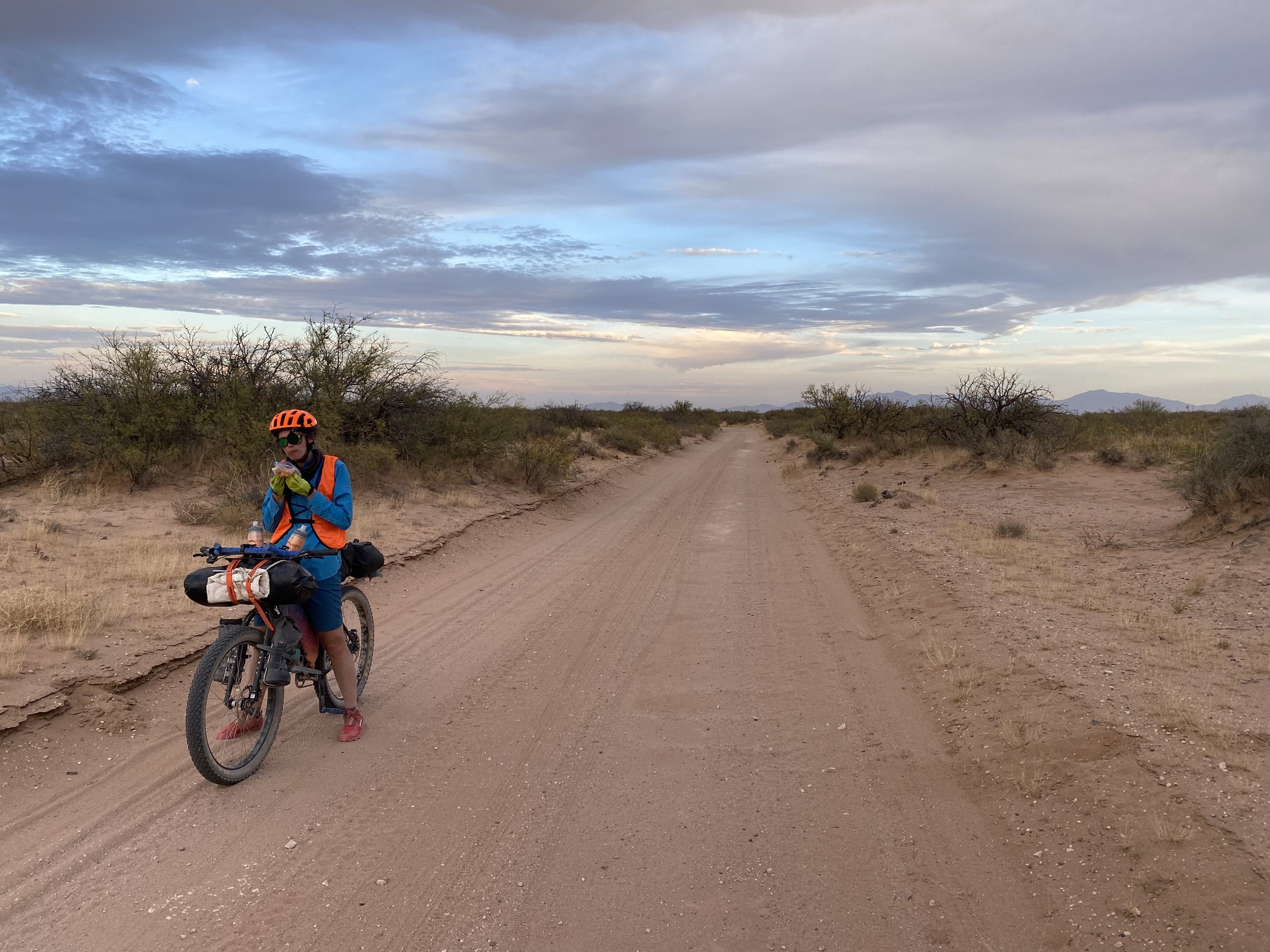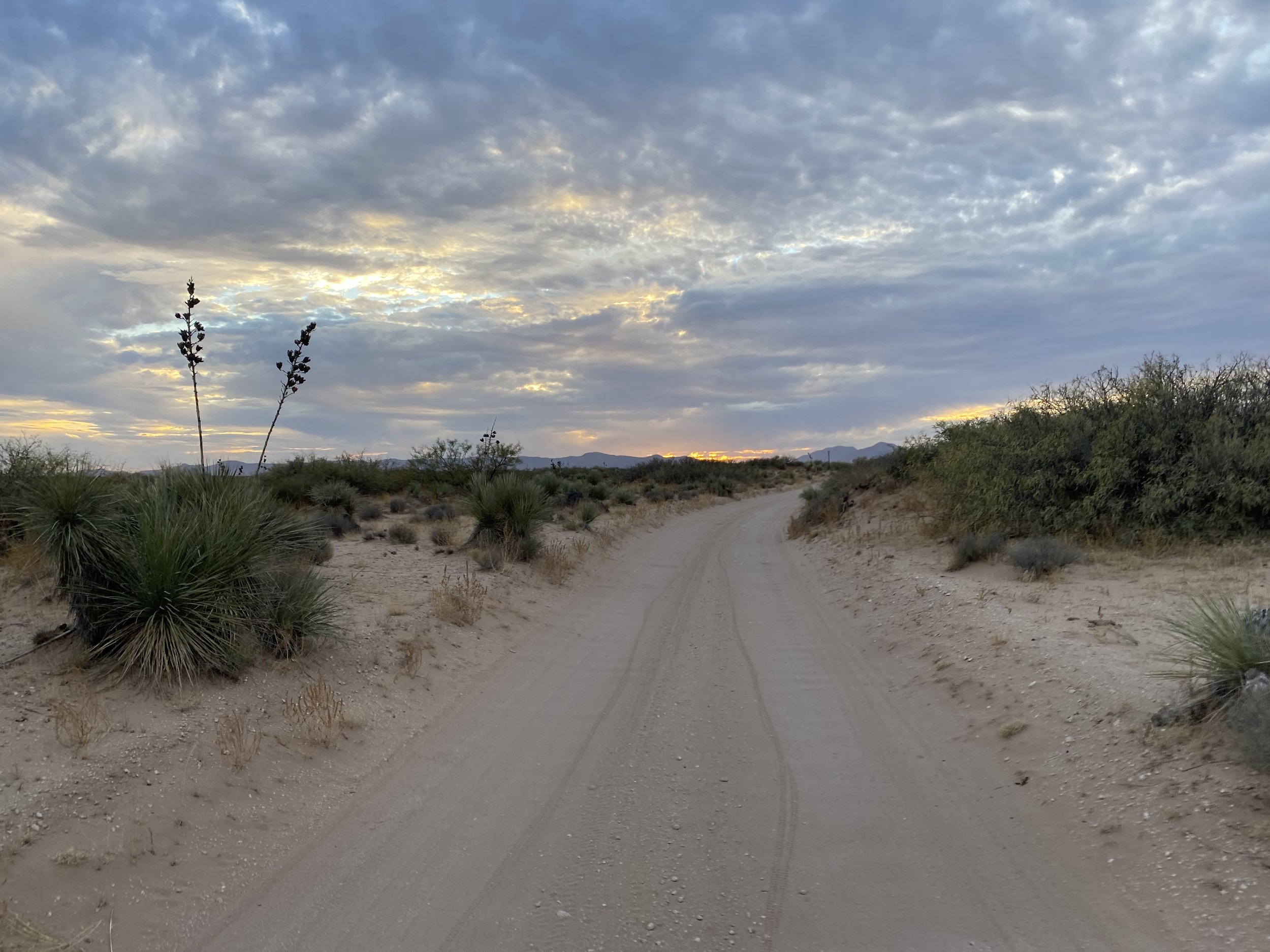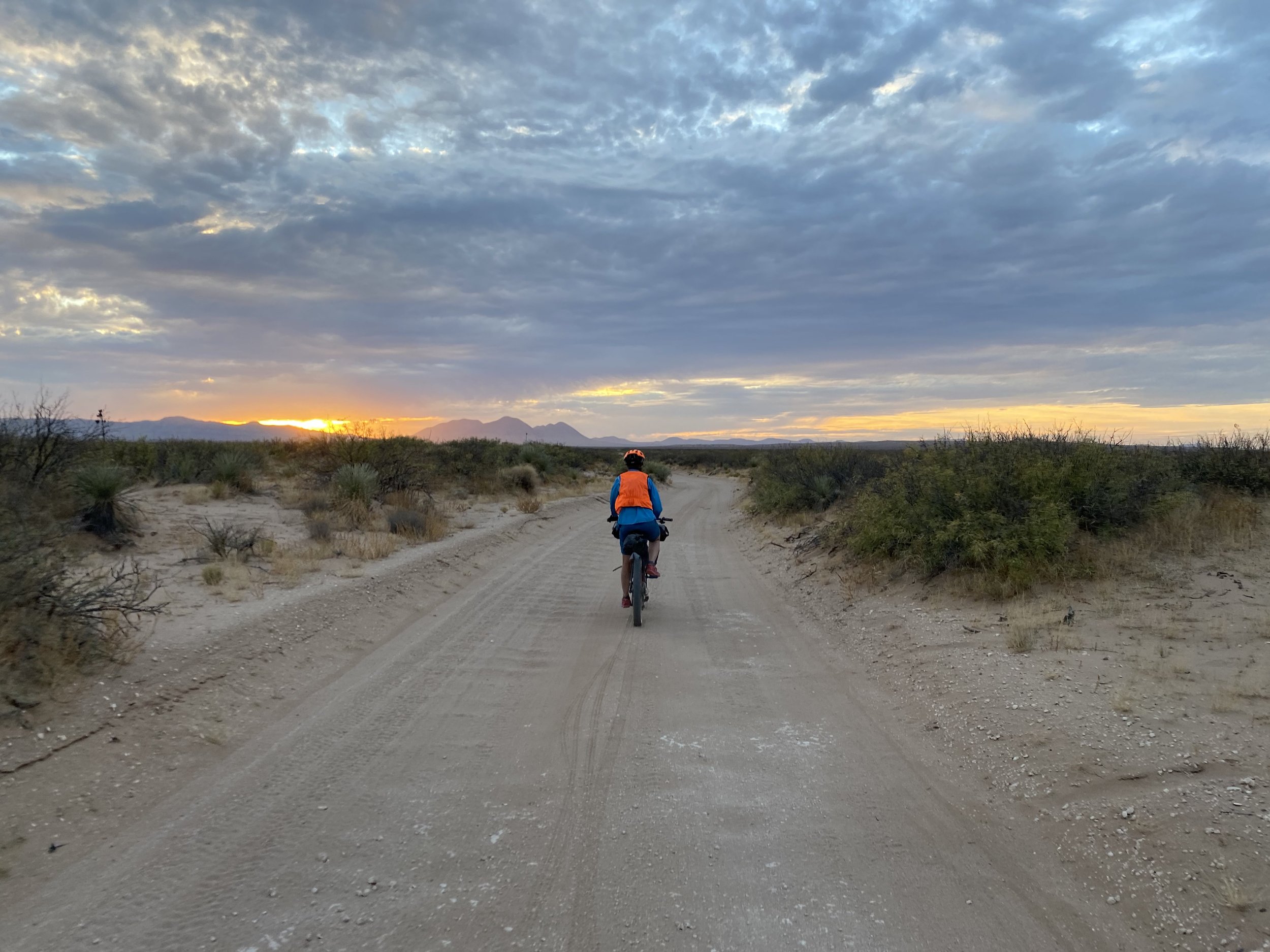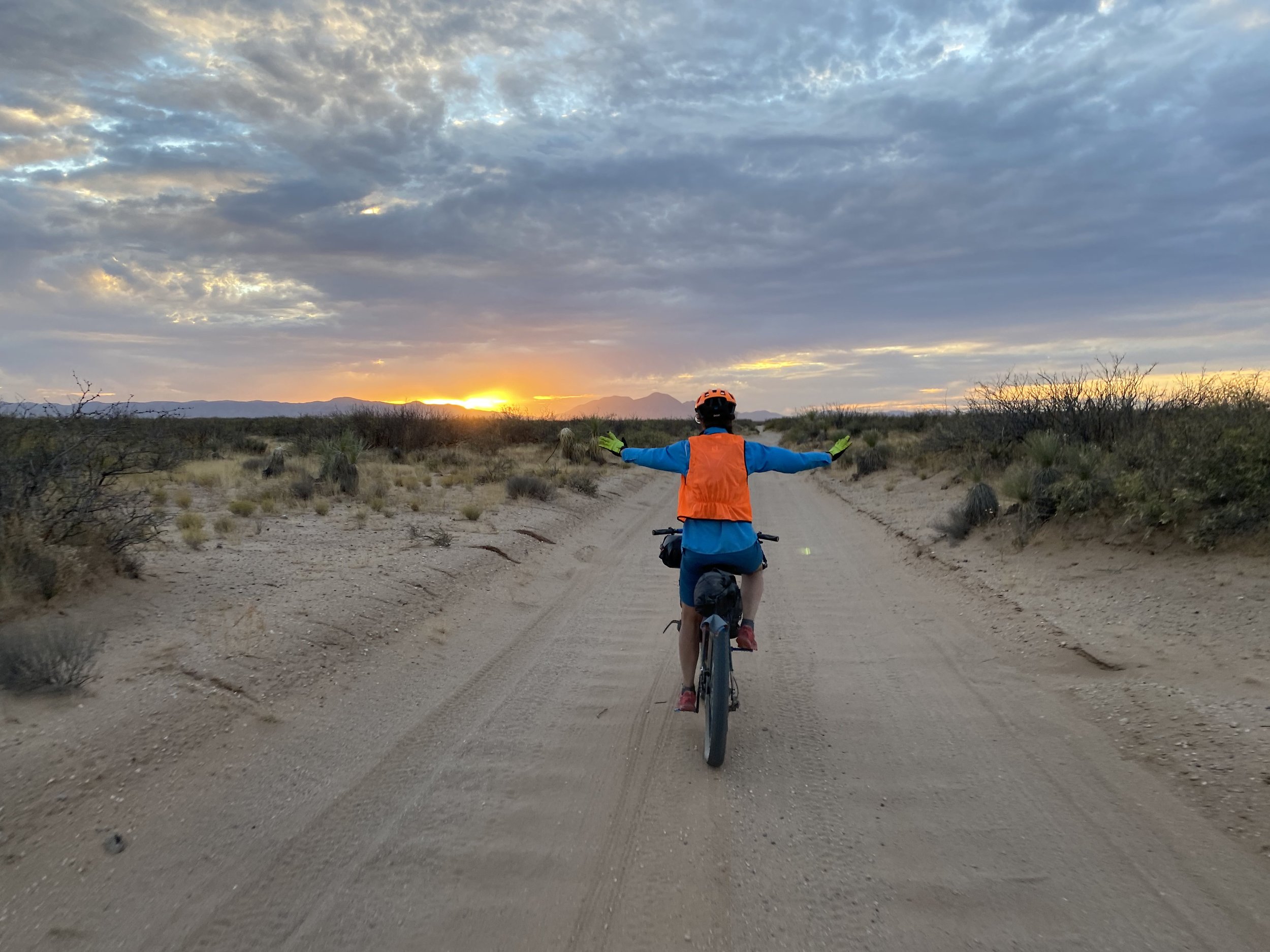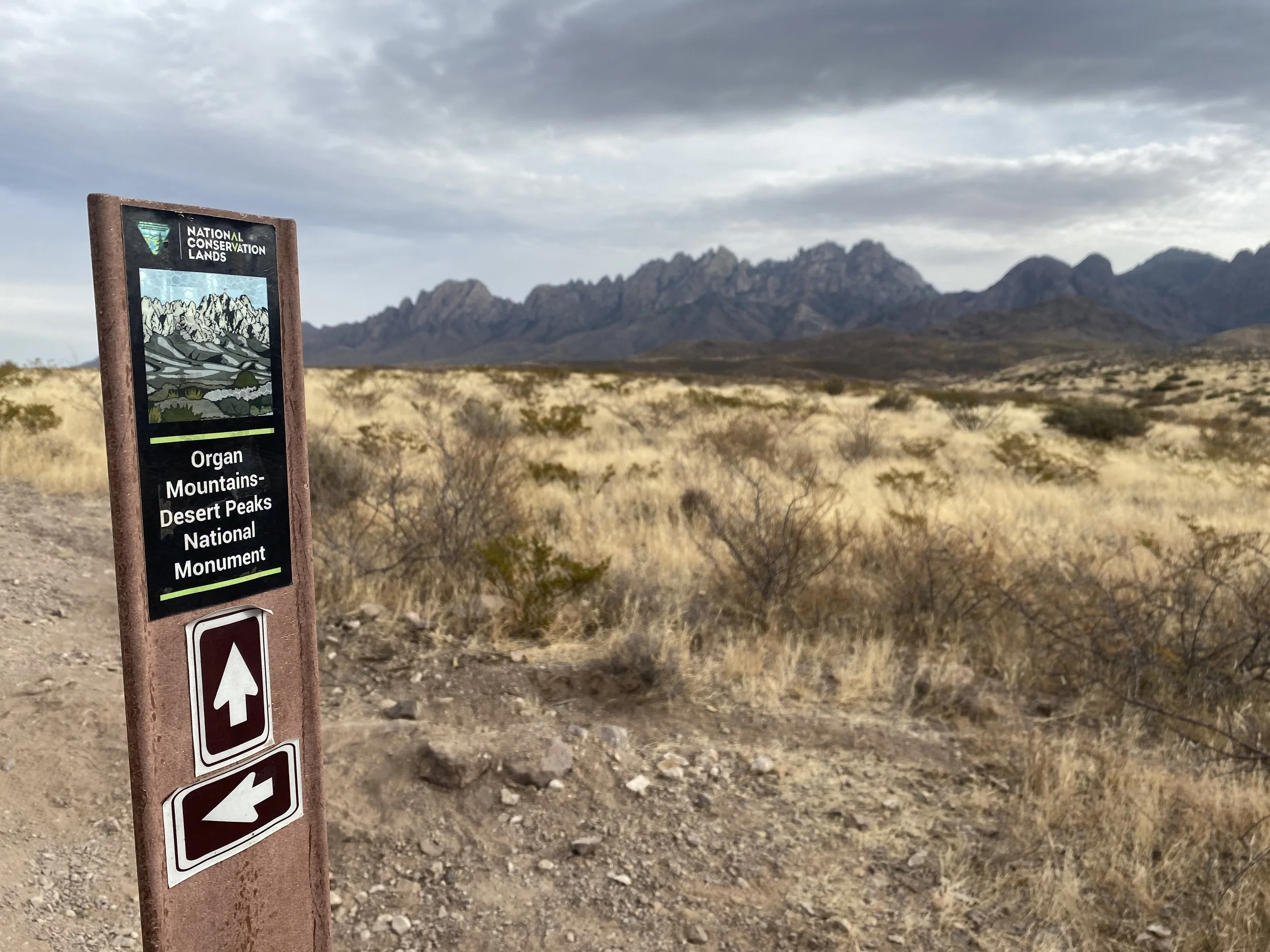Monumental Loop - Day 4 - The Sierra Vista Trail below the Organ Mountains
Date: November 23, 2021
68.6 Miles
Las Cruces, NM to Kilbourne Hole in Organ Mountains-Desert Peaks NM
We woke up pre-dawn at 5 am because we knew the day would be nearly 70 miles along with nearly 30 miles of singletrack. We rolled out in the glistening end of dark as first breath of dawn tinged the top of the horizon of the bowl Las Cruces sits in. We pedaled north out of the NMSU campus and joined a sandy uphill road. Luckily, this exertion got our metabolic heat pumping to fight the frigid 30-40 degree temperatures. Soon we passed a gate to cars and climbed right below the A on A-Mountain. The Sierra Vista Trail shot south from here, providing epic, rolling, curvy, and not-too-technical singletrack to mix up the experience.
Although the cloud cover was thick and washed the light to a faded quality, it made the Organ Mountain peaks we now rode directly below even more distinct and gorgeous. Janna and I both remarked that they reminded us of the mountains found in southern Arizona sky islands. All around, Christmas cholla were brightly fruiting their characteristic red bud fruits in contrast to the cholla's evergreen bodies. Golden grasses, granite-pocked peaks, jagged yuccas, and copious catclaw acacia lined the whole of the trail. After leaving the Sierra Vista Trail to ride a powerline road, we rejoined the trail proper outside a neighborhood. I could not believe how absolutely gorgeous the landscape looks backlit by the Sun and contrasted with the deep hovering clouds overhead.
The Sierra Vista wound directly towards the Organ Mountain peaks and then continued their trace along the roots of the range southward. I kept stopping to take a million photos from the stark and gorgeous high desert/grassland landscape. We passed a few mountain bikers day-riding in the opposite direction and a few hikers; but, we were shocked by the relatively few users found on the trail on such a gorgeous day. The miles rolled on punctuated by short hike-a-bikes up drainages intersecting the trail.
Once we crossed a parking lot for a main trail access point, the trail really began to become overgrown moving south. The vegetation began drier and thornier, and catclaw reached in large bands across the trail, ripping and shredding both my hands and legs as we passed. It was honestly the most catclaw I had ever seen growing in an area in my life - some of it seeming to stretch over entire foothills as the one visible species growing. The terrain became more barren, the granite and sandstone more exposed, and we started descending towards the I-10 and the Rio Grande. Suddenly, the Sierra Vista Trail spilled us onto the basin plains which were super flat and thick with dusty silt. We followed cattle-pocked singletrack until we met a paved road descending to the I-10 near Vado, NM. A couple of miles of dodging semis and other highway traffic bring us to the levee system along the Rio Grande which we jump on.
The cold morning has transitioned to a warm afternoon made even warmer by the direct sunlight. I can feel a strong sweat as we pedal the next 20 some miles down the levee. Most of the Rio Grande levee riding up to this point has been smooth, but this stretch is washboarded and coupled with notable headwind. We pass by pecan grove after pecan grove. The farms seem to all be patrolled by ranching dogs which vigorously pursue us as we approach their properties adjacent to the levee. Not only that, but we several groups of feral dogs that lounge on the levee. We walk our bike carefully between these small packs which only lazily bark lightly and don’t give chase luckily. We reach the end of our levee riding and cross into Anthony, Texas to get some food and water at a Family Dollar; we are now closer to El Paso, TX than to Las Cruces, NM.
With 8 liters of water ladled up on the bikes each (we won't hit a definite water resupply until we hit Las Cruces tomorrow evening), we cross back into New Mexico and snake through the town of Vinton and its streets made of flowed river silt. We pass out of town and begin a climb out of the bowl of the Rio Grande Valley and make our way on a sandy county road out towards the Potrillo Mountains and Kilbourne Hole in the last unit of the Organ Mountains-Desert Peaks National Monument. On the way out, a large group of longhorn cows stands defiant on the road, large bulls stamping their hooves on our approach. Janna does her best "Heartland" impressions to get the cows moving and they quickly break into a run across the road to allow us through. Miles later, we hit the relatively flat expanse of high Chihuahua desert and hit some dreamy dirt roads along with a slight tailwind. Winter evening is rapidly moving in and we realize we won't make it to our campsite before sundown. We switch on lights, make headlamps accessible, and push on. Framed around the distant Potrillo Mountains, the sun sinks behind the clouds and bursts forth a smatter of color only winter deserts can provide.
The loss of sun coincides with the loss of wind. Before leaving Vinton, I had checked the weather and noted that large cold front/low pressure system would be moving in tomorrow at some point and definitely the day after. But now, the air is calm. We pull up to the Kilbourne Hole as whatever light left at civil twilight is draining form the sky. The Kilbourne Hole is an ancient volcanic crater where some of the Apollo missions did astronaut training prior to their launches for the moon. The route on Bikepacking.com urges us to take a side dirt road loop that takes us onto a peninsula of land jutting ride above the cradle. The temperature is warmish and still. The night is deep and settled. The peninsula narrows to just 15 feet across before crumbling into the crater below. We found a relatively flatish spot and spend 20 minutes with our headlamps on manually picking up broken glass beer bottles and spent ammo shells and moving them away from where we'll pitch our tent. We can't see the crater in the darkness, but we know it spreads out and around us from where we camp. Usually, I don't camp in such an exposed, high, and wind-prone spot, but the location just seems so beautiful. The near-distant glow of El Paso bushes in the dark distance. Somewhere across the crater sea of dark, a single noticeable and repeating light flickers diligently in the dark. We climb into the tarp and fall asleep in the soup of absolute silence.
